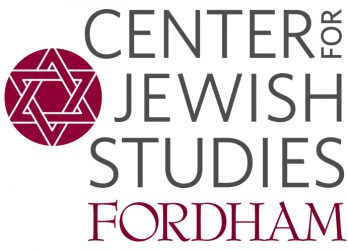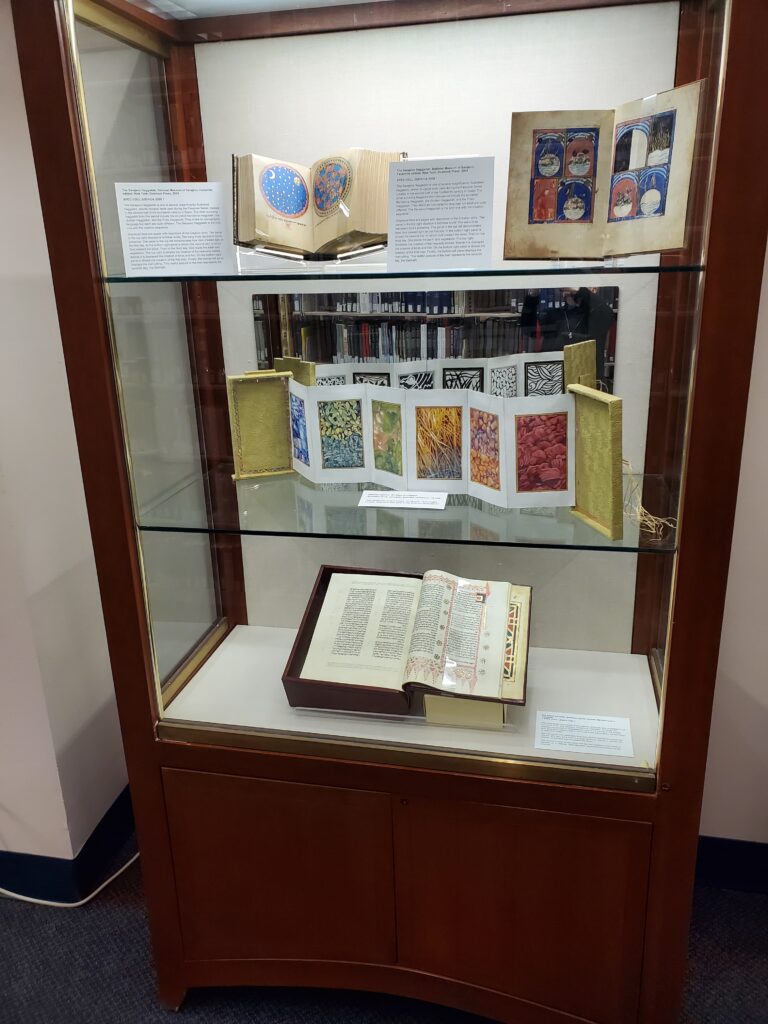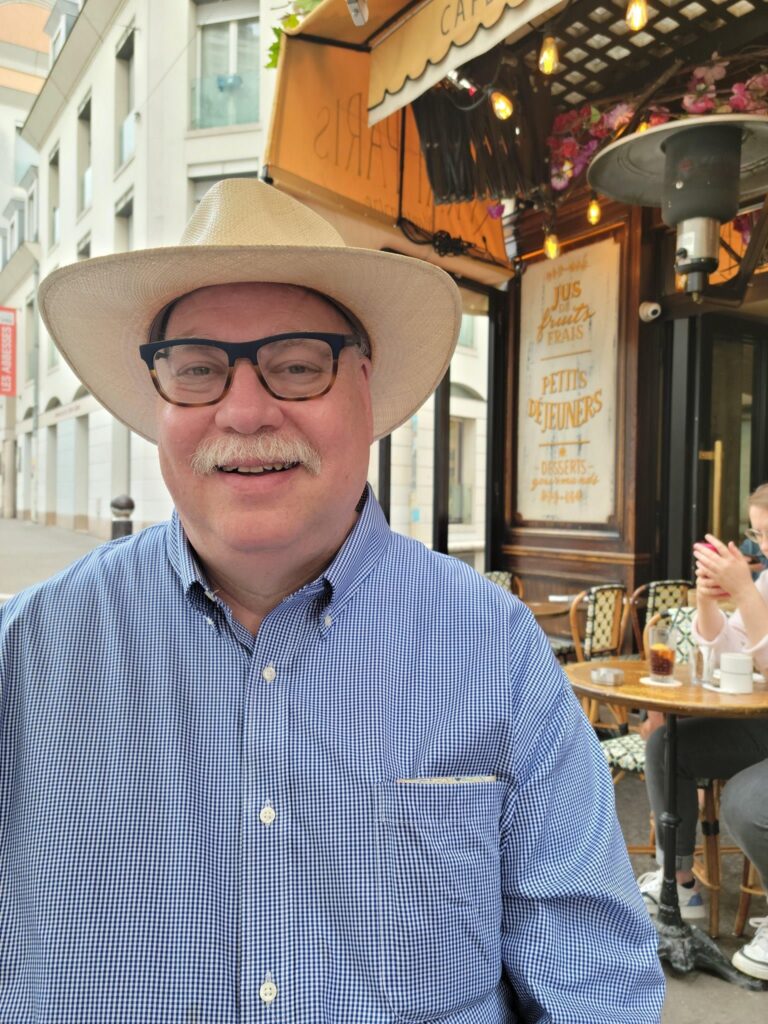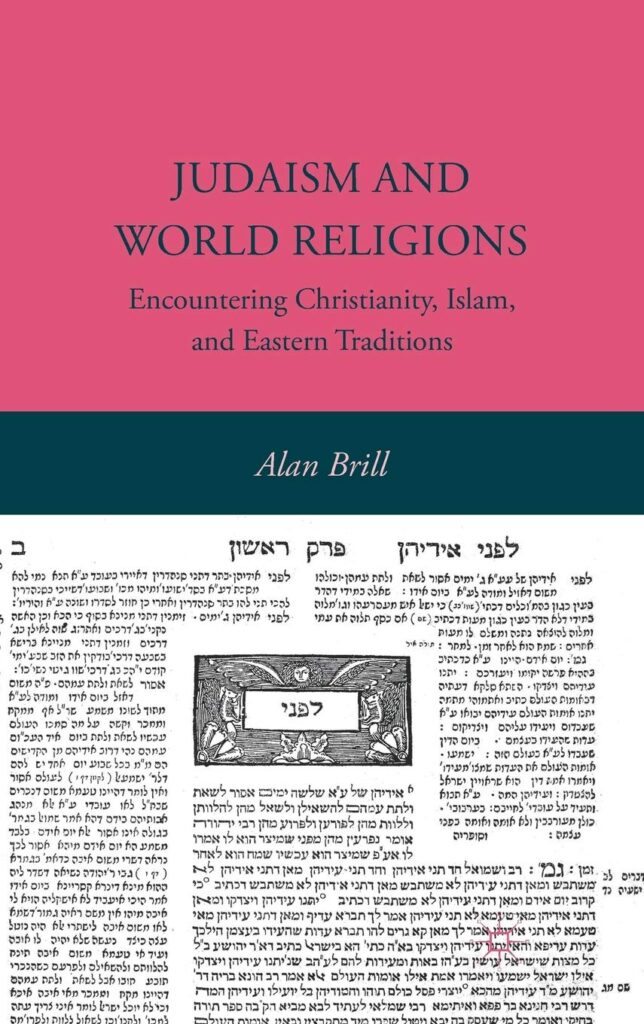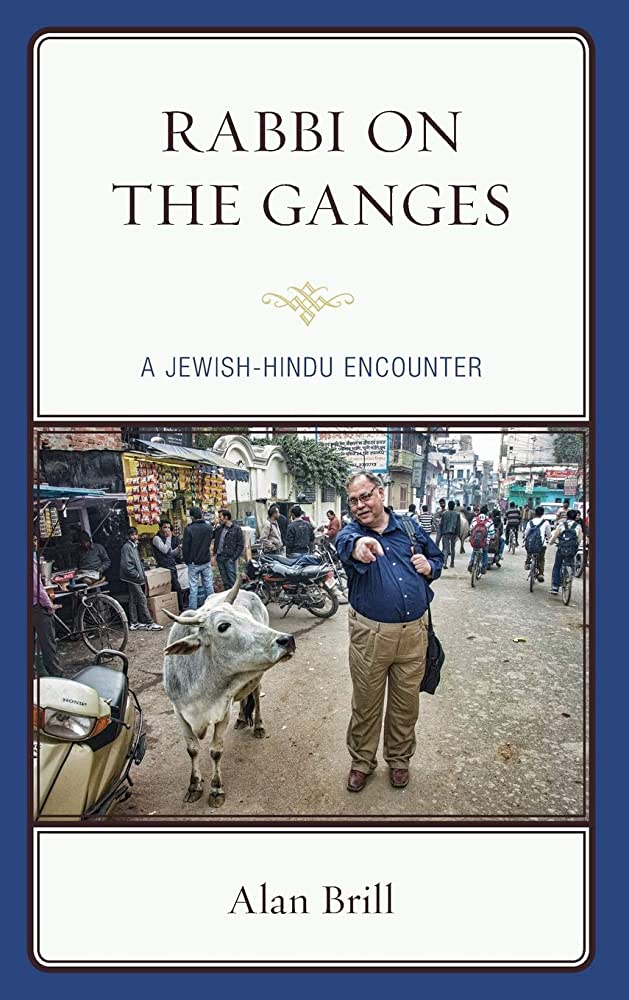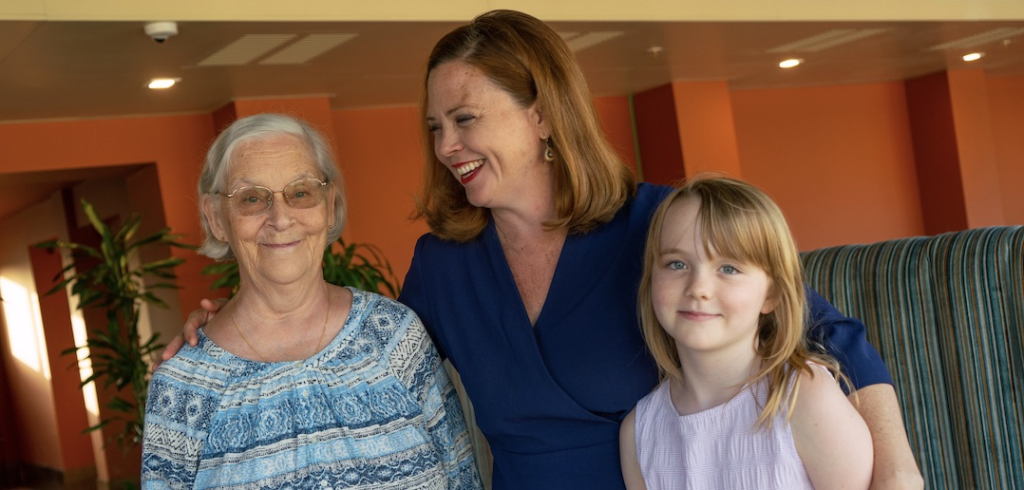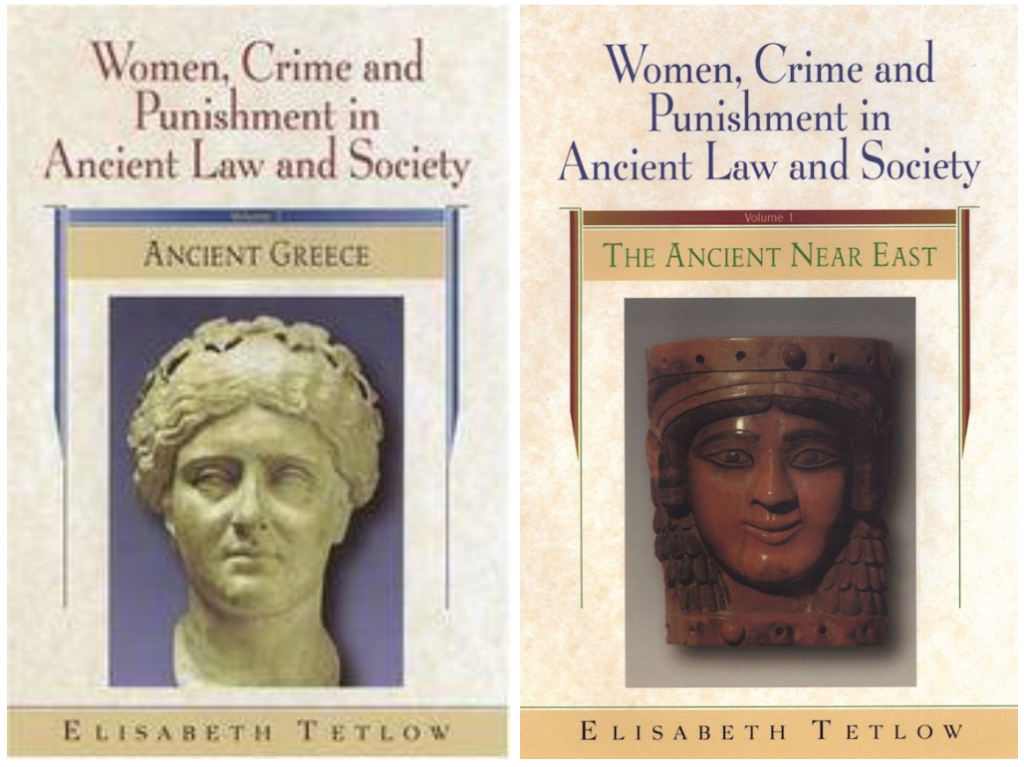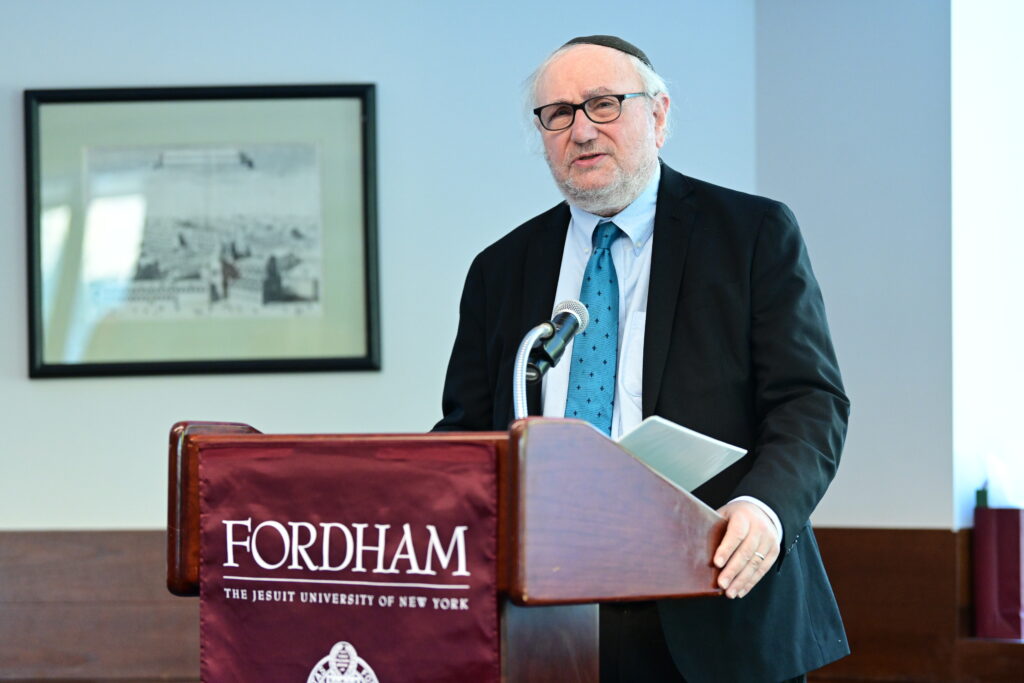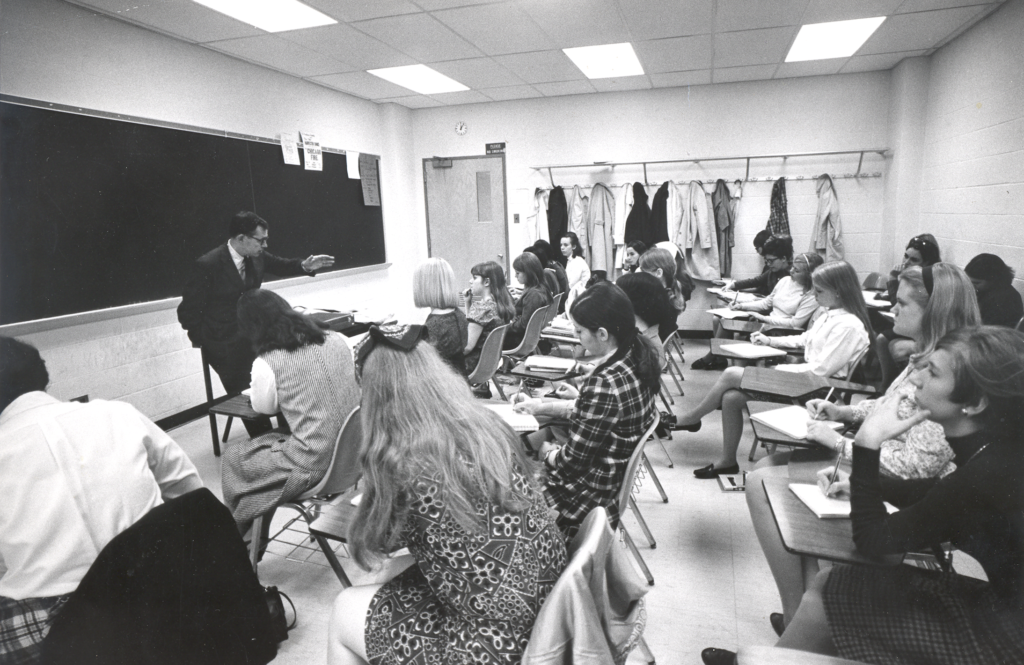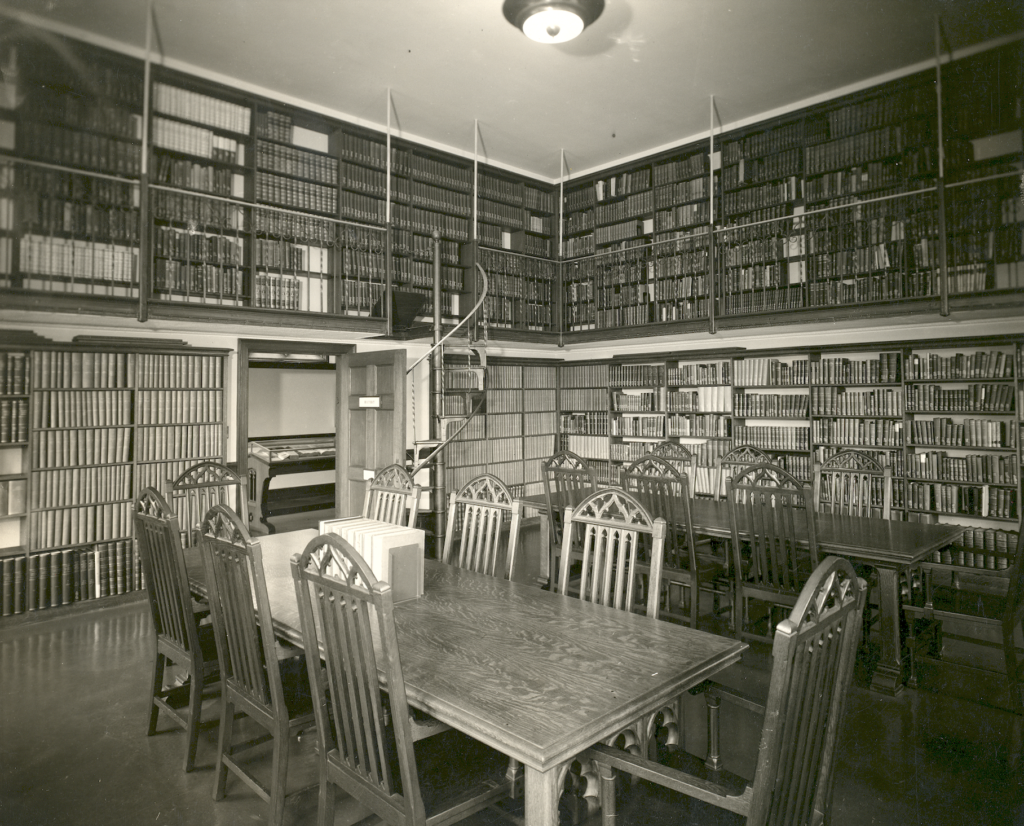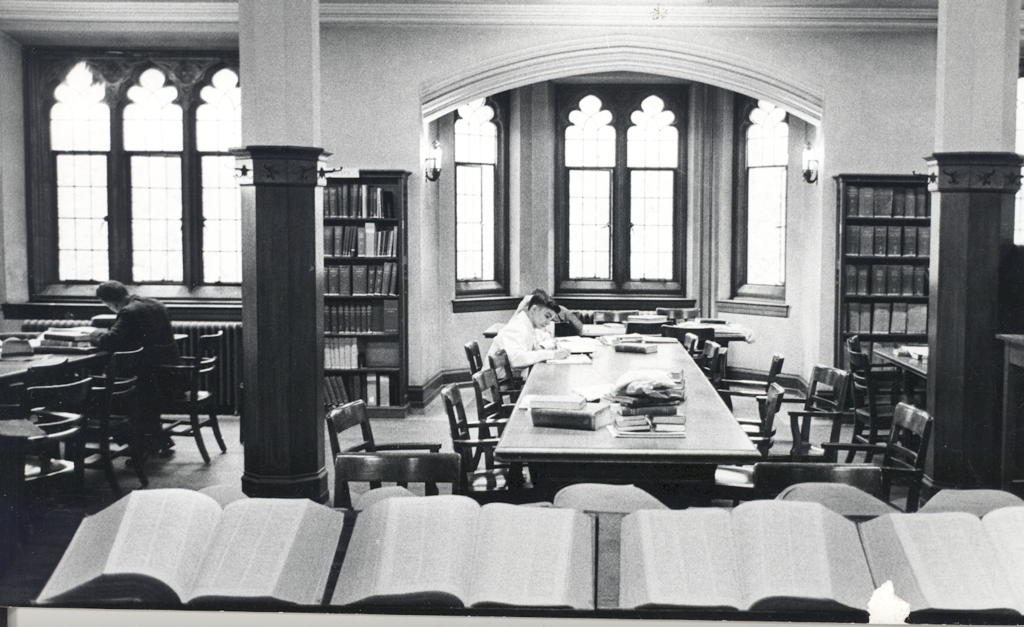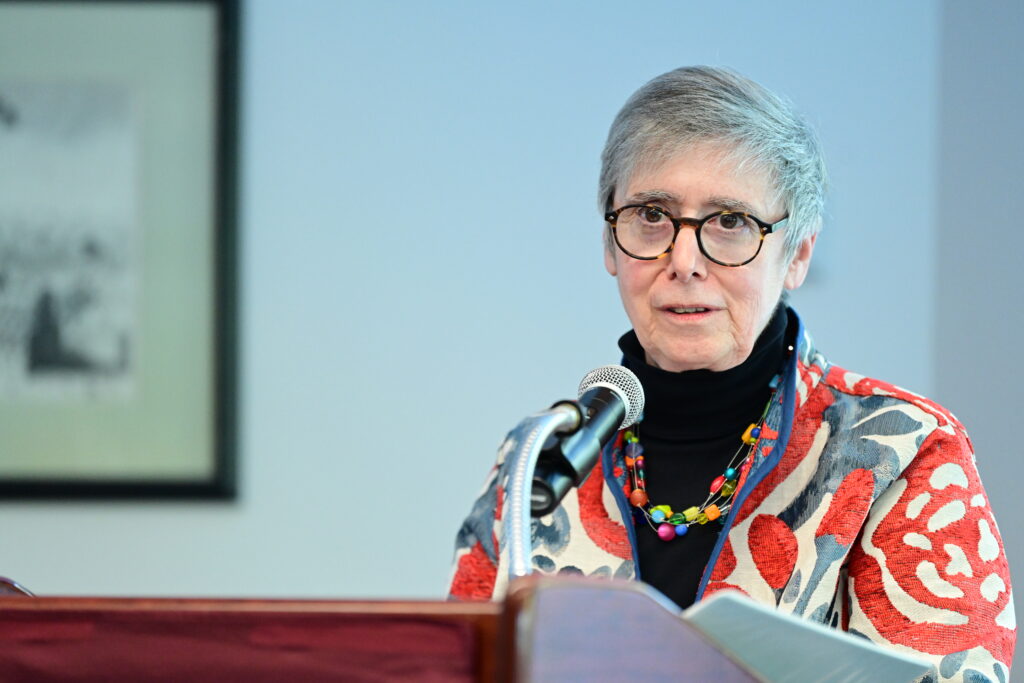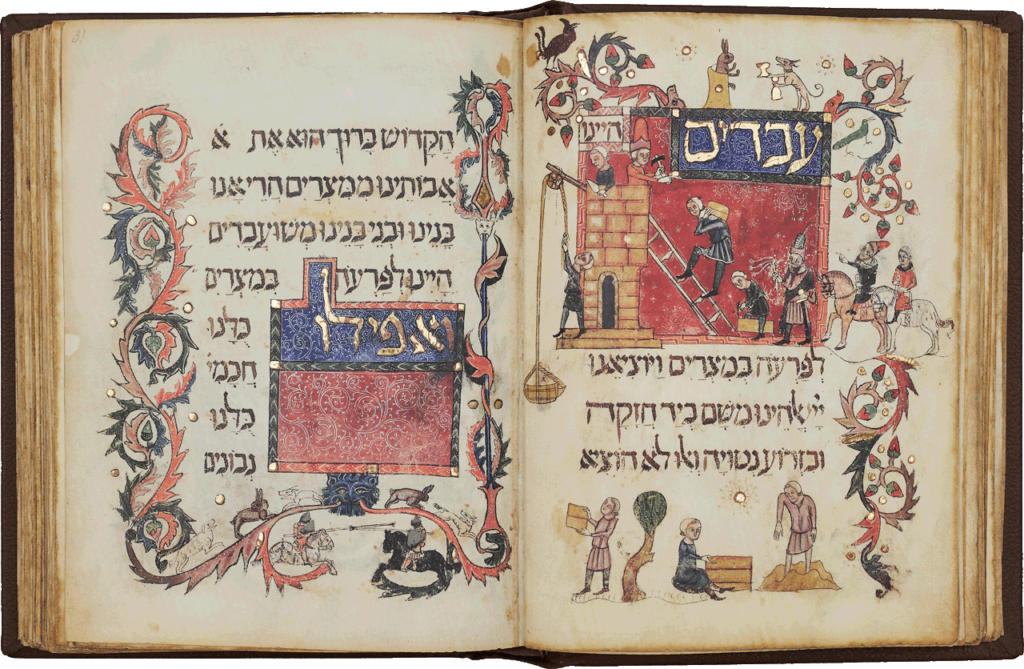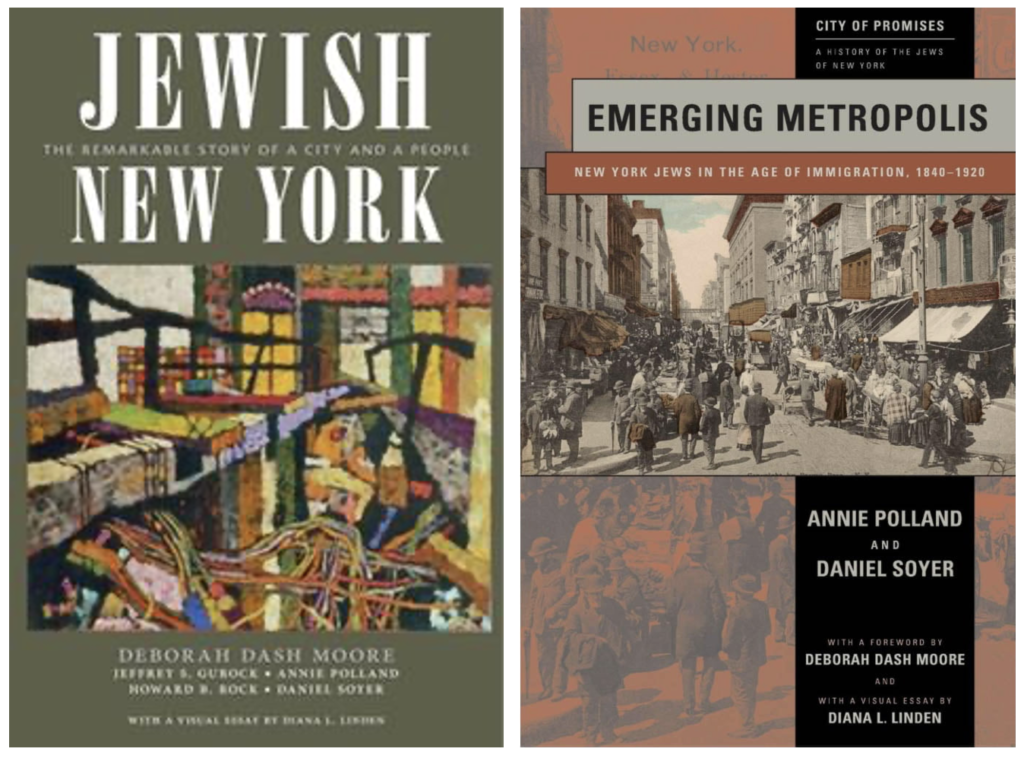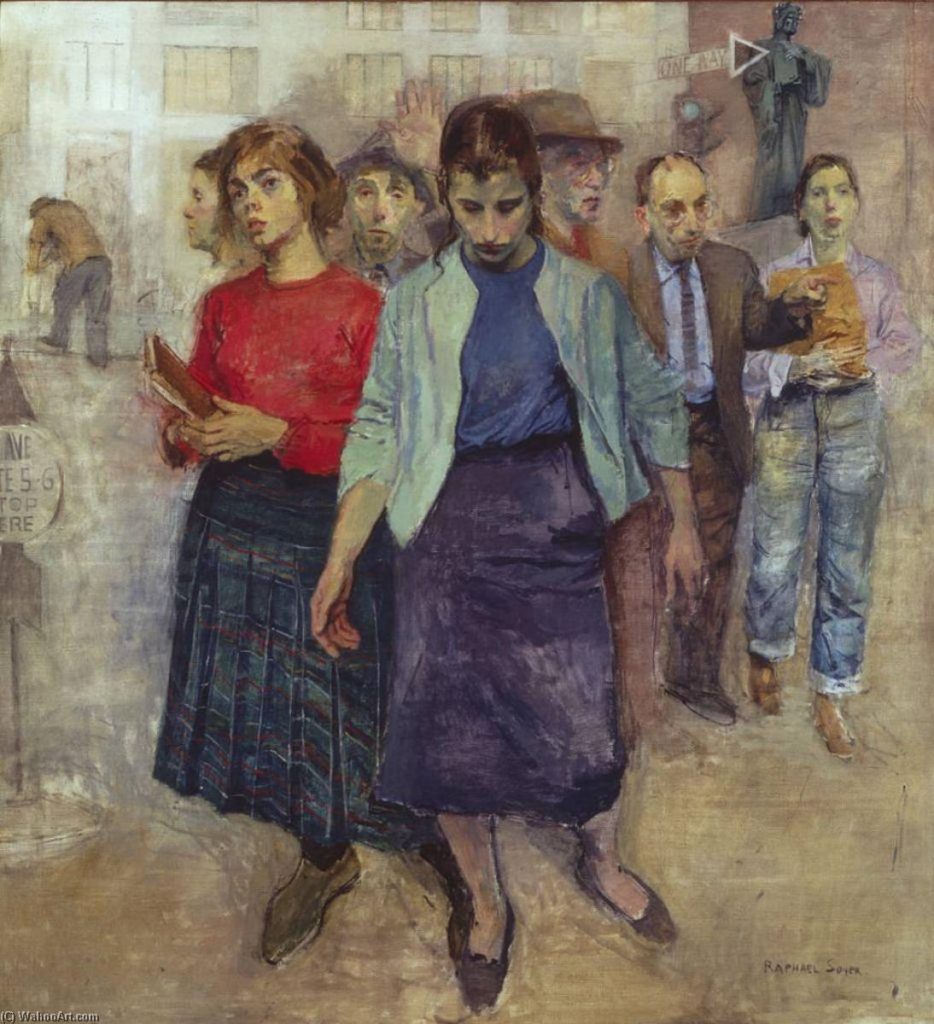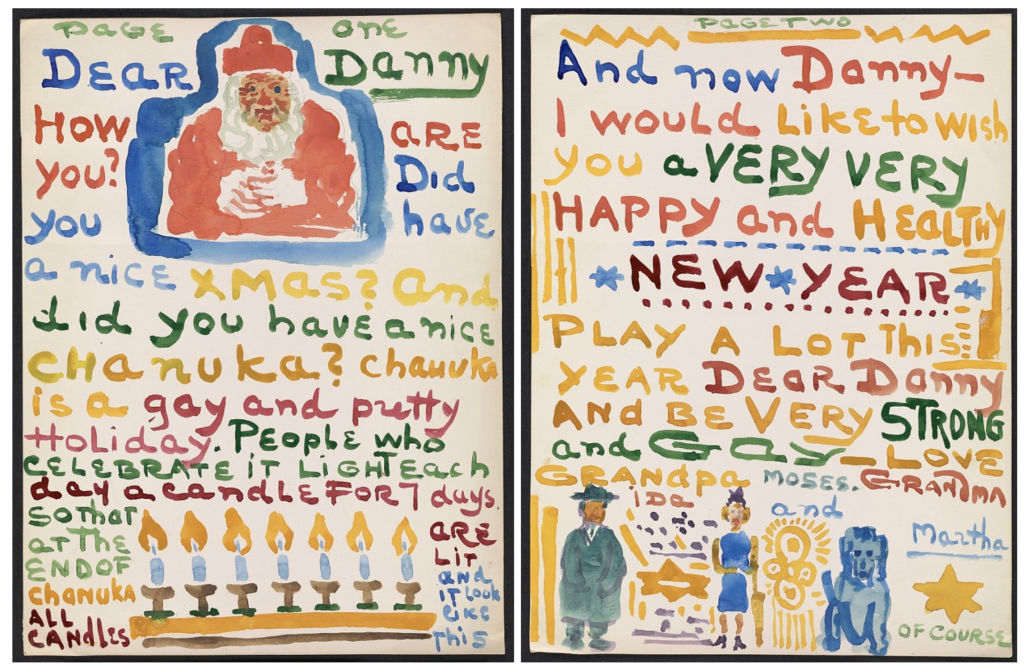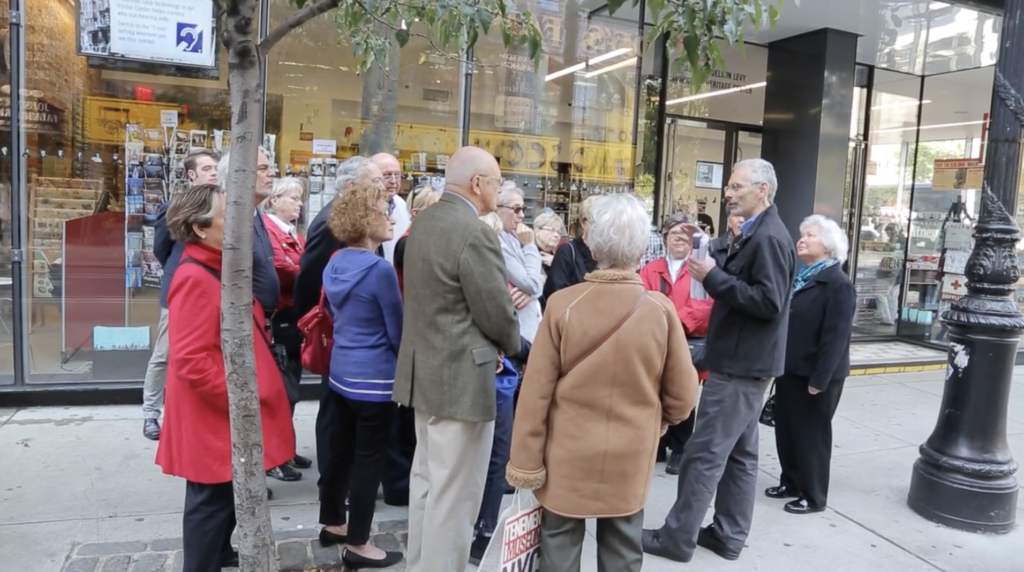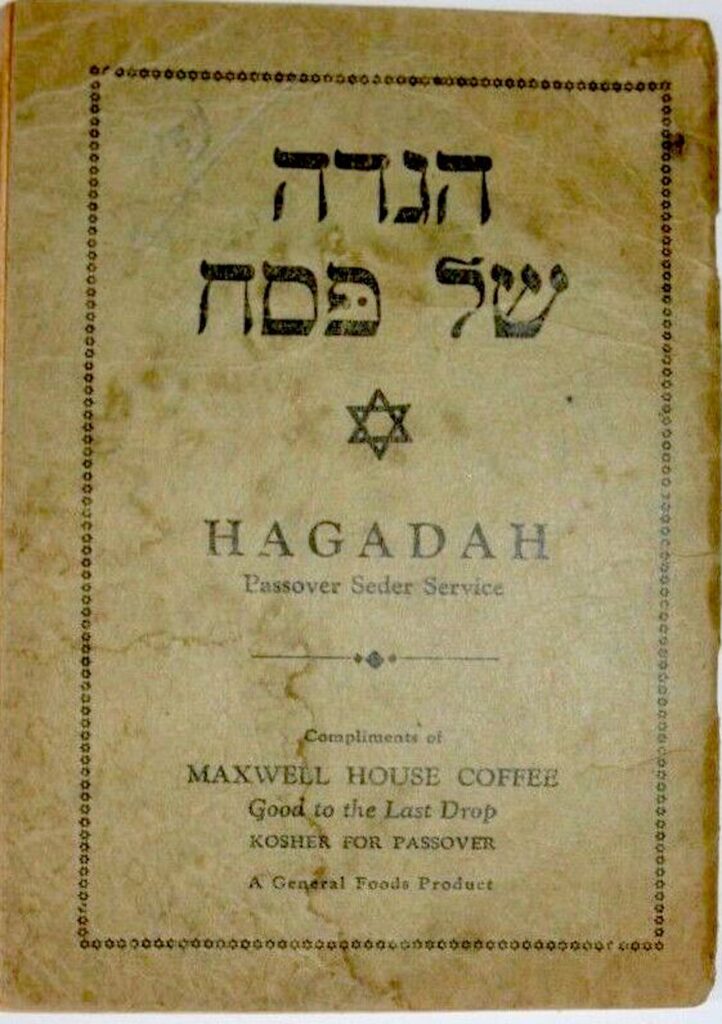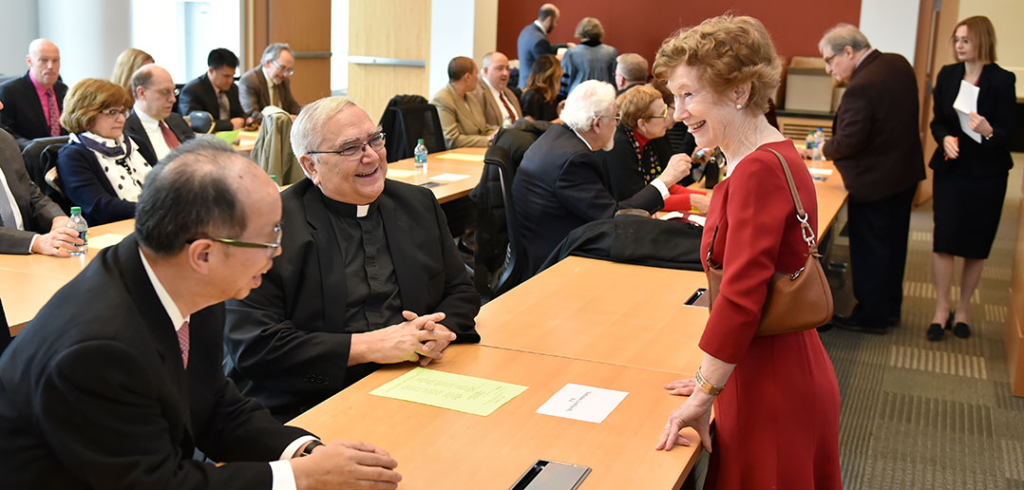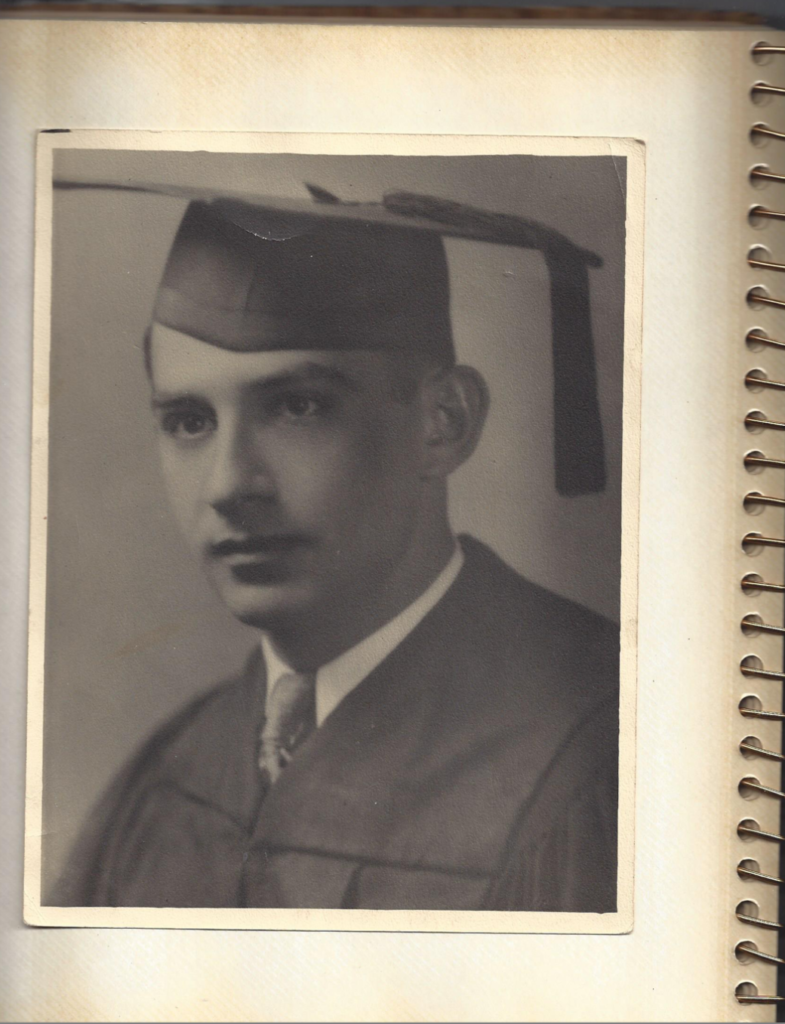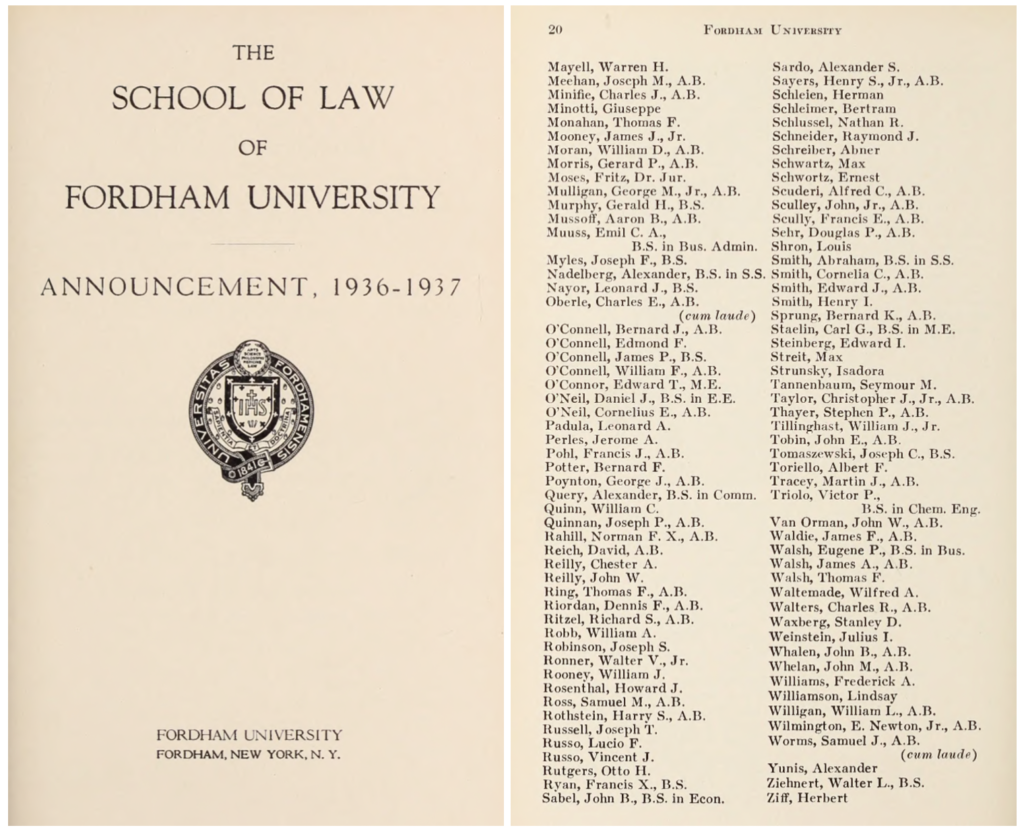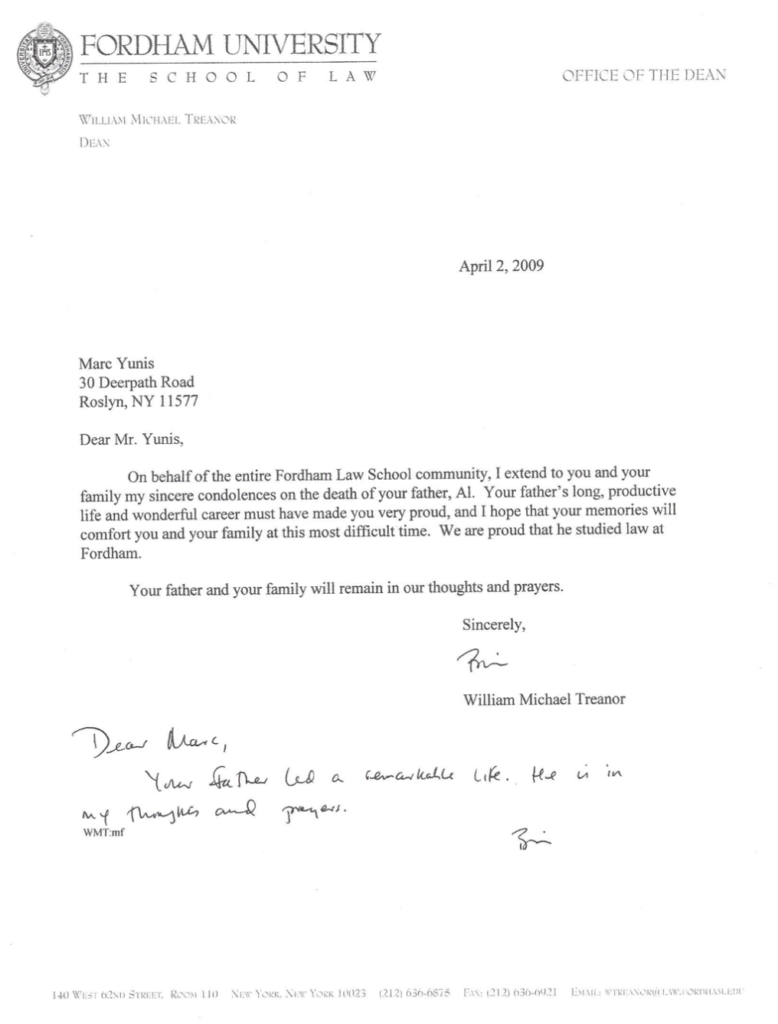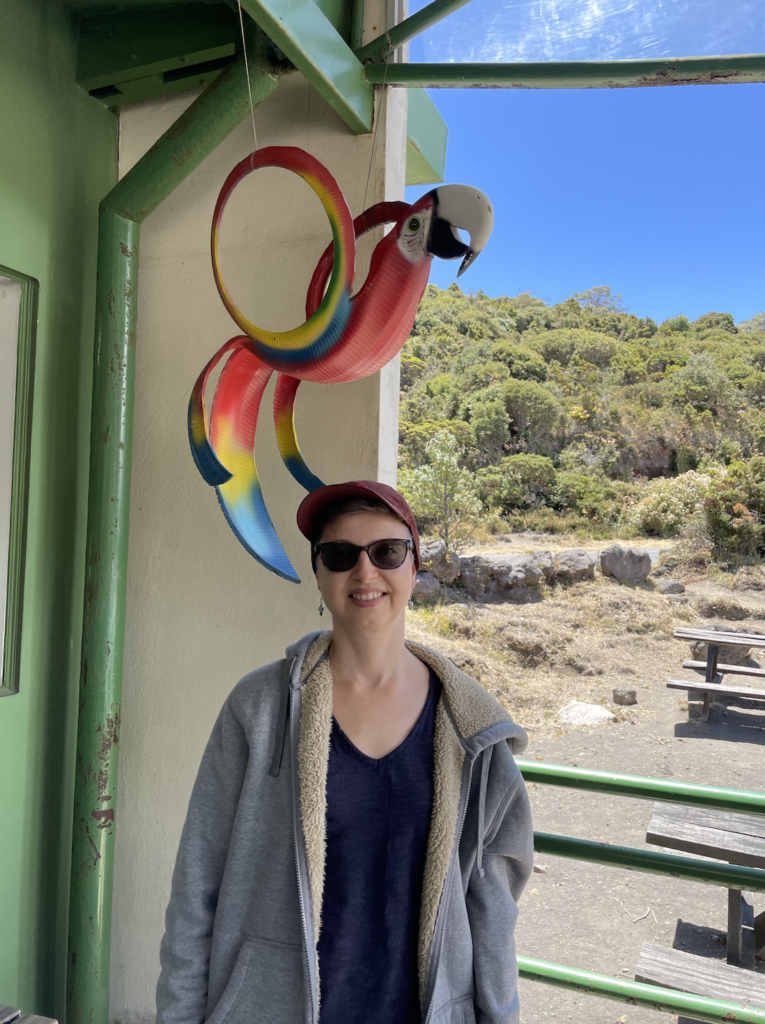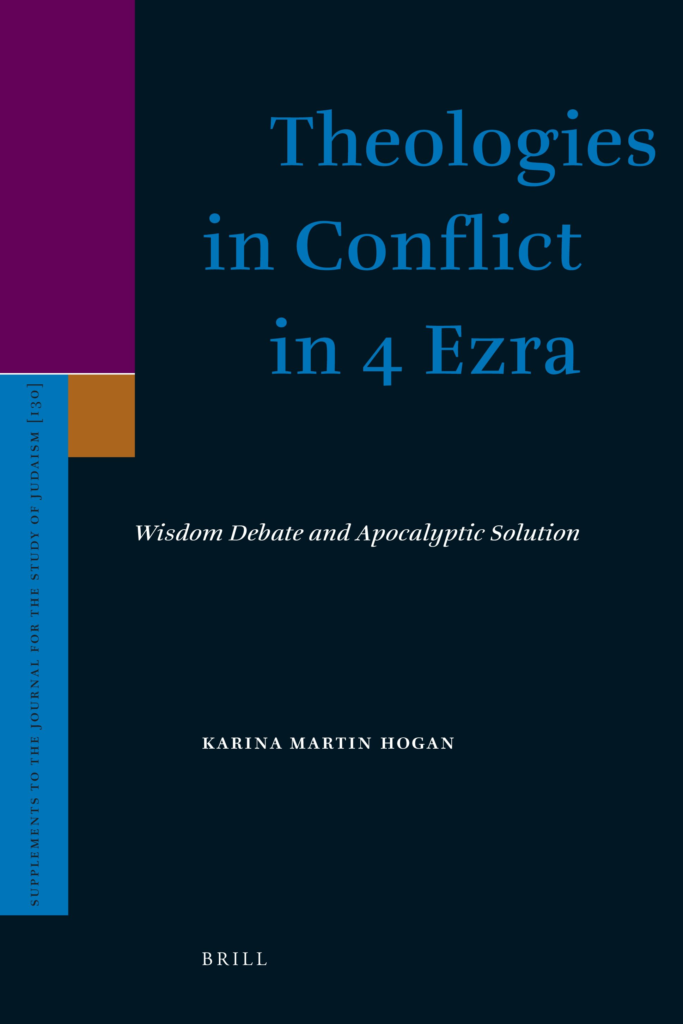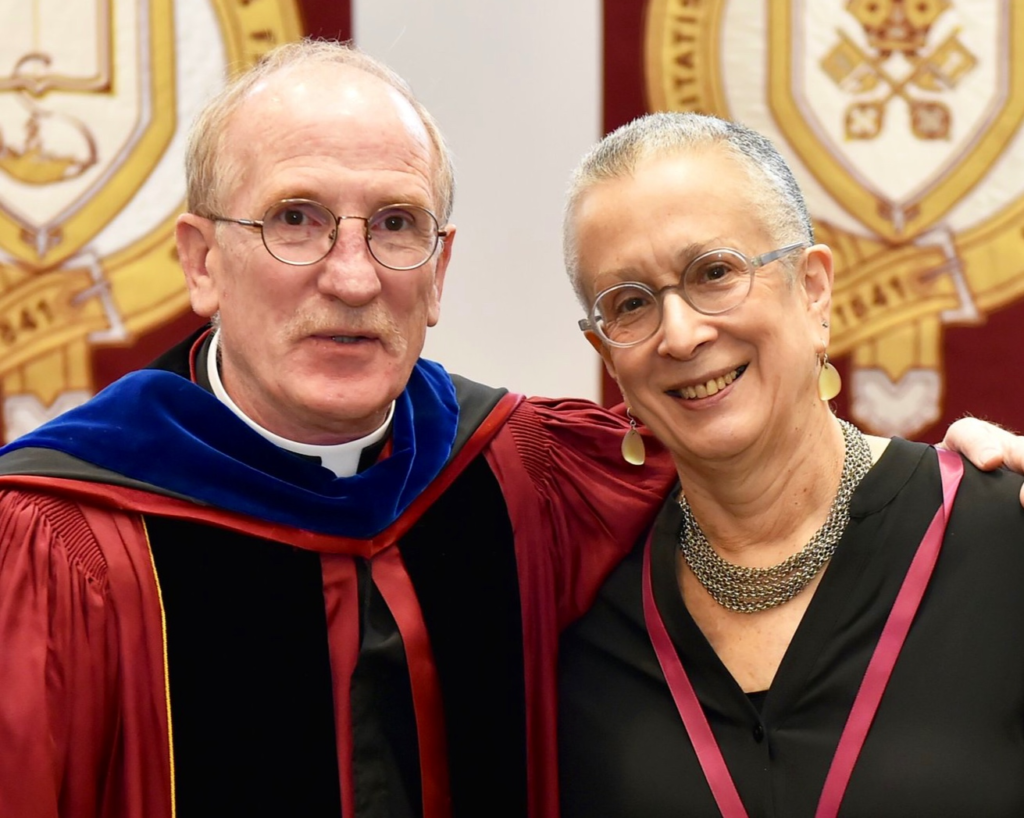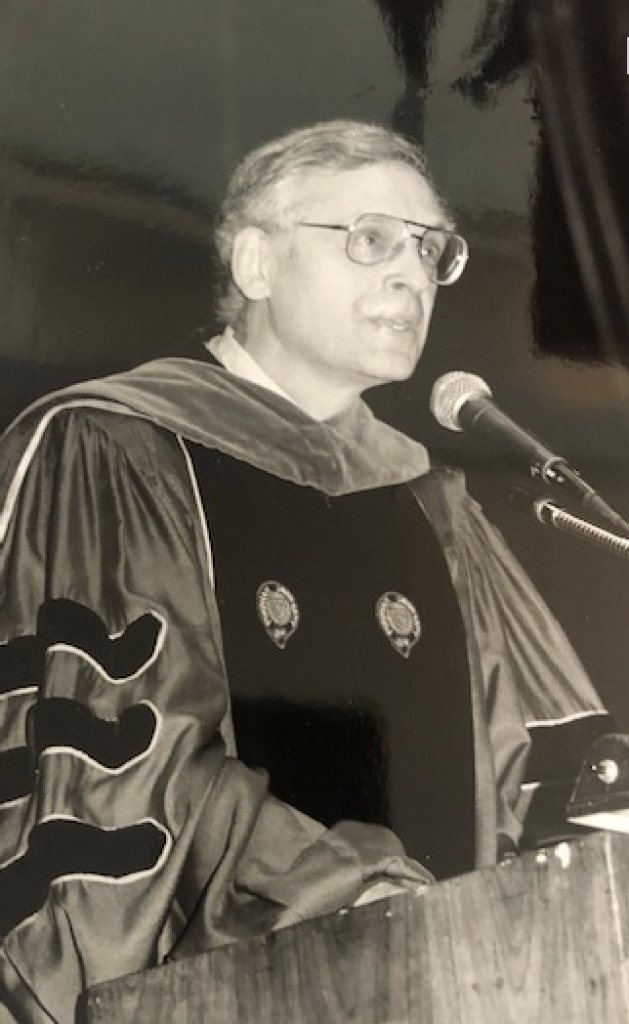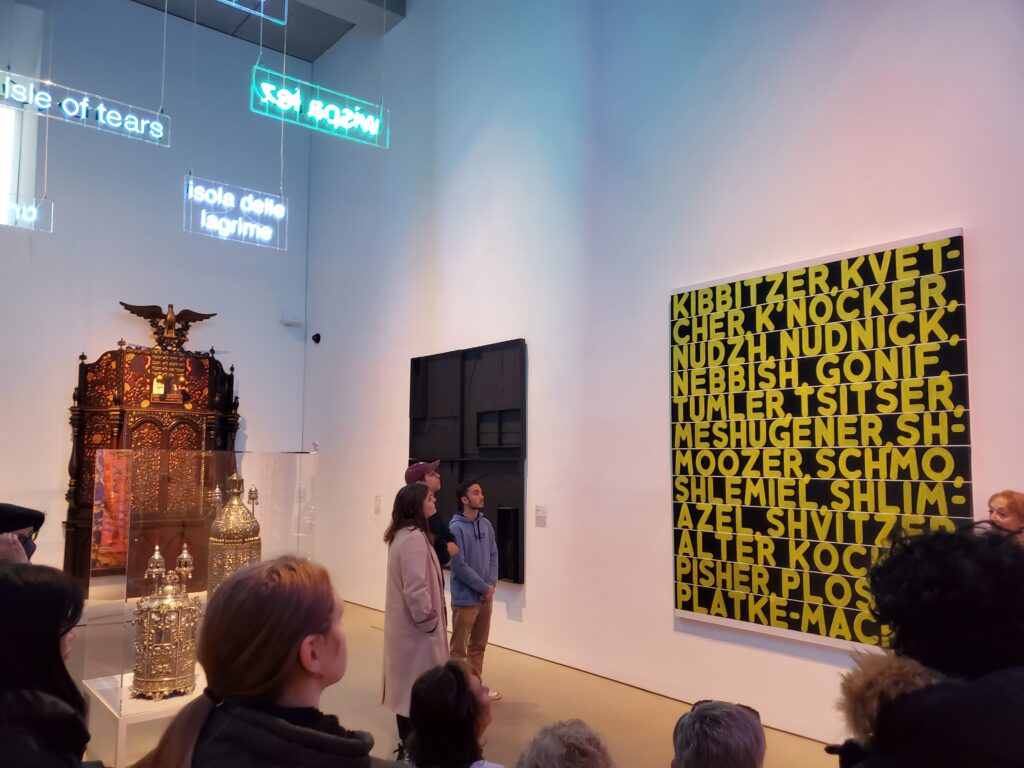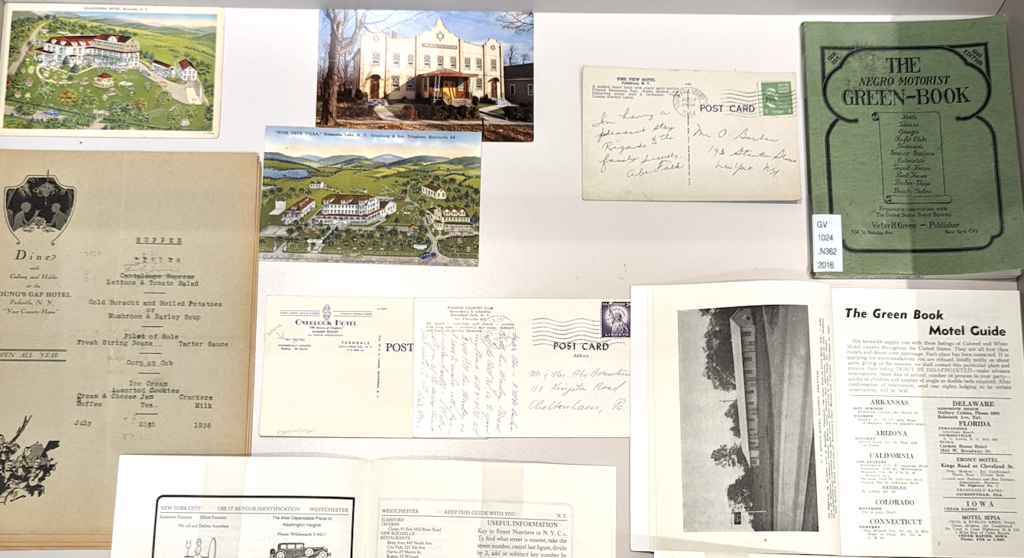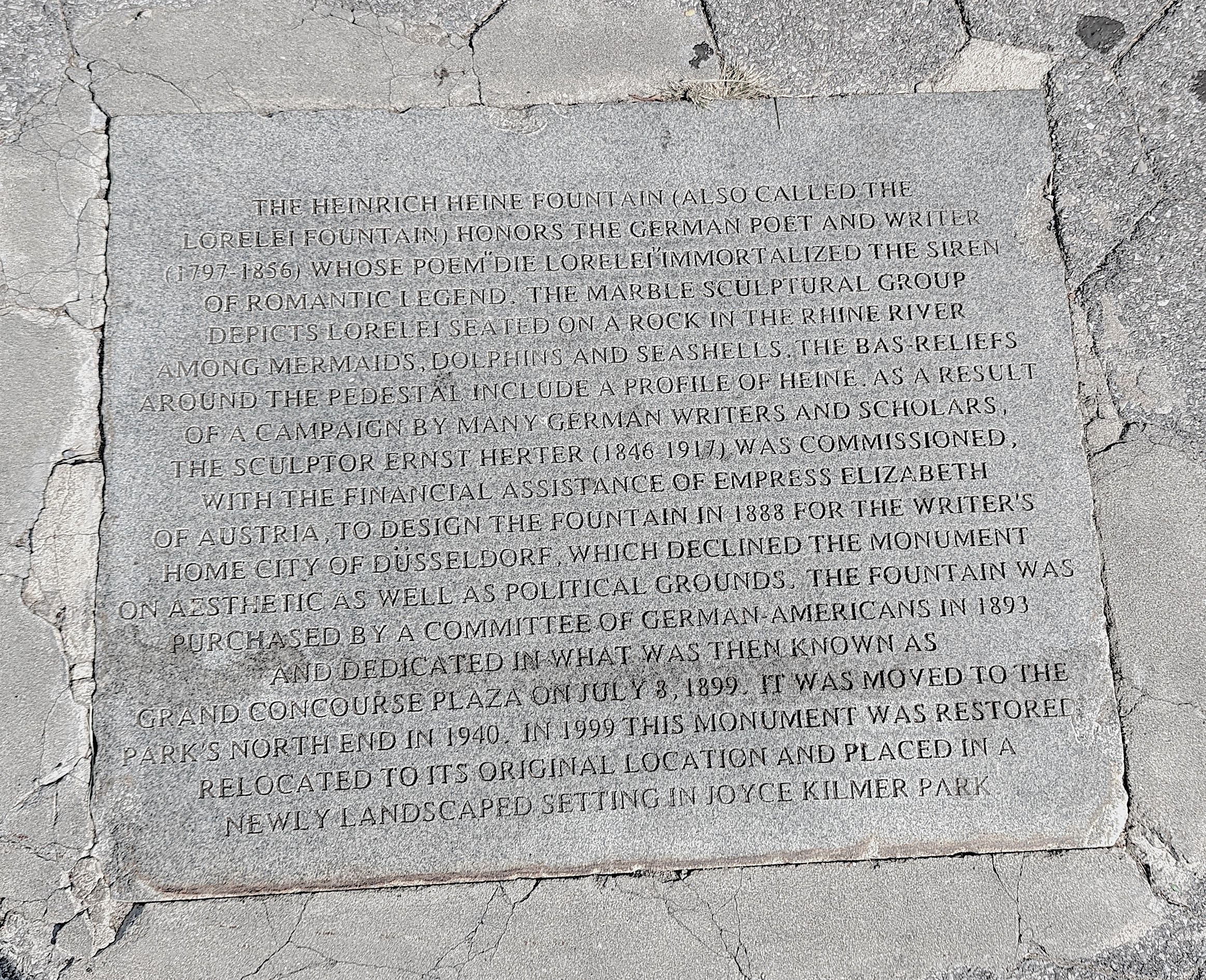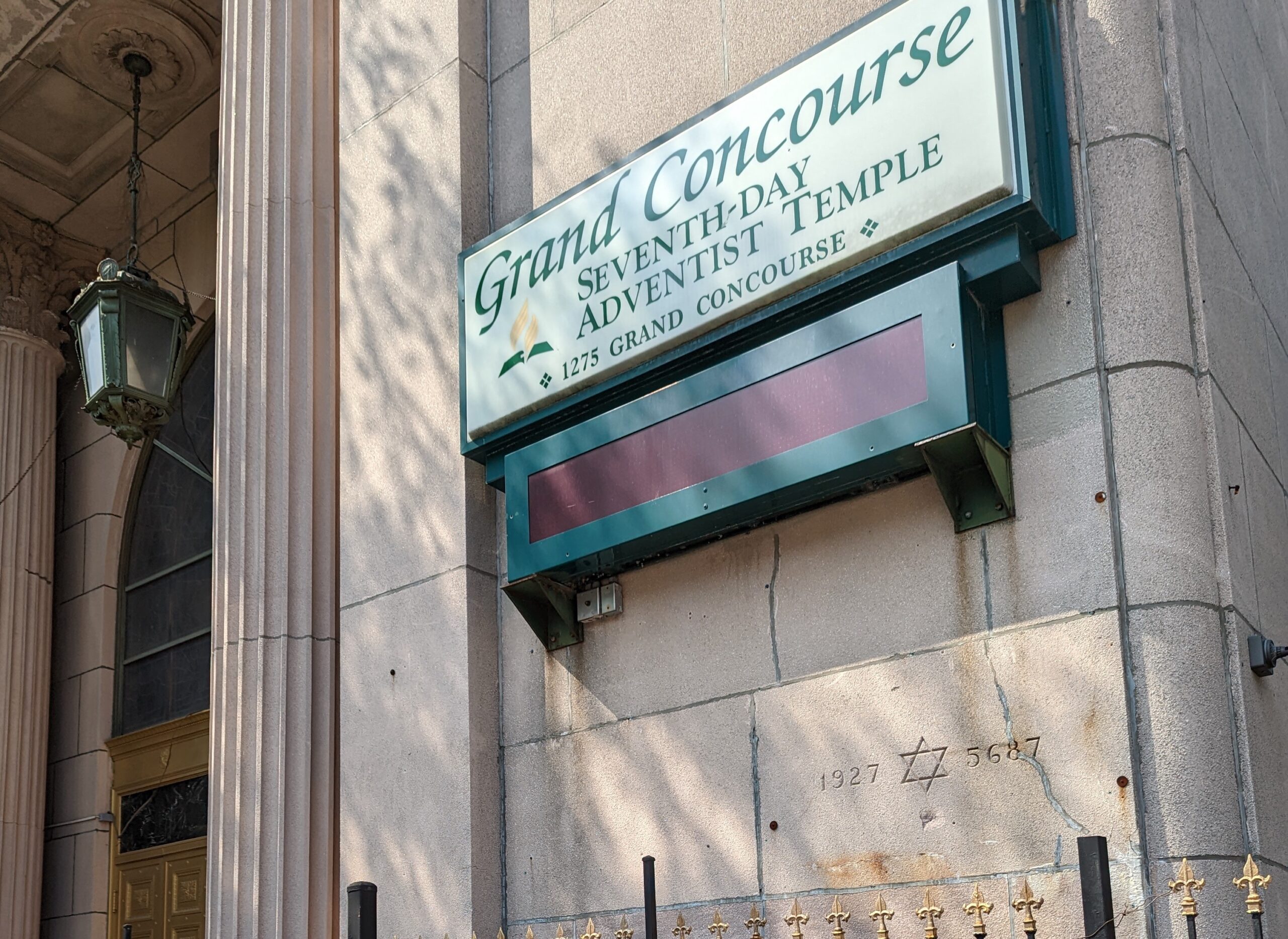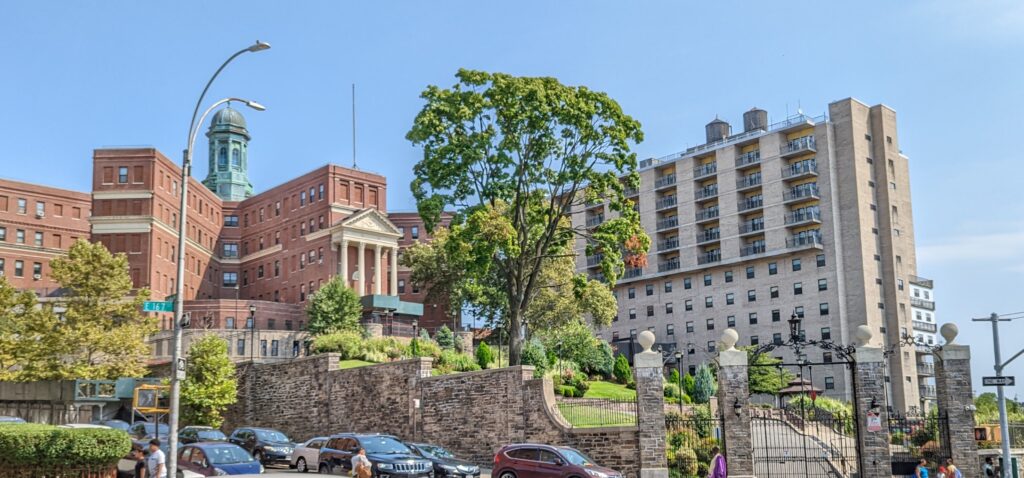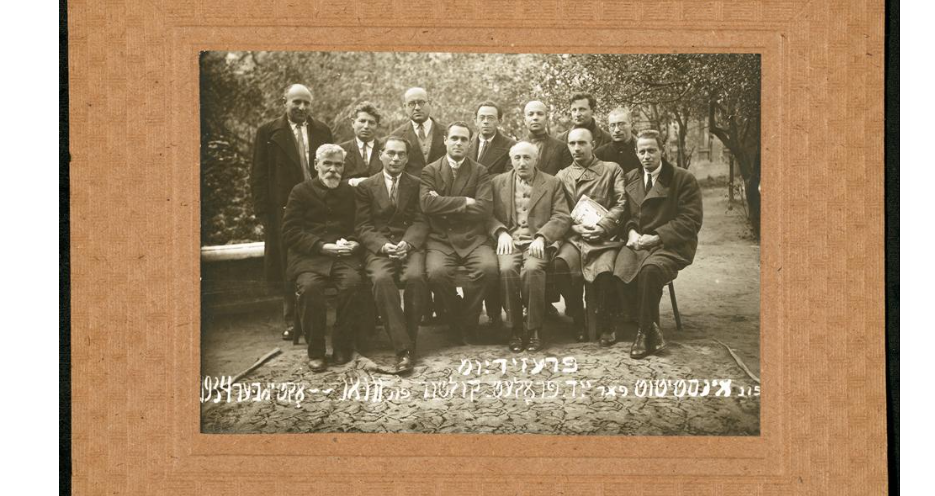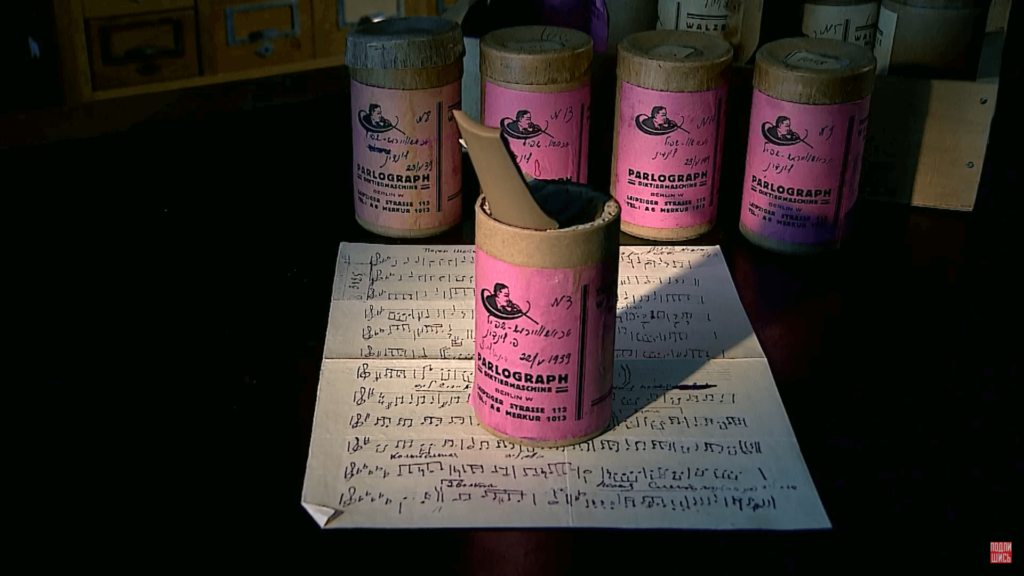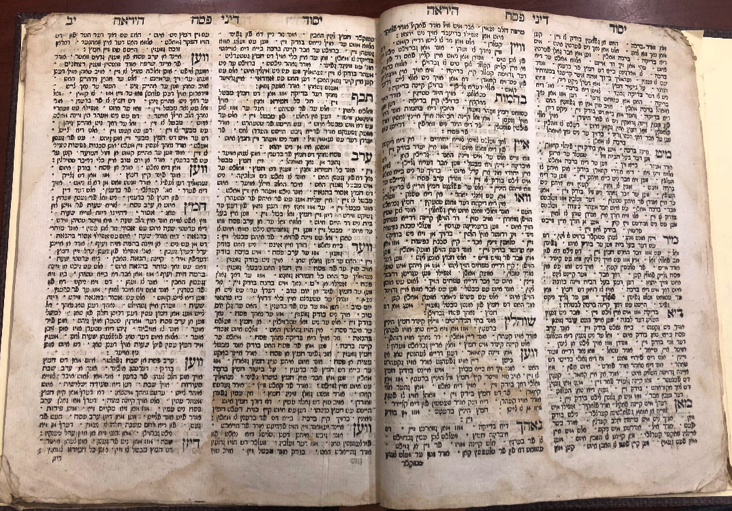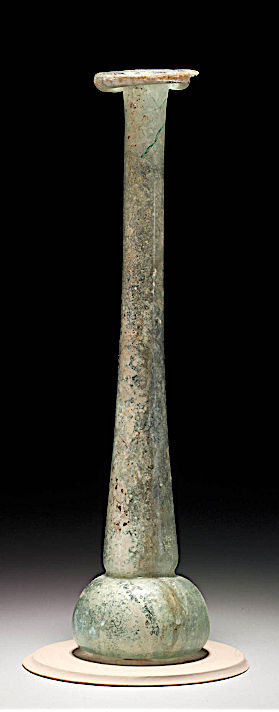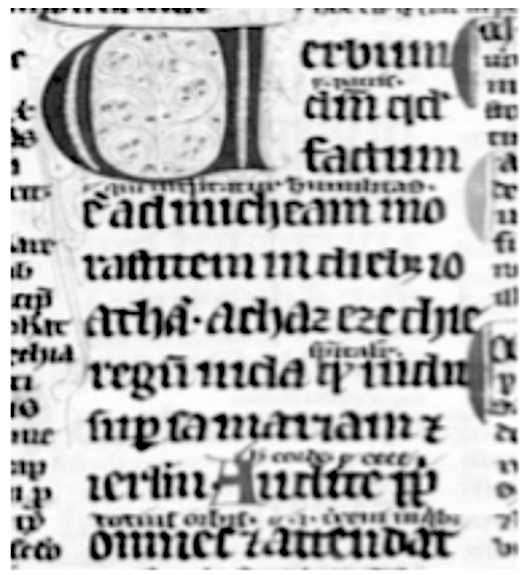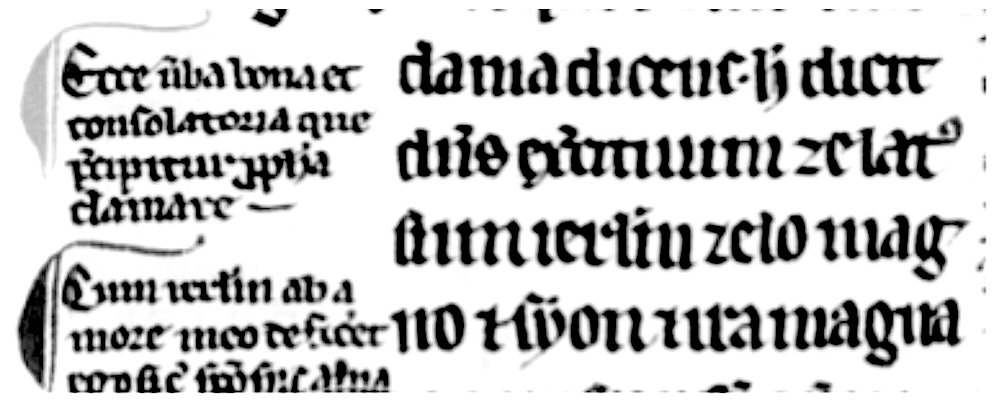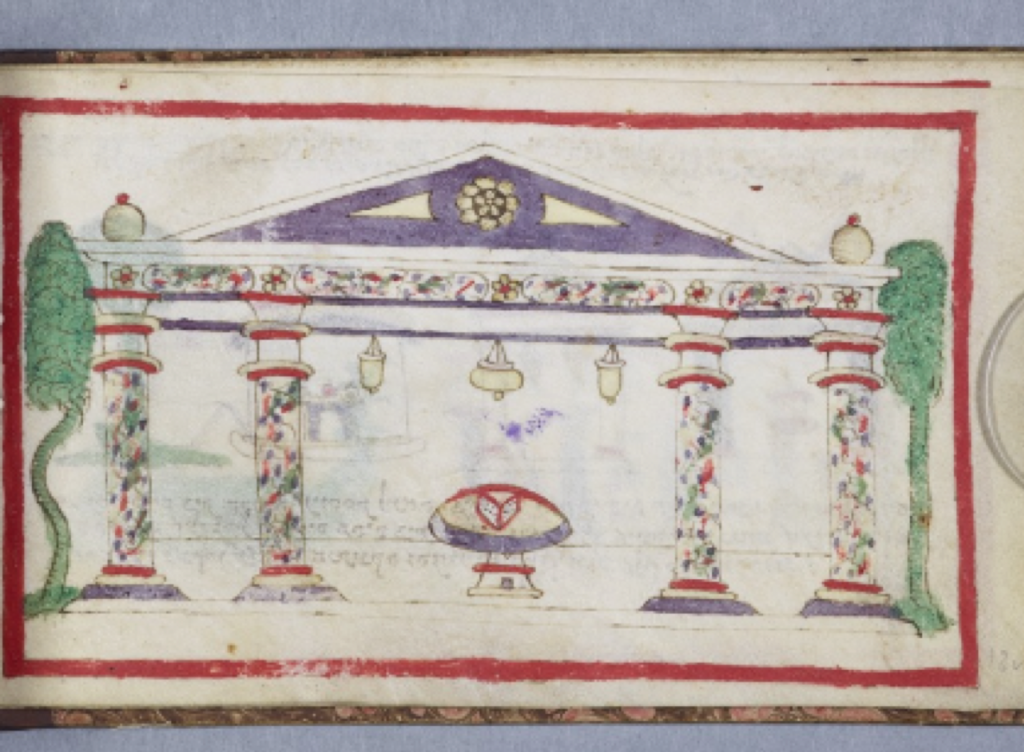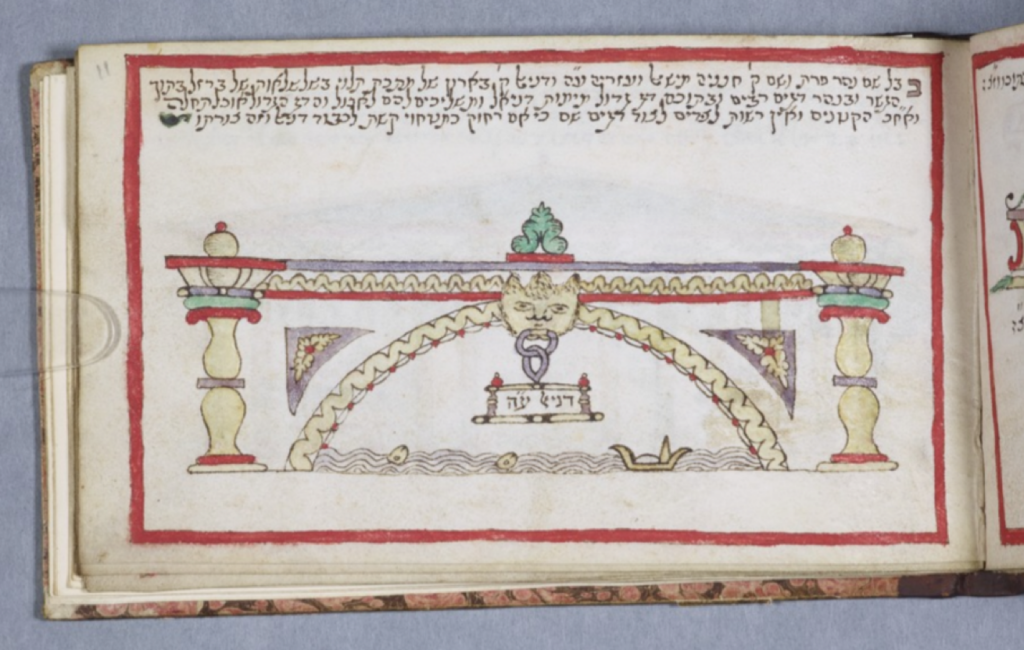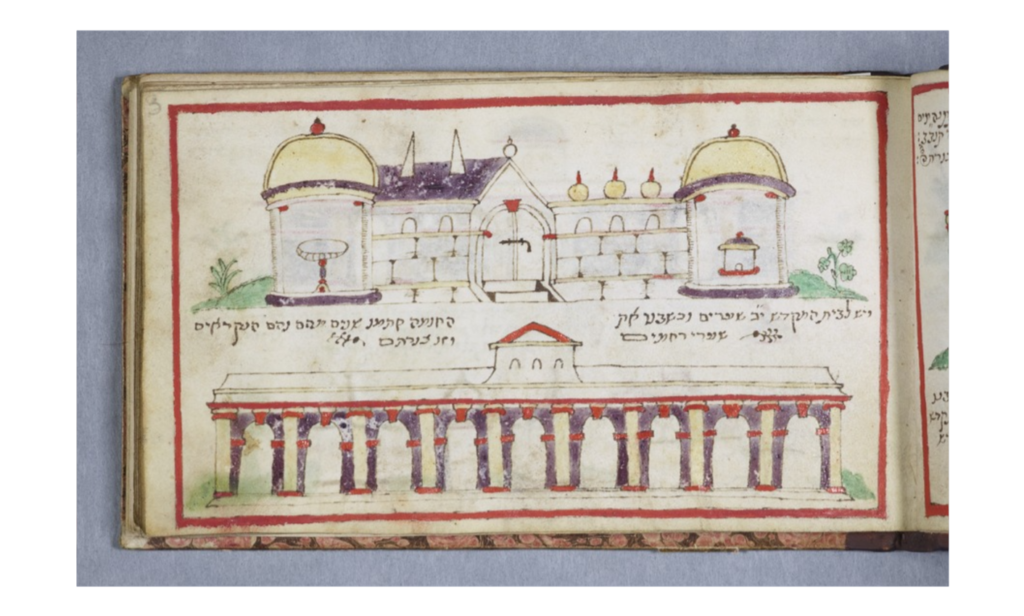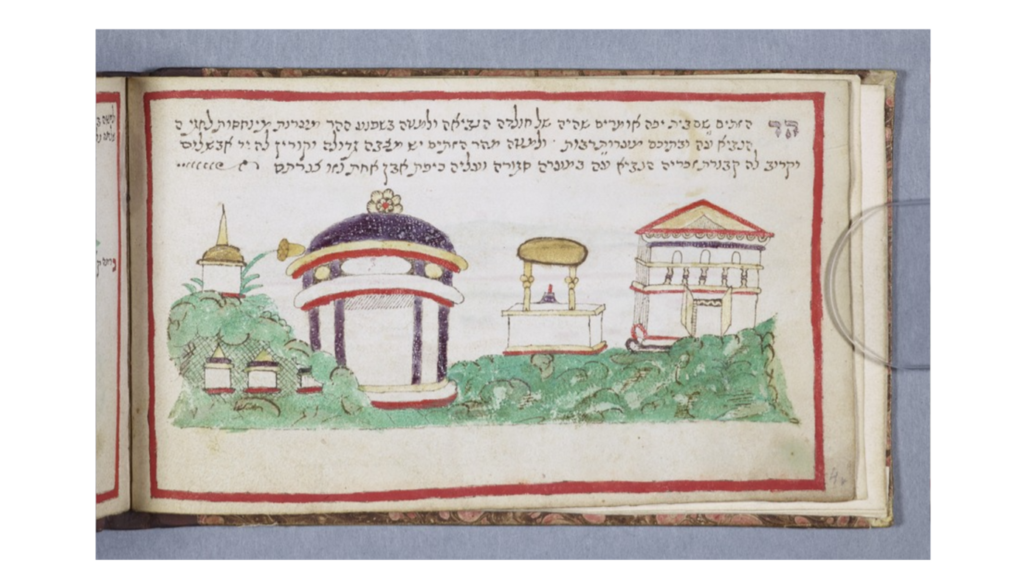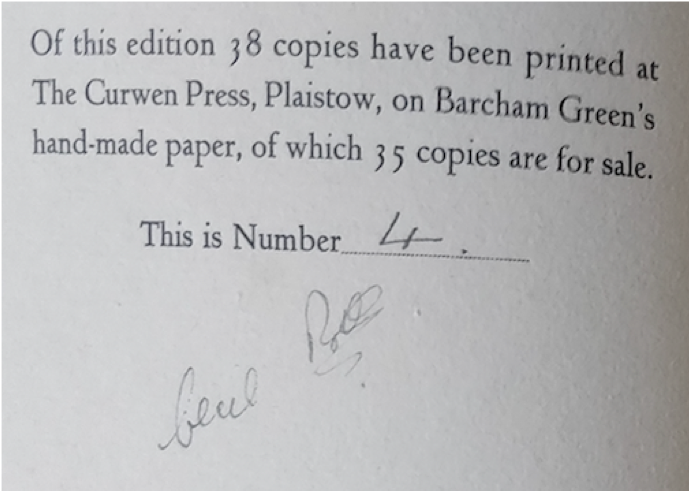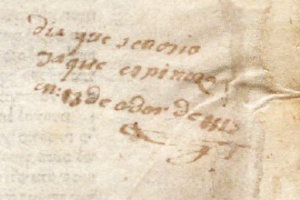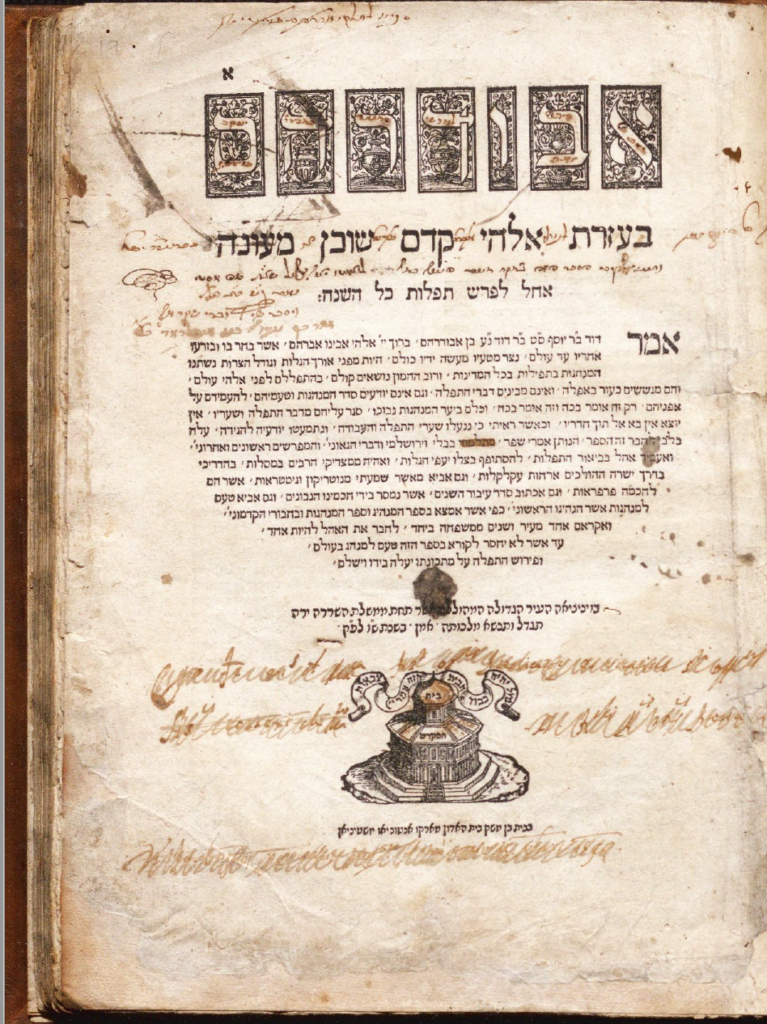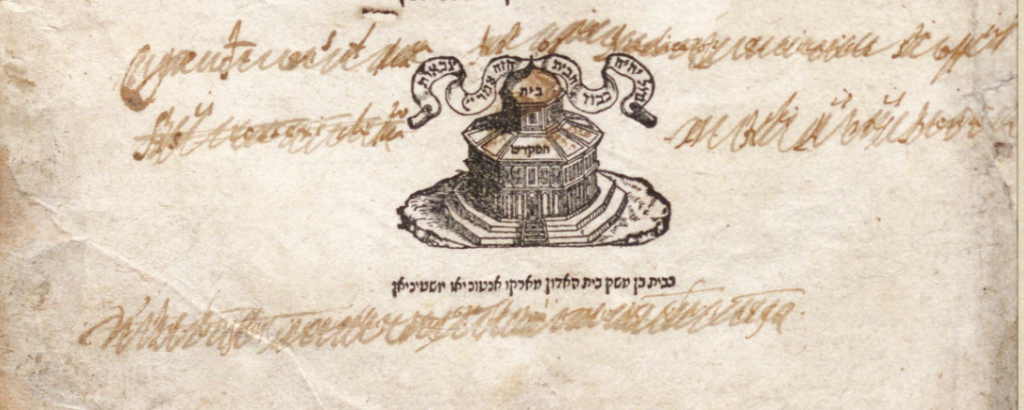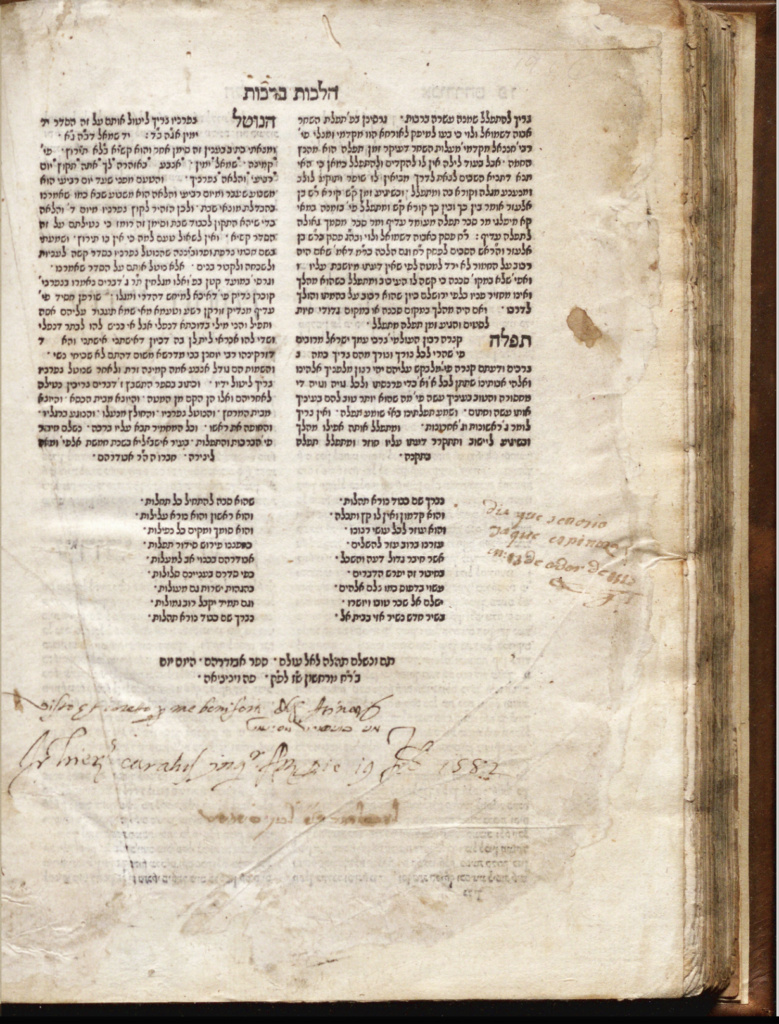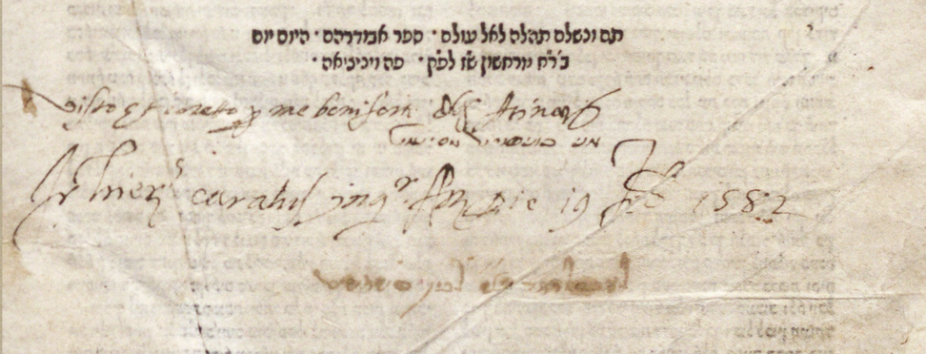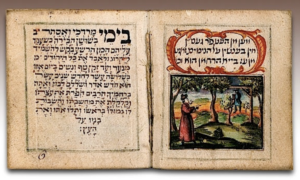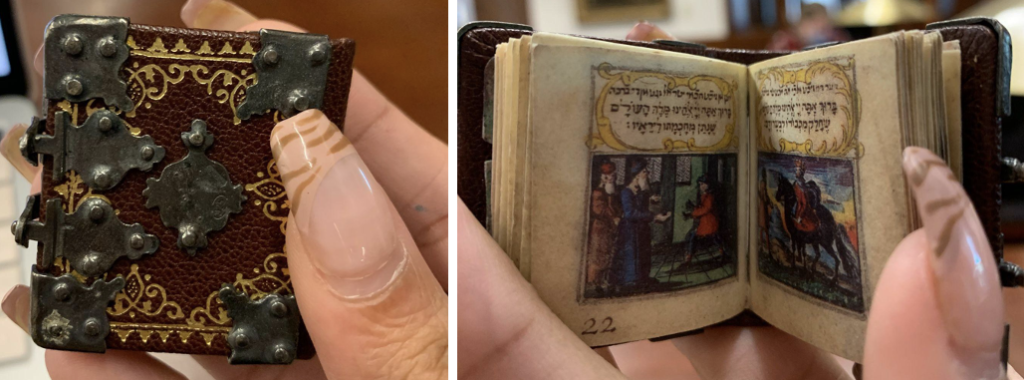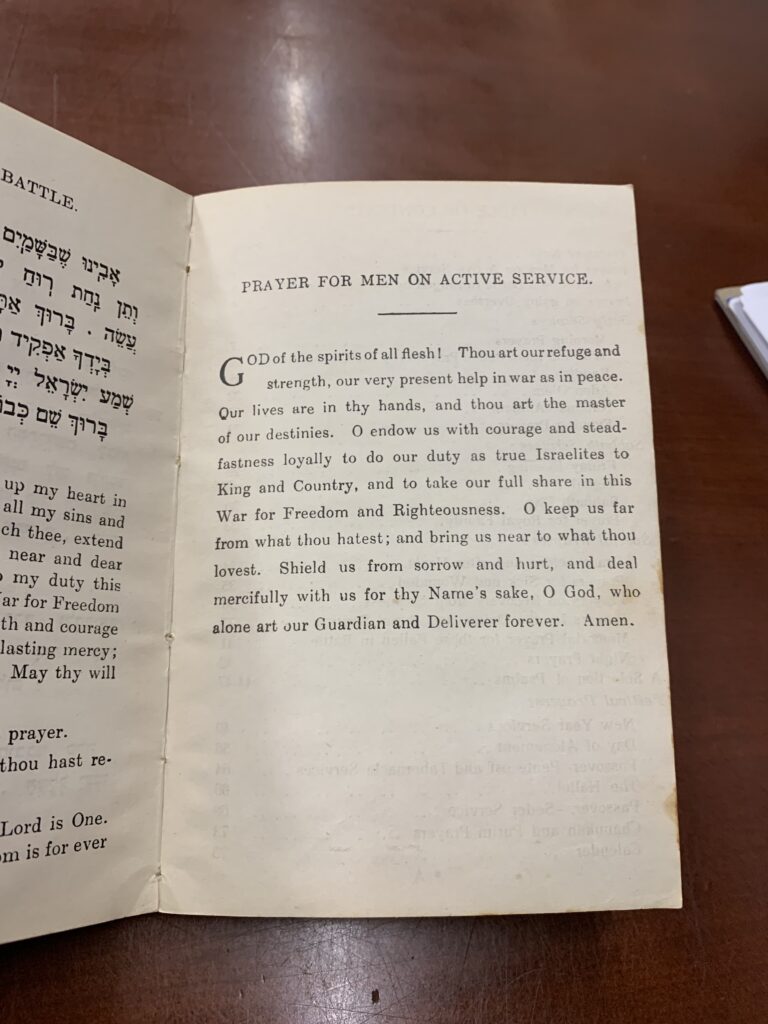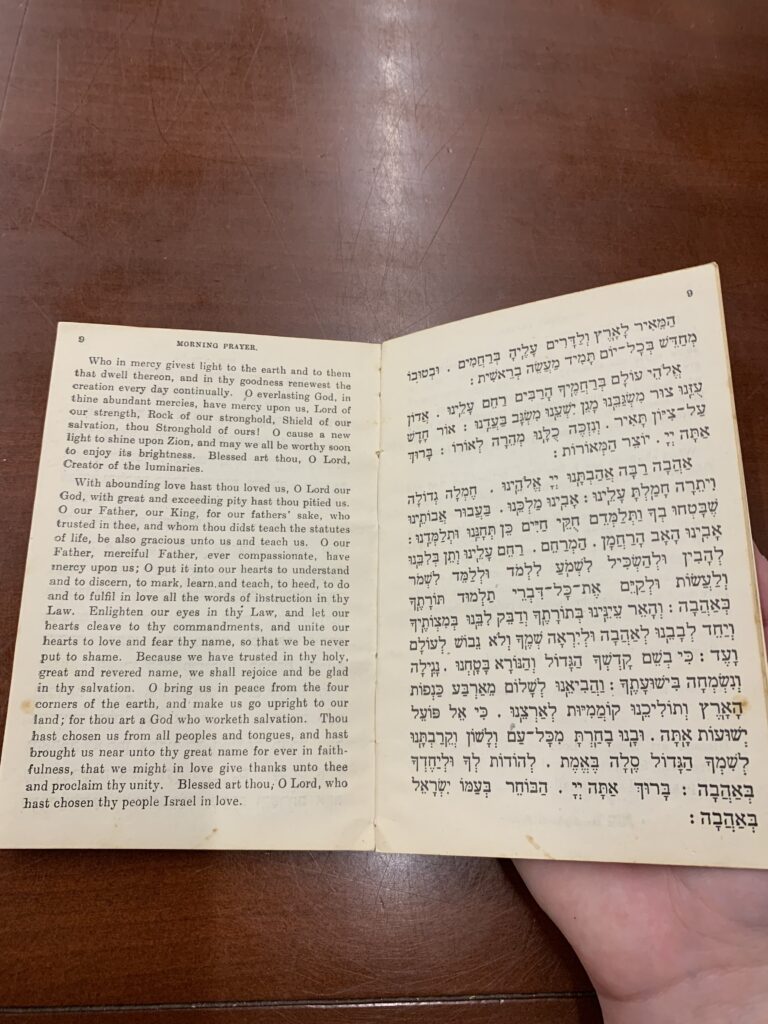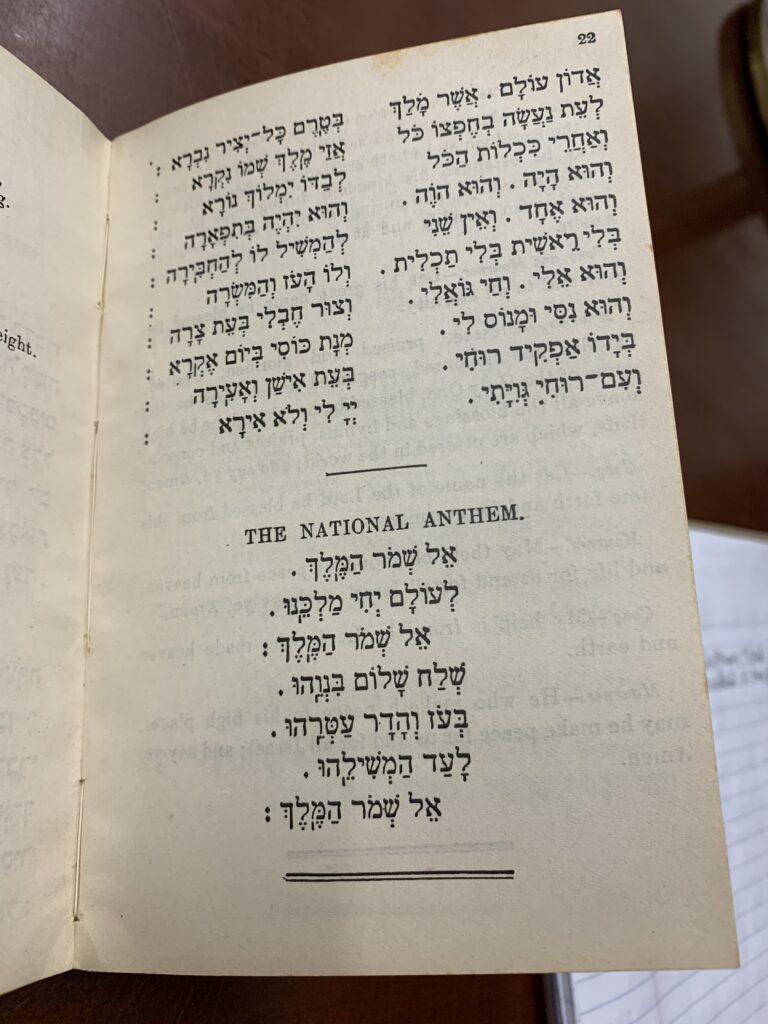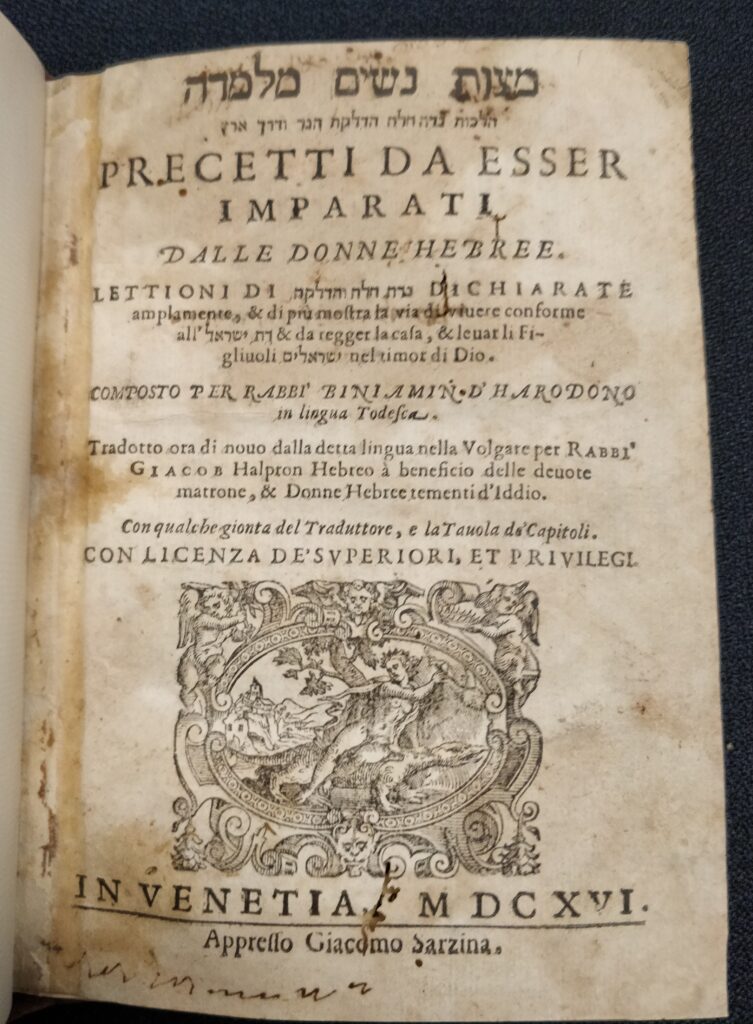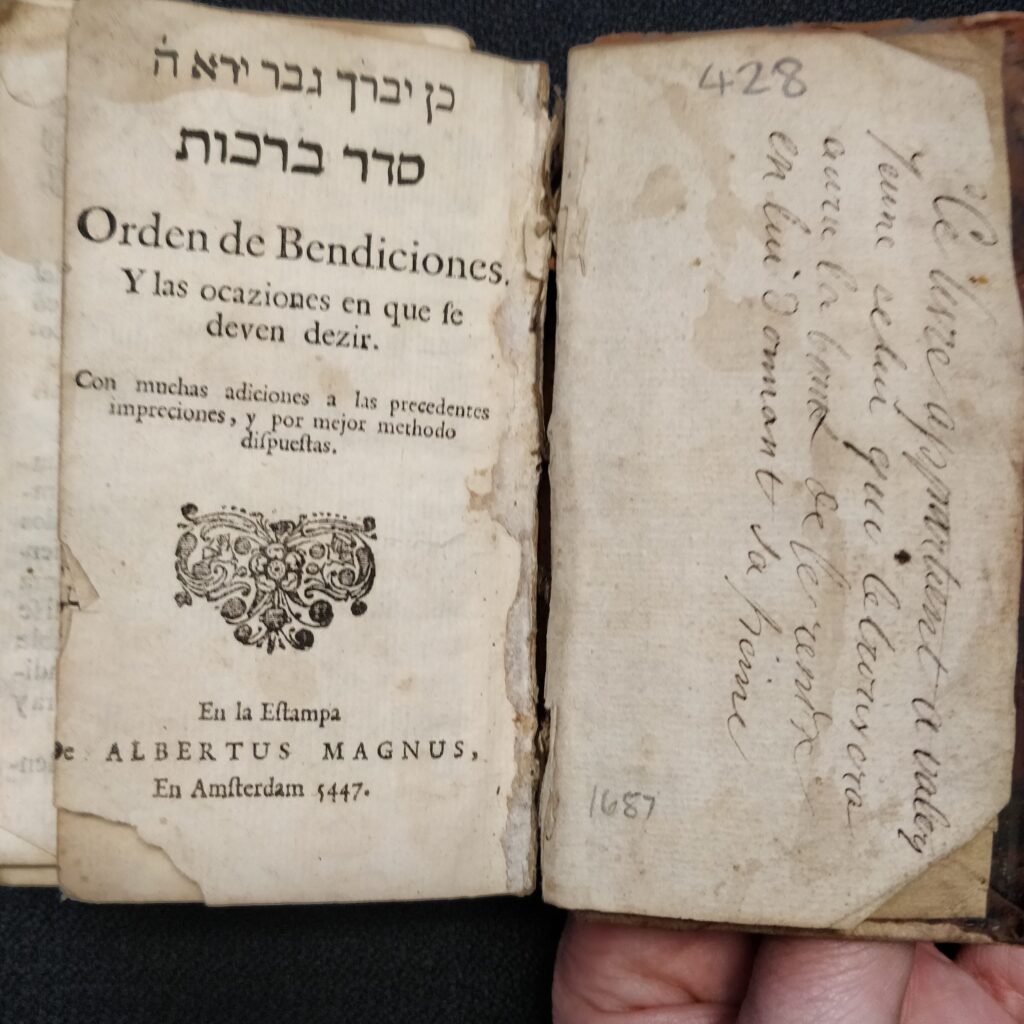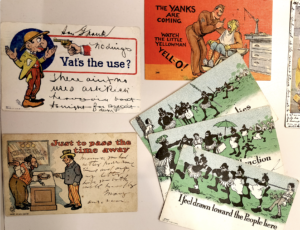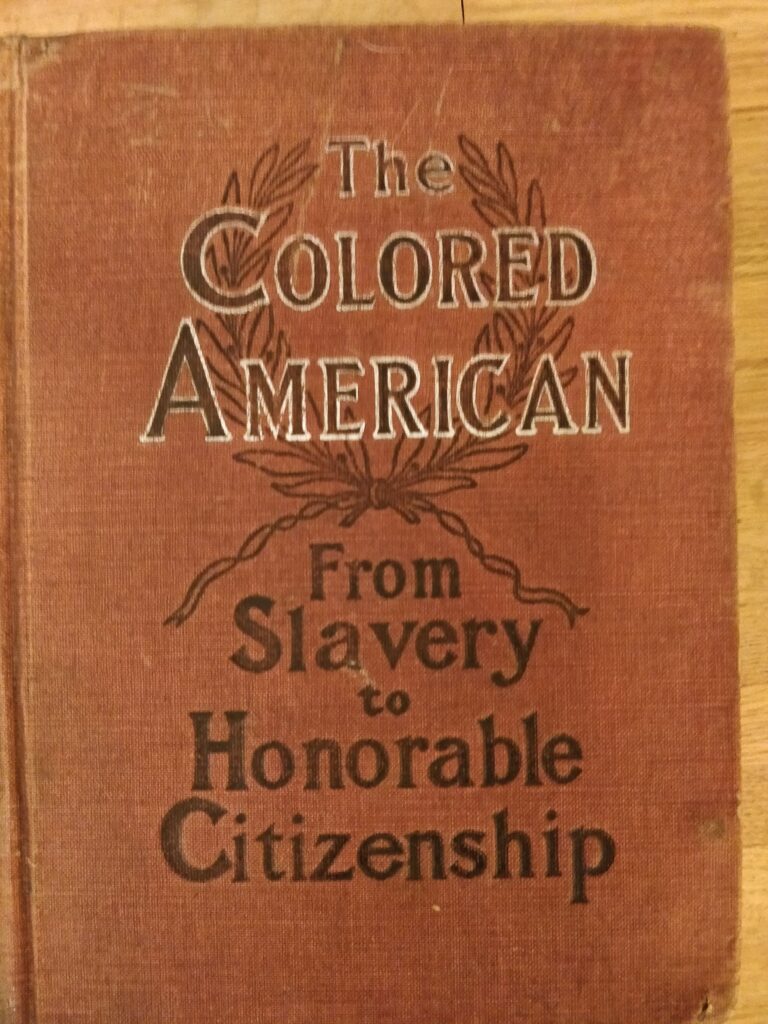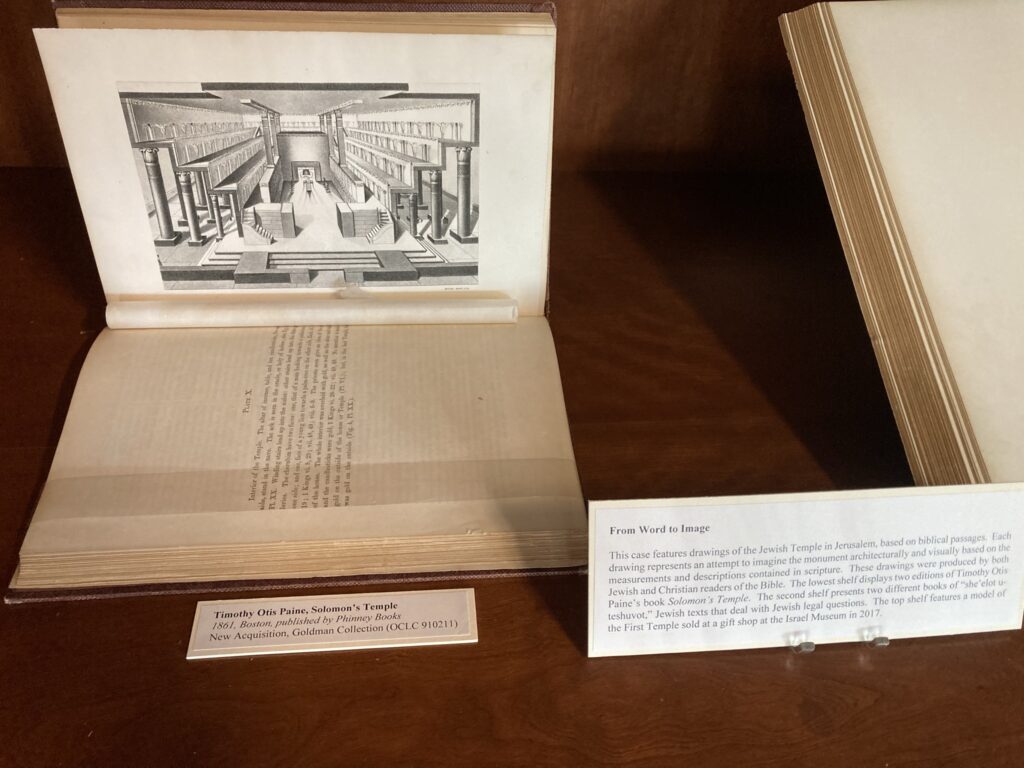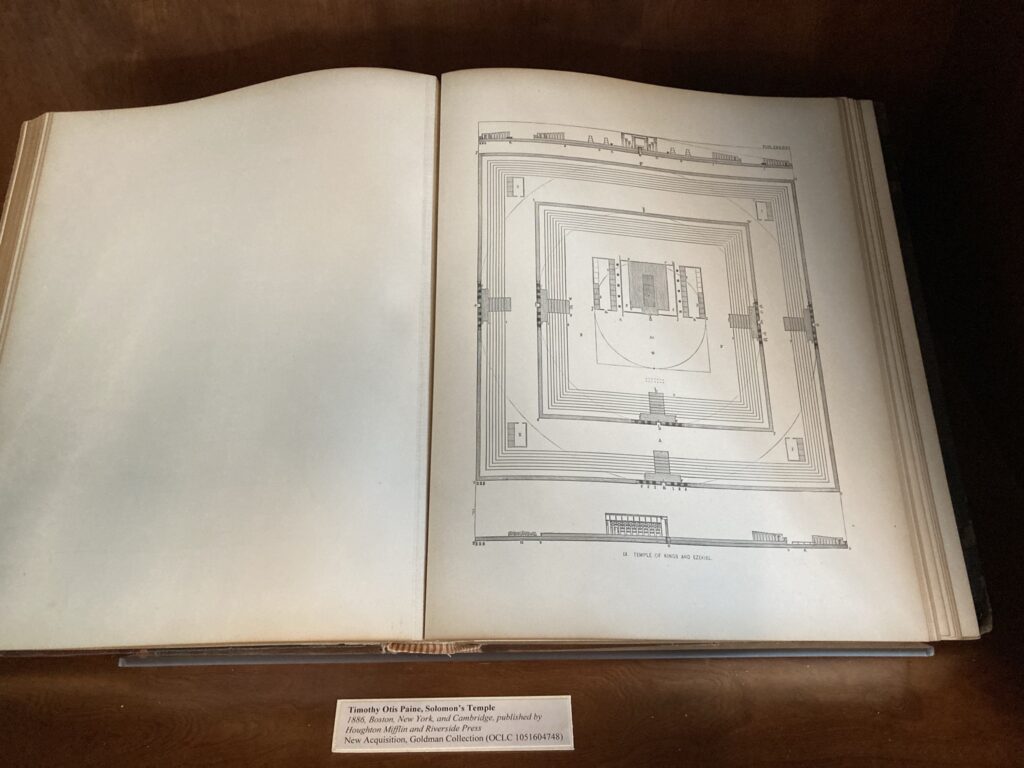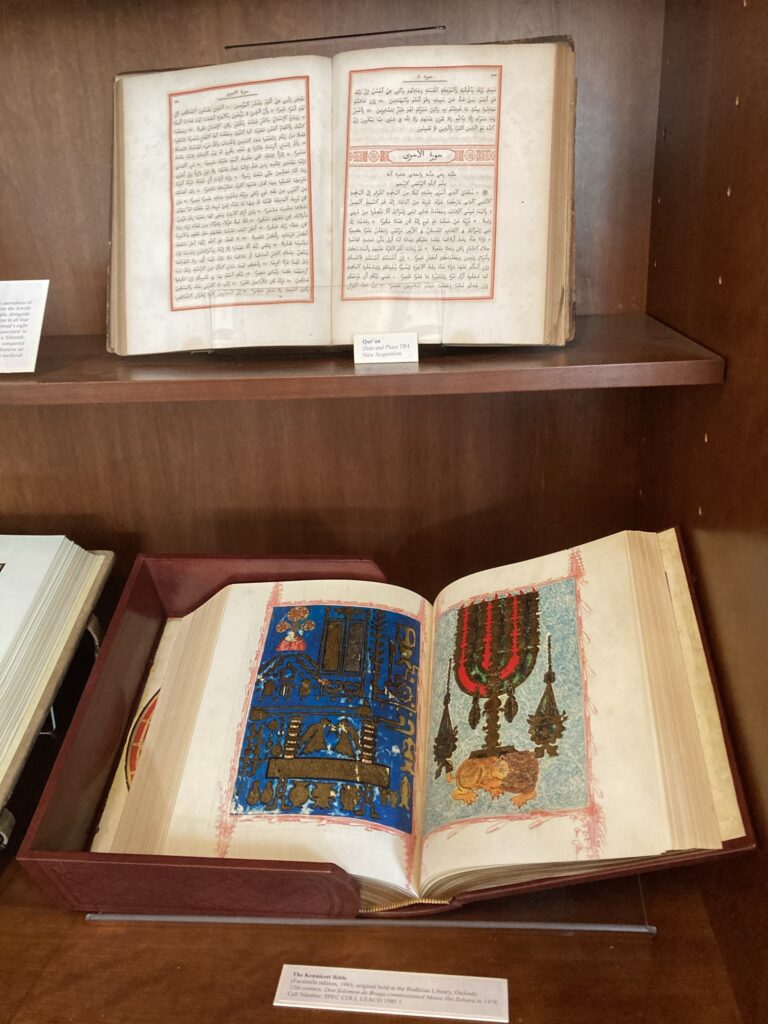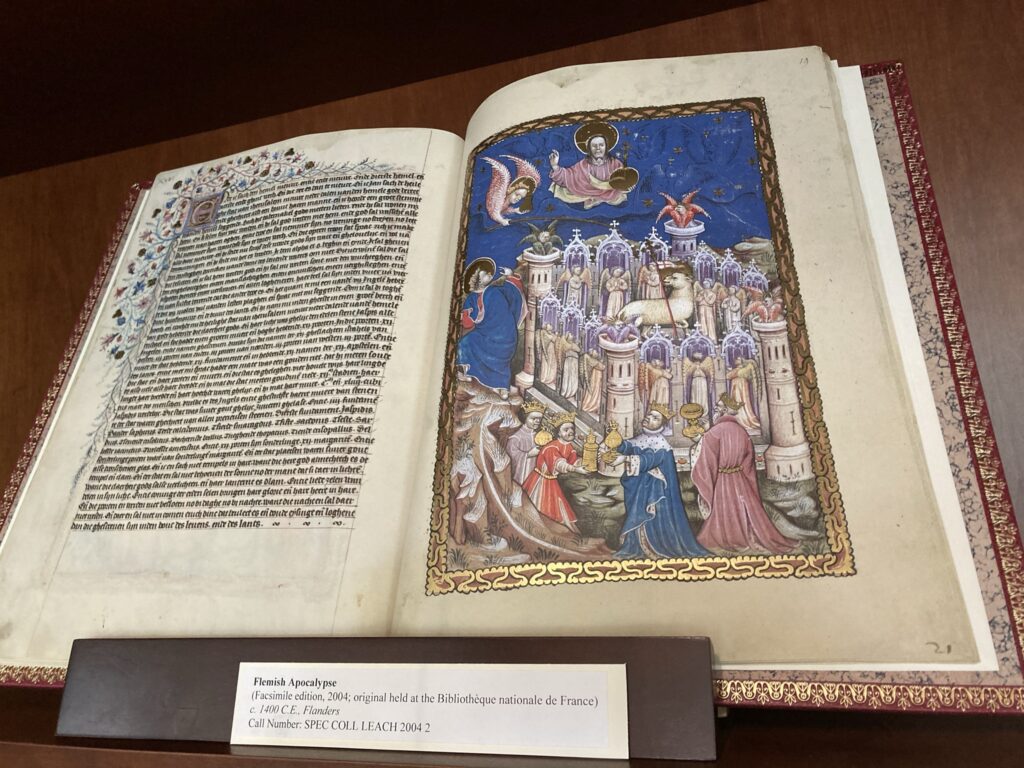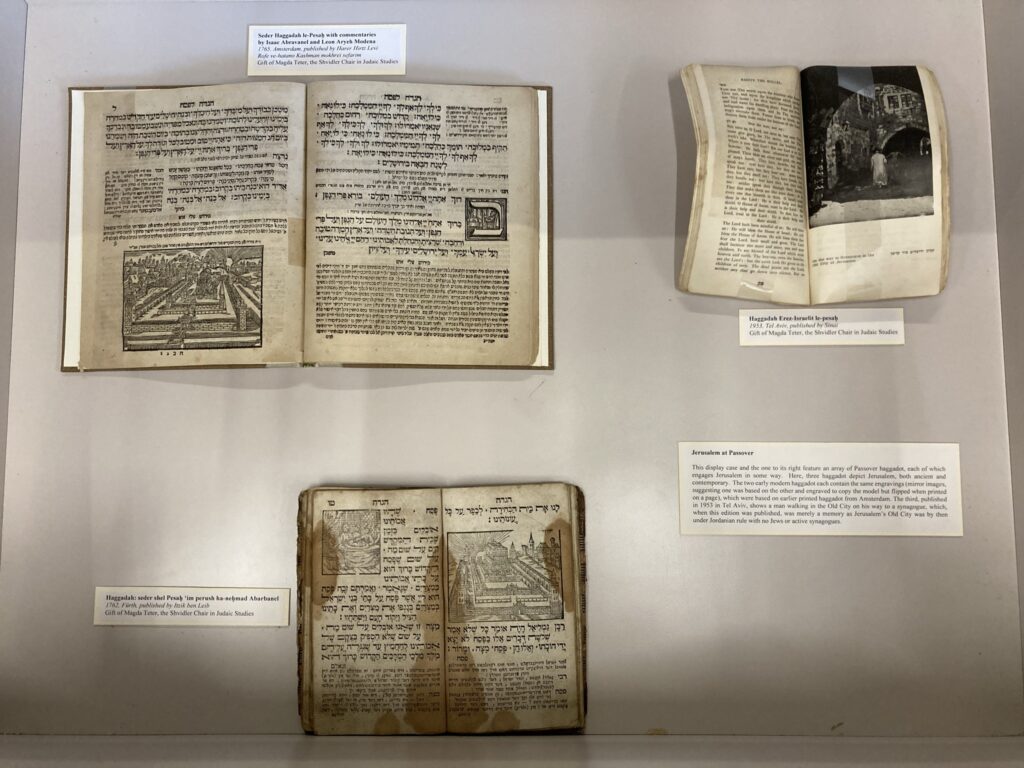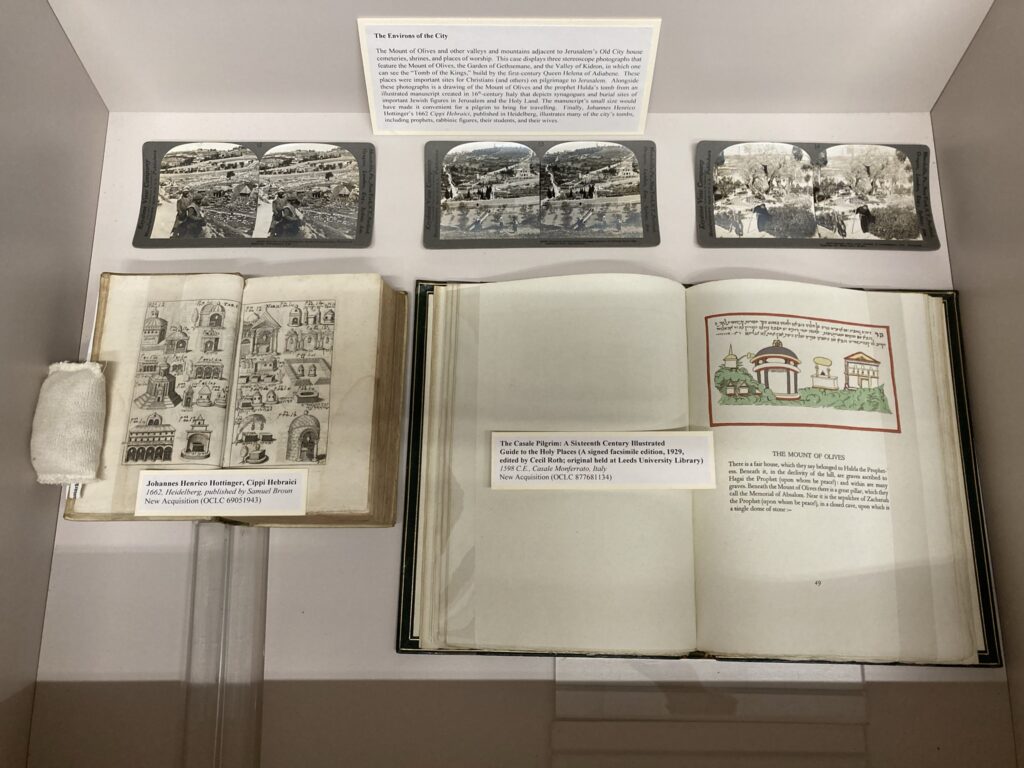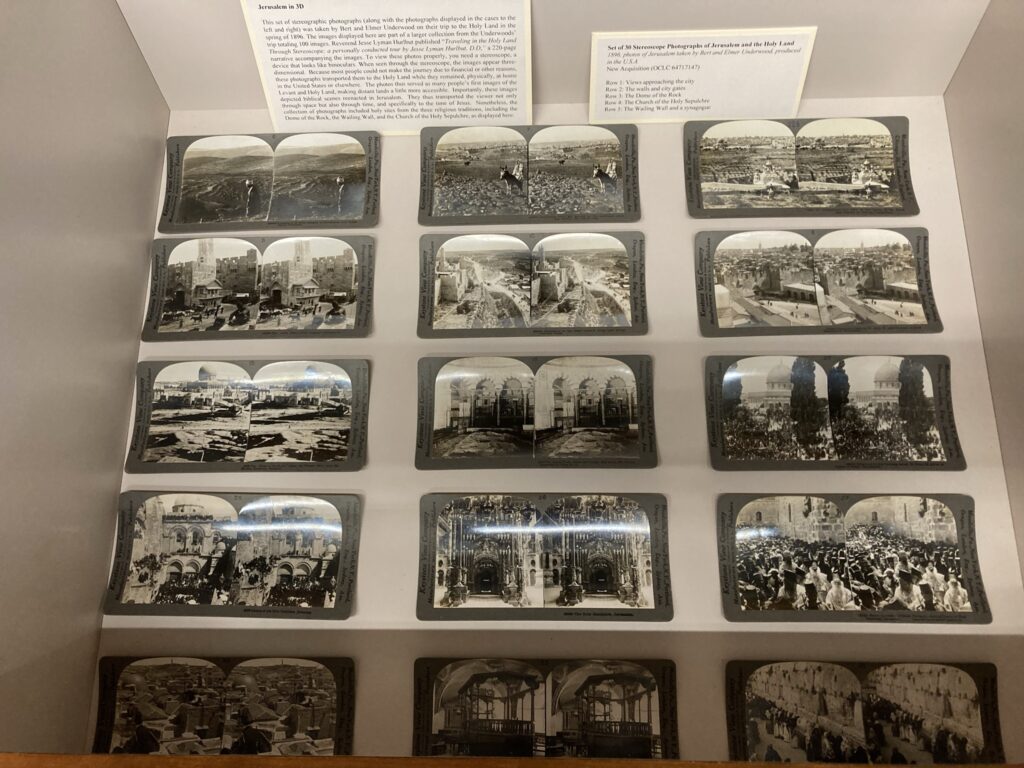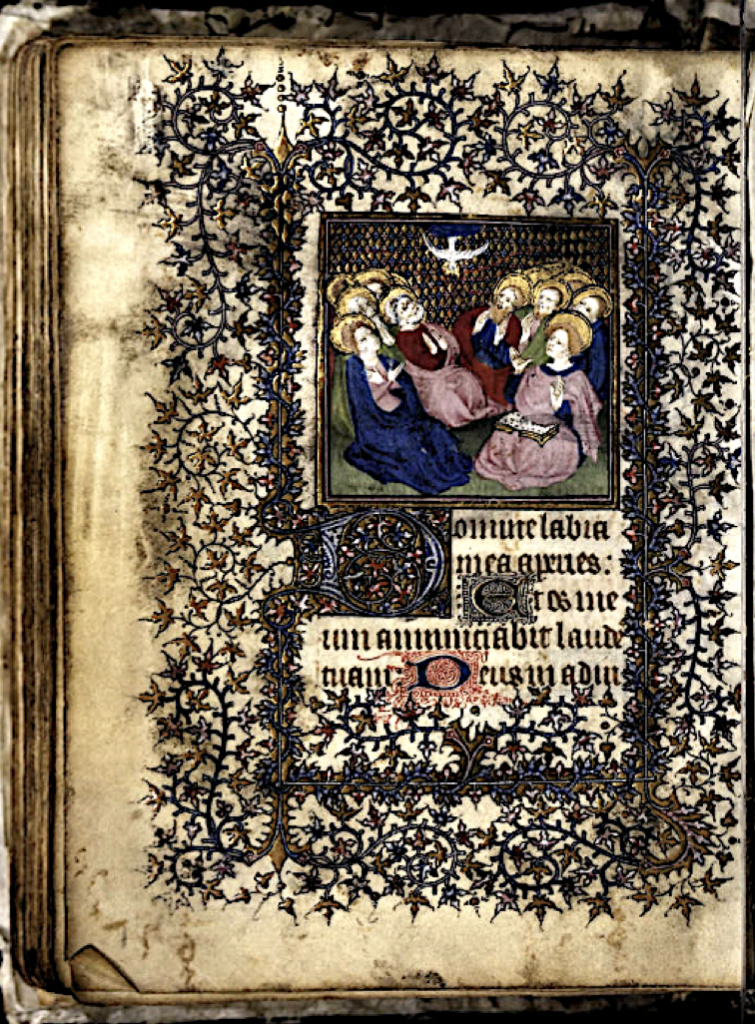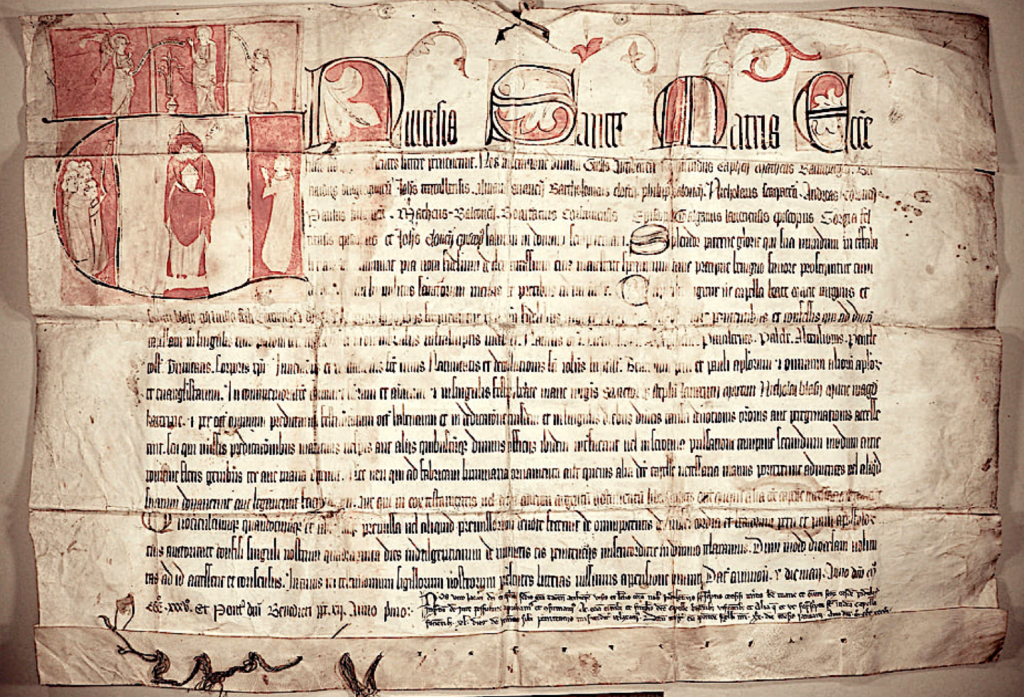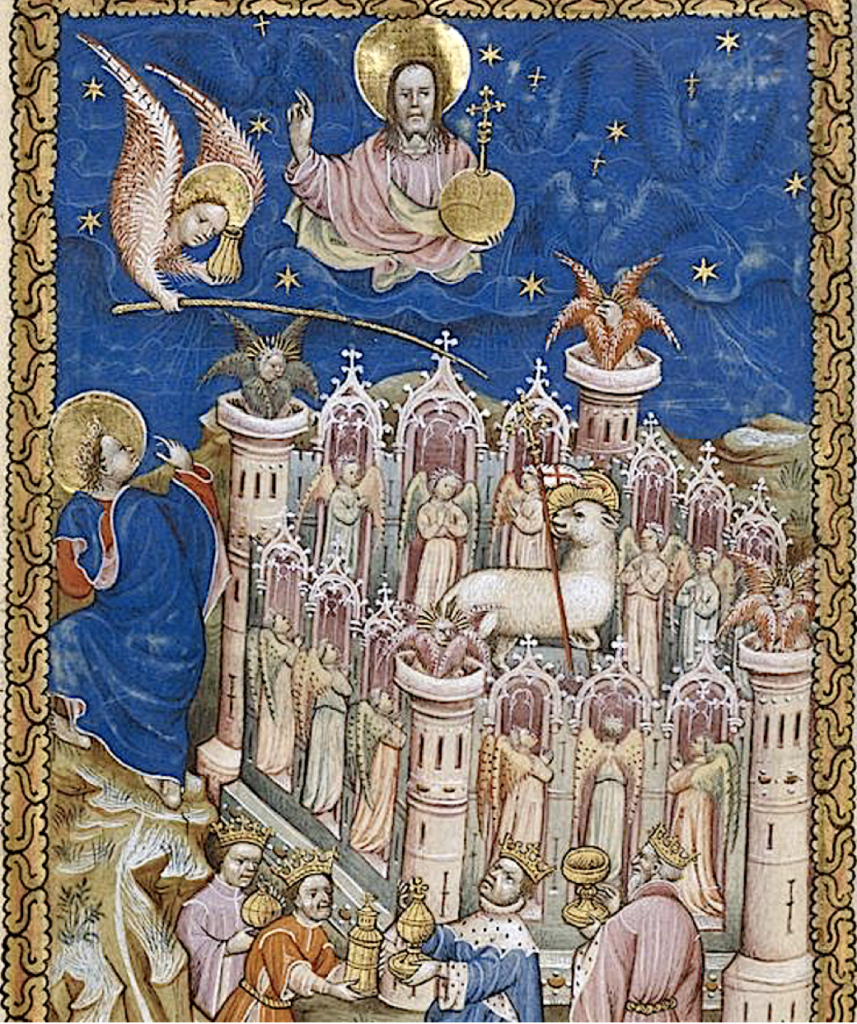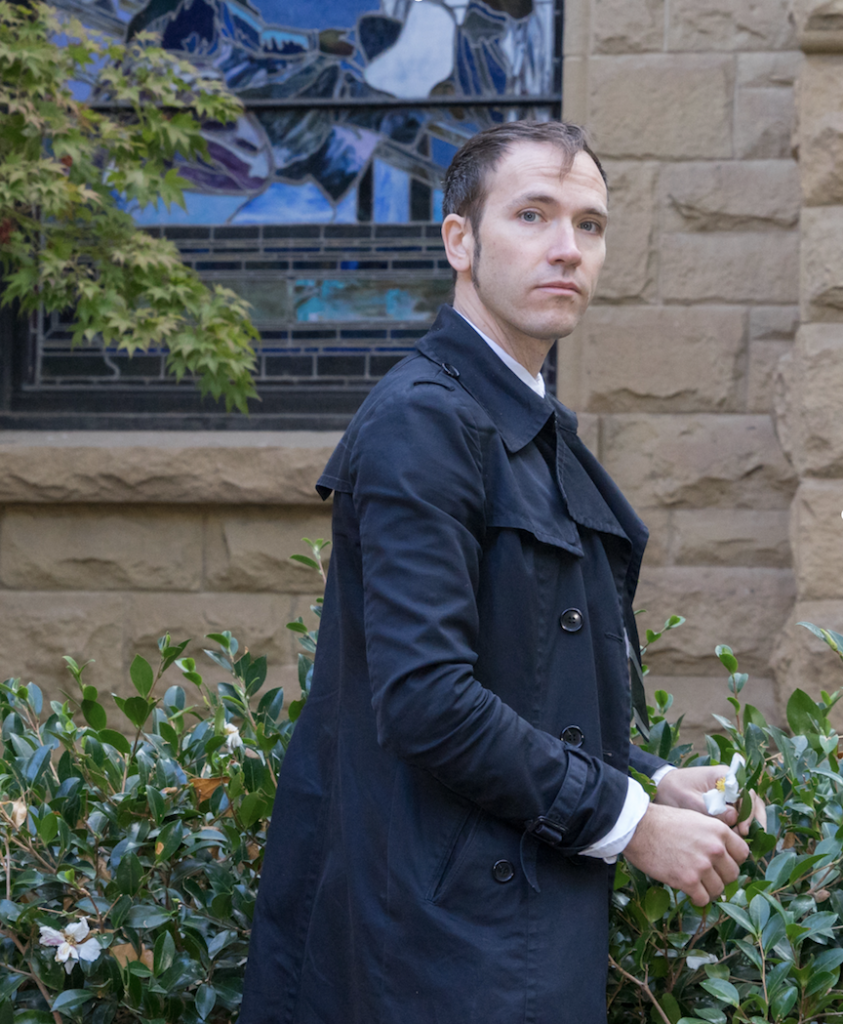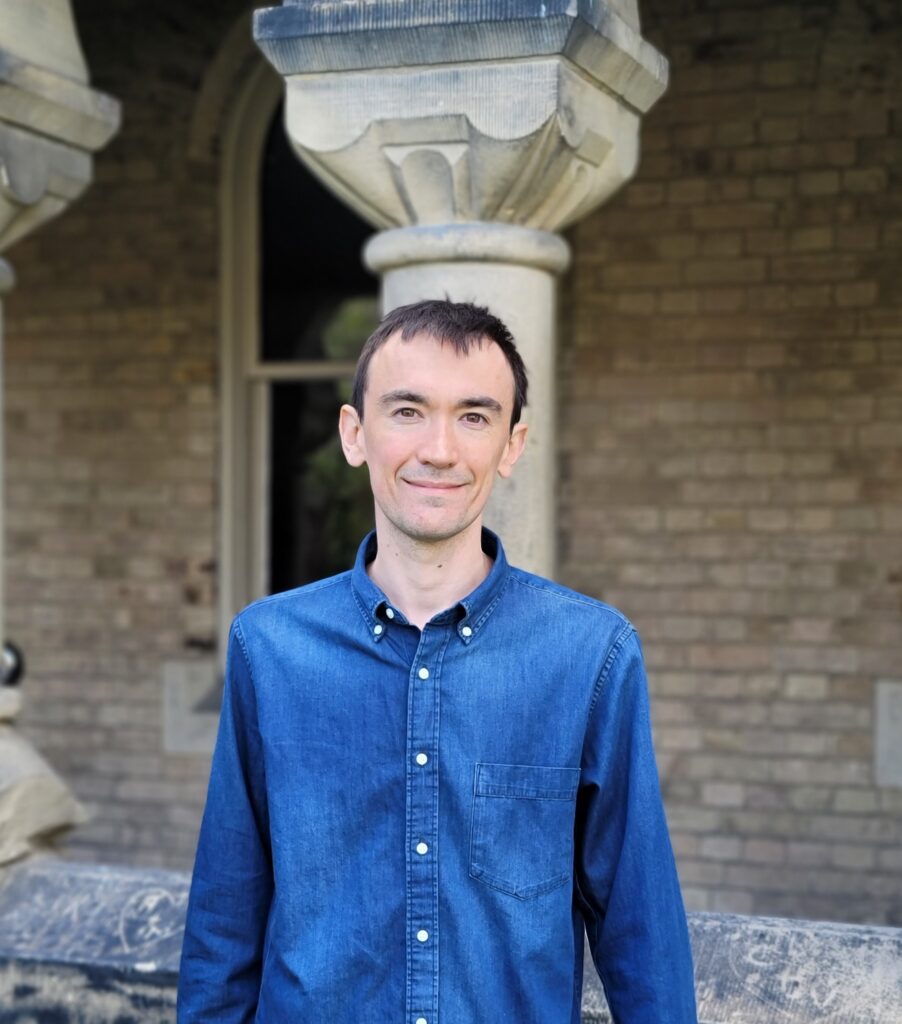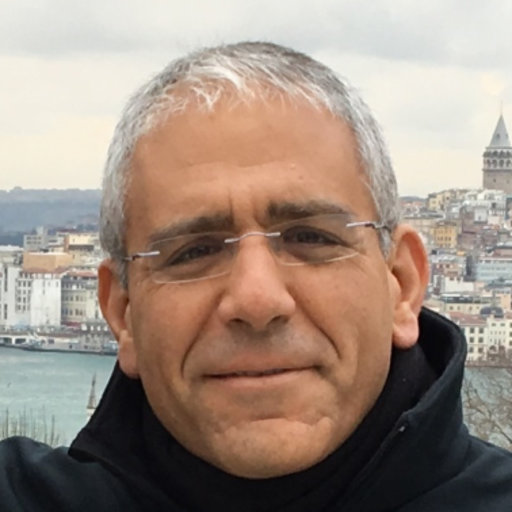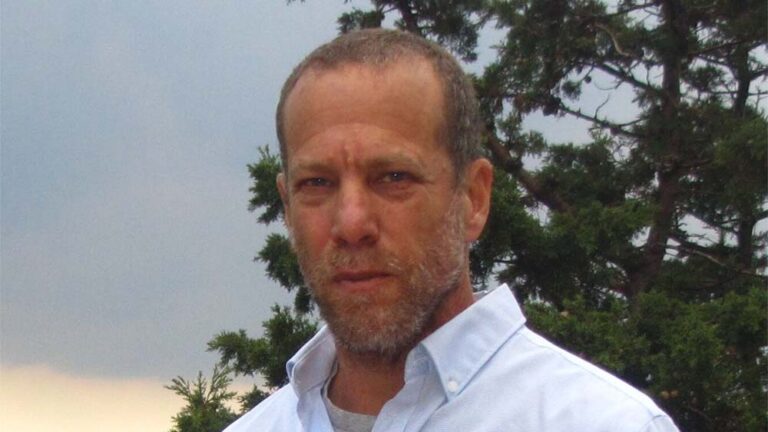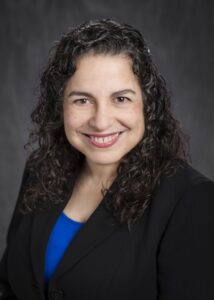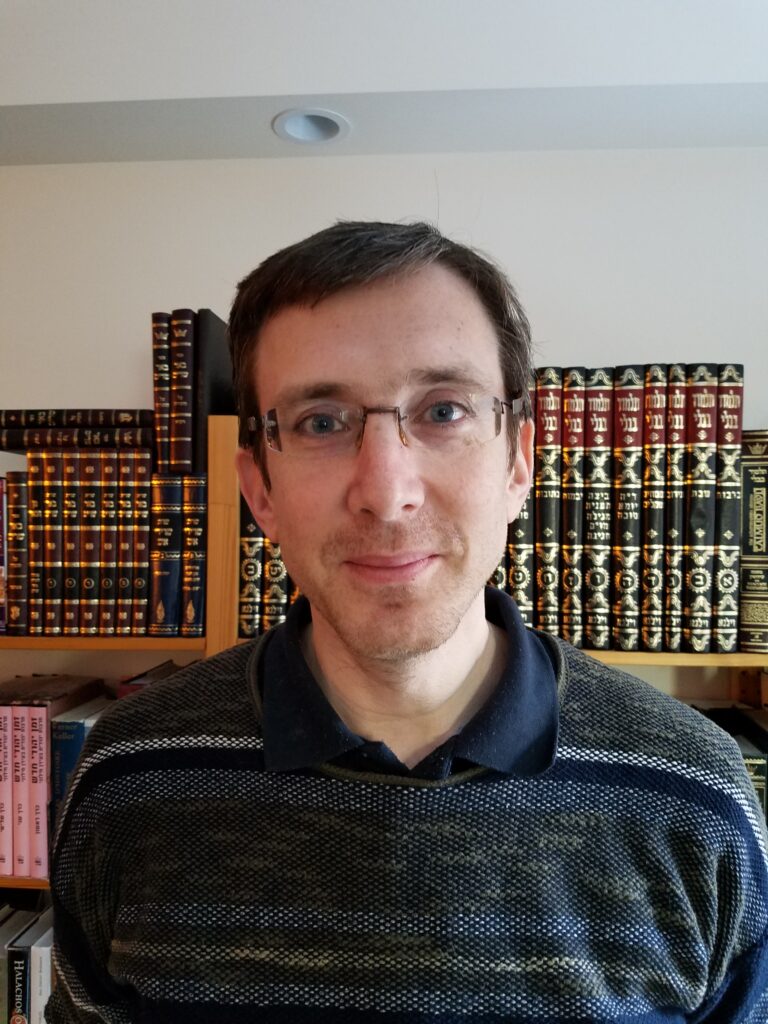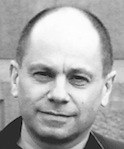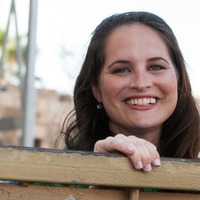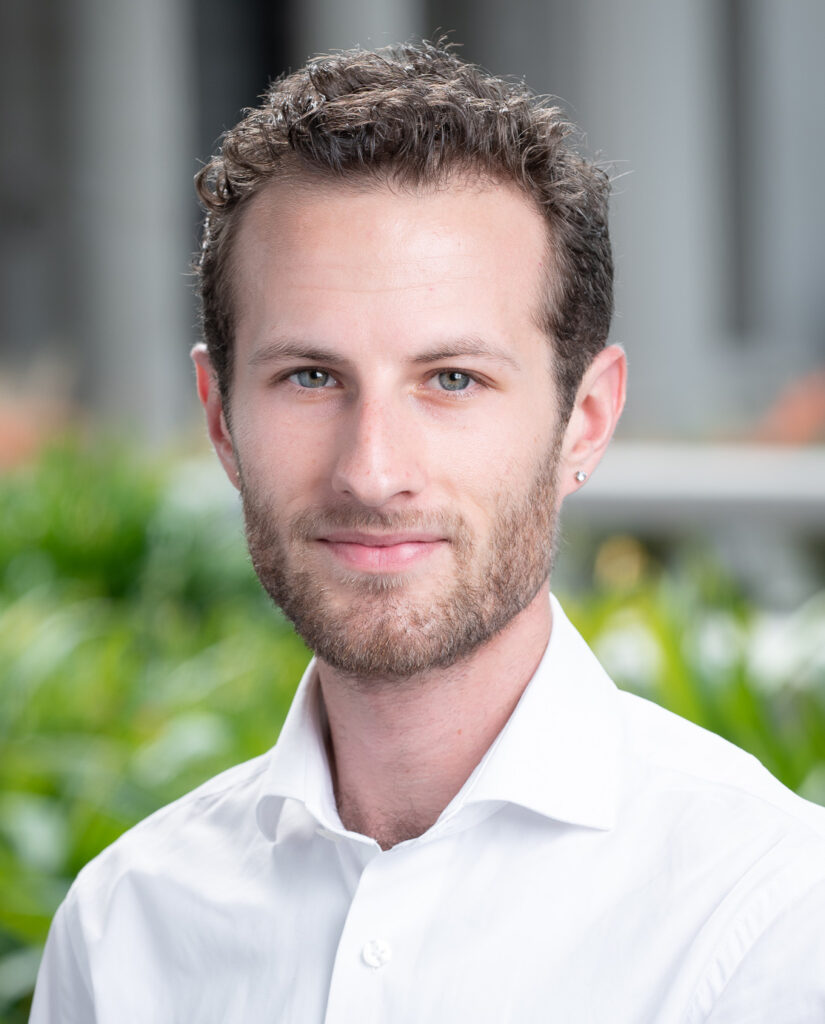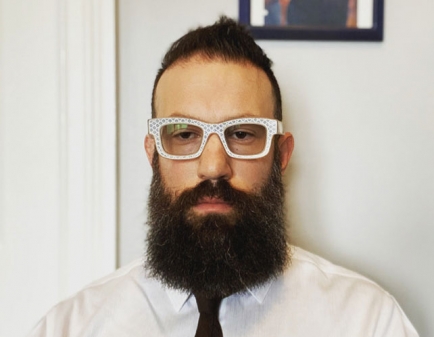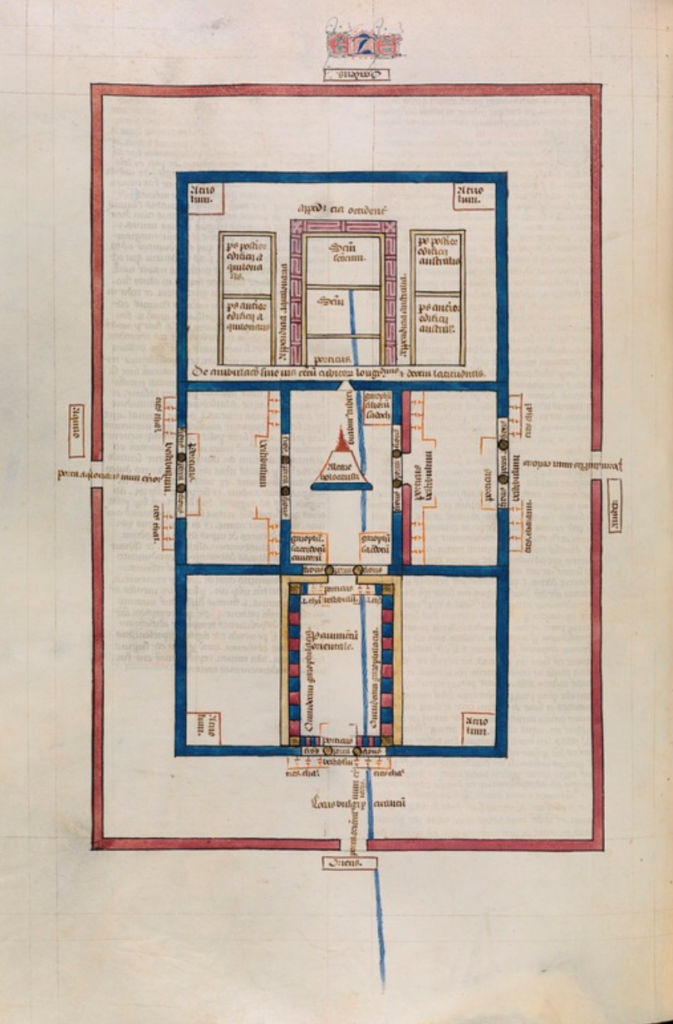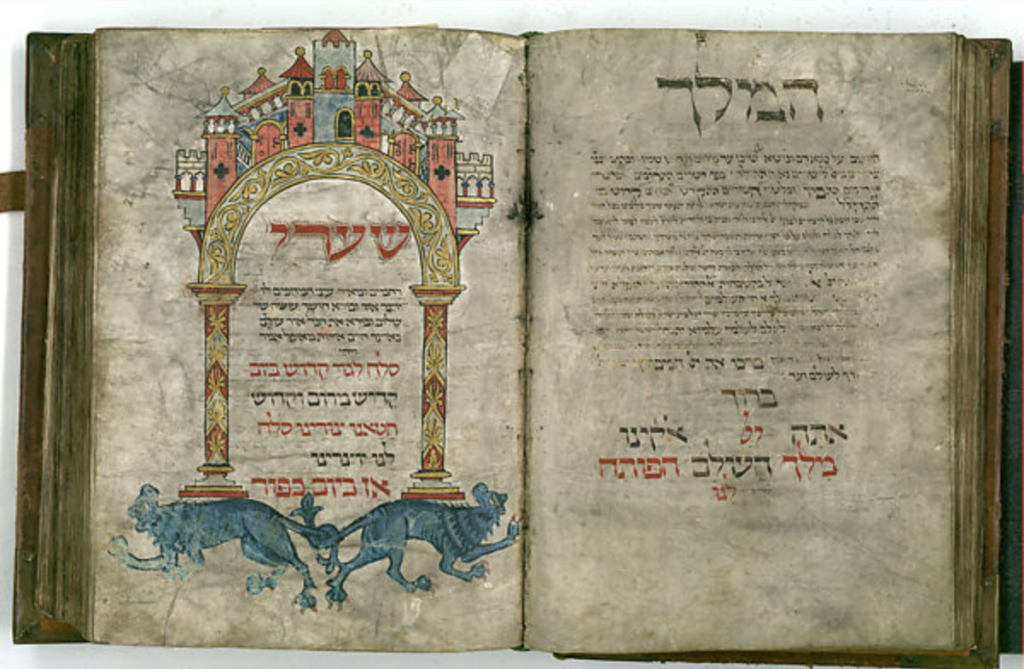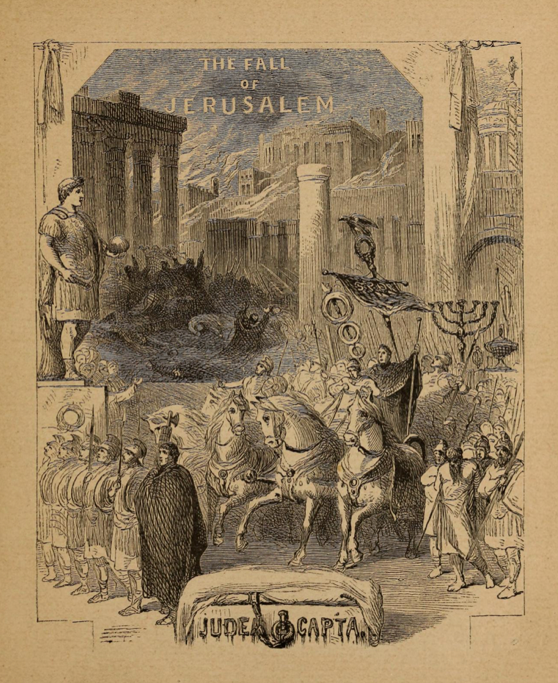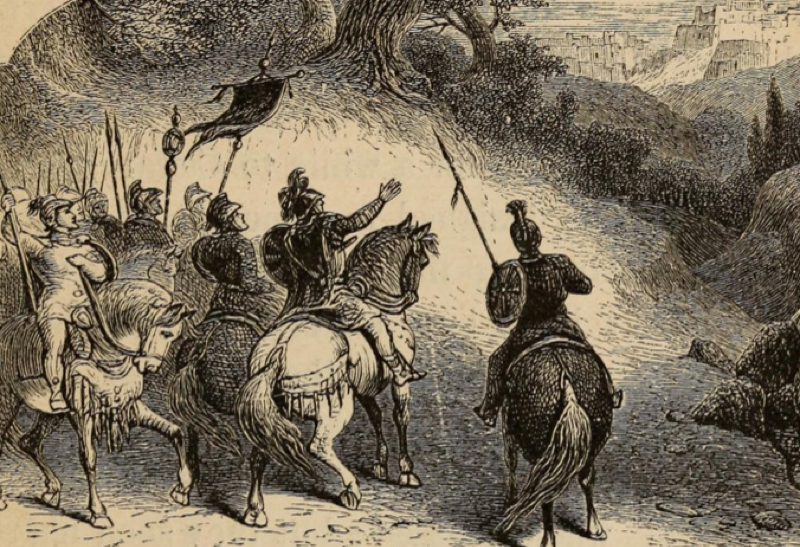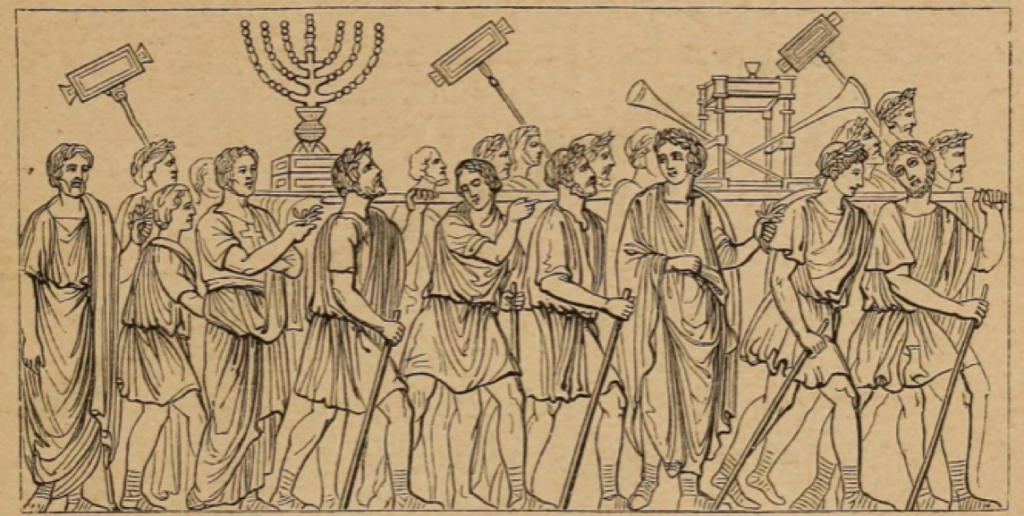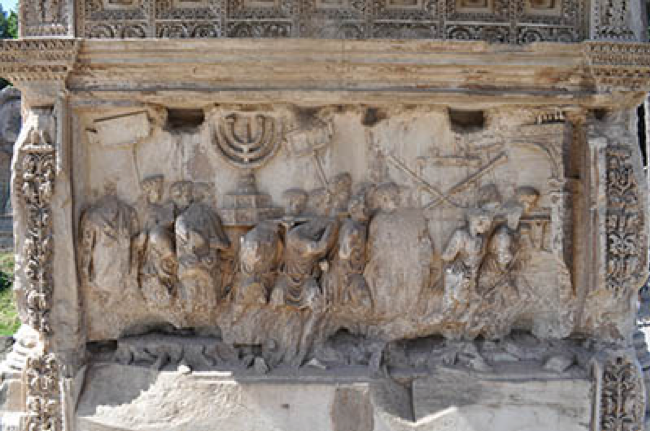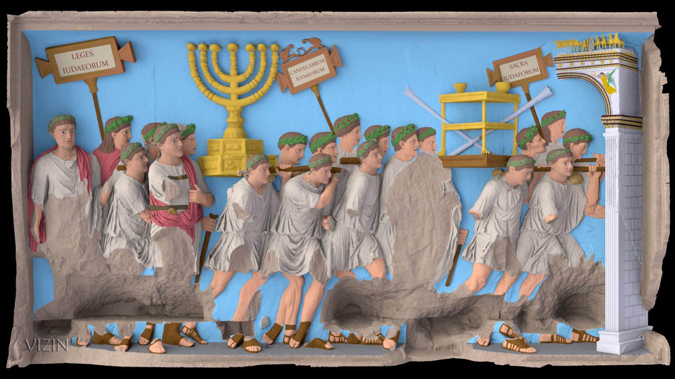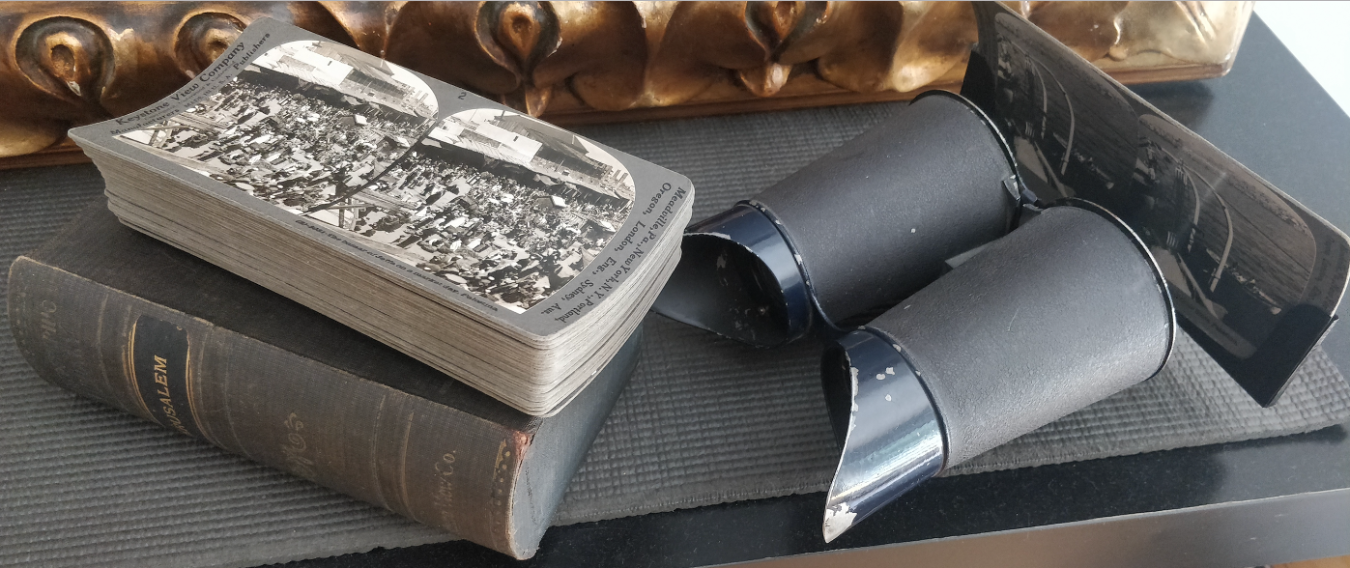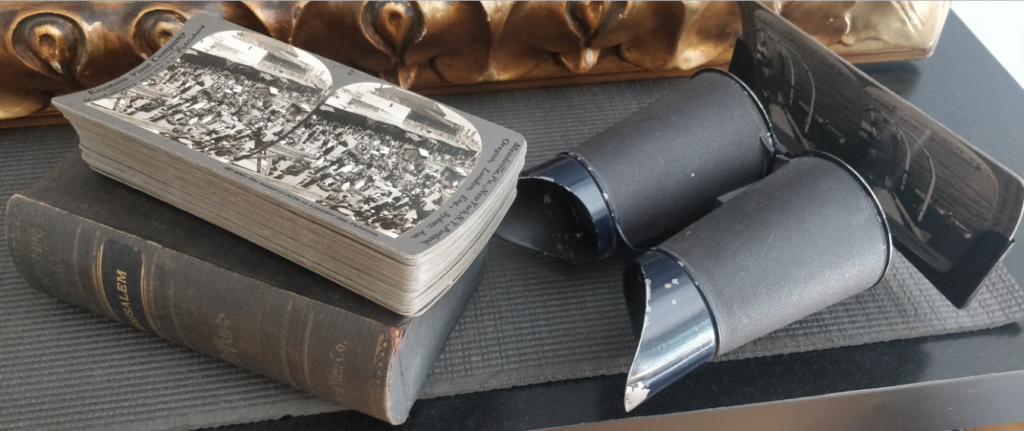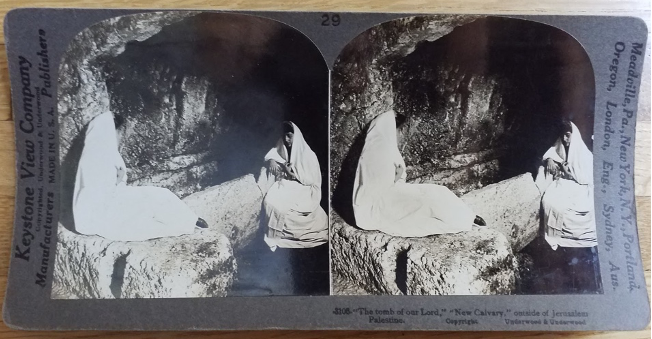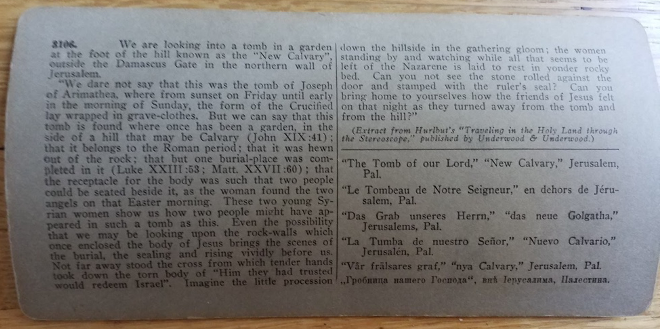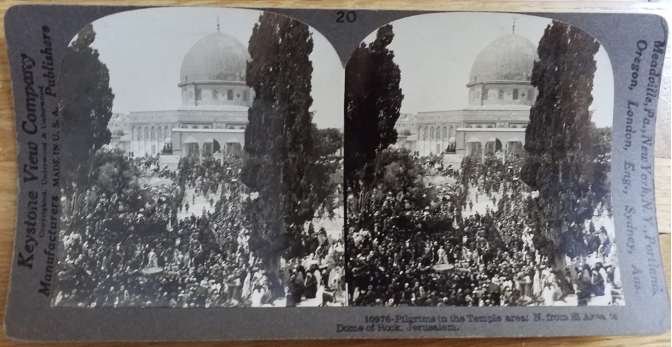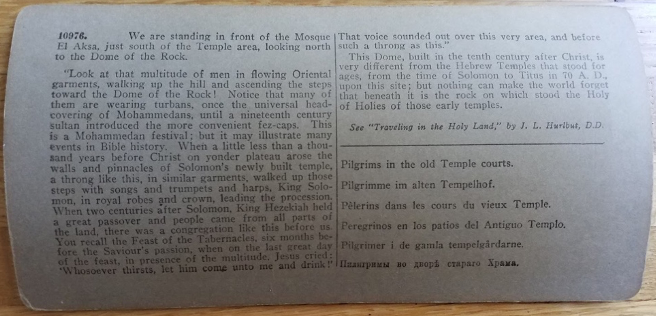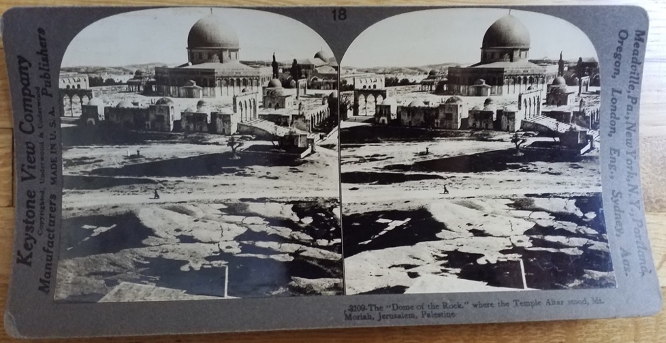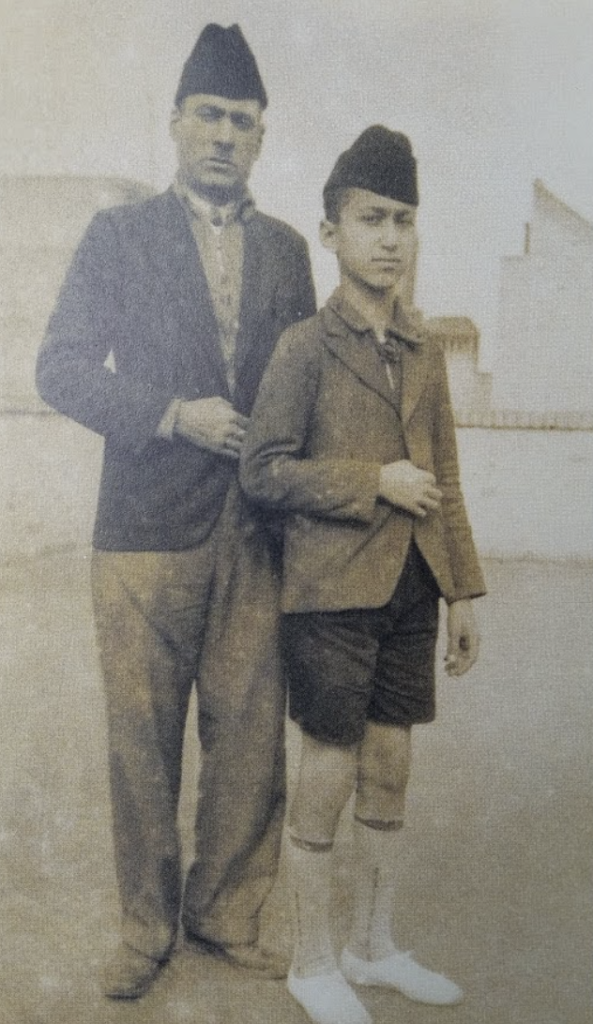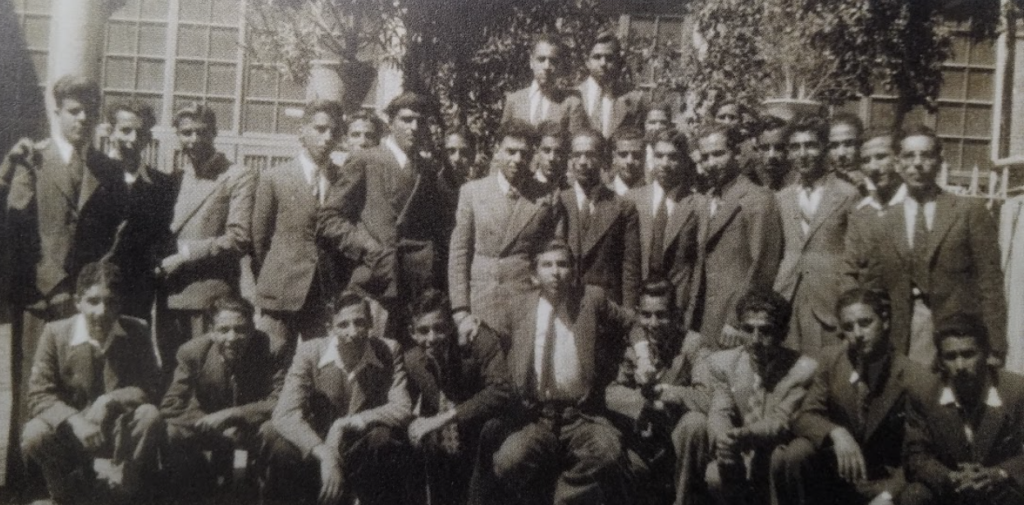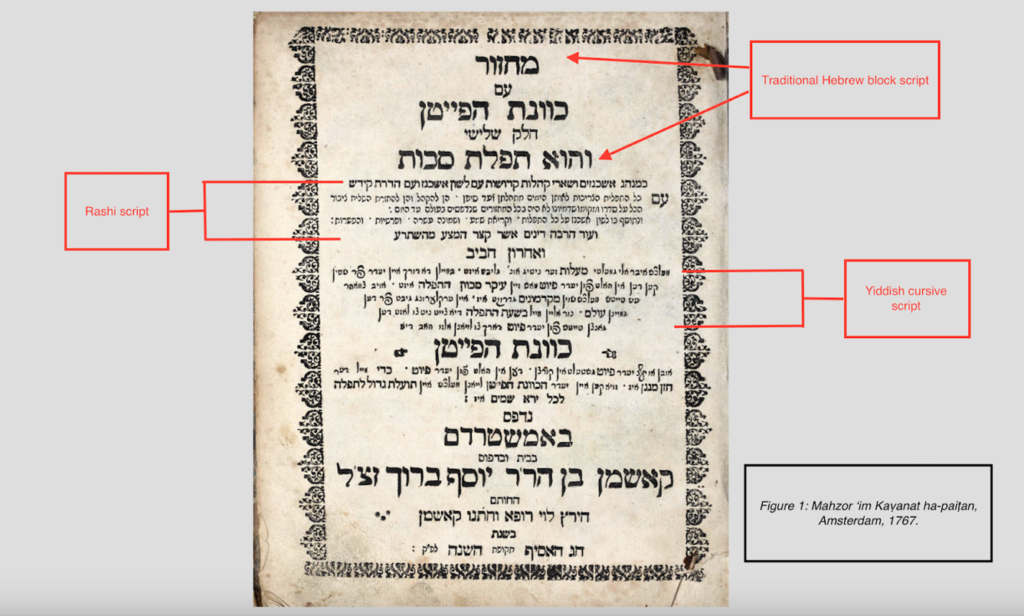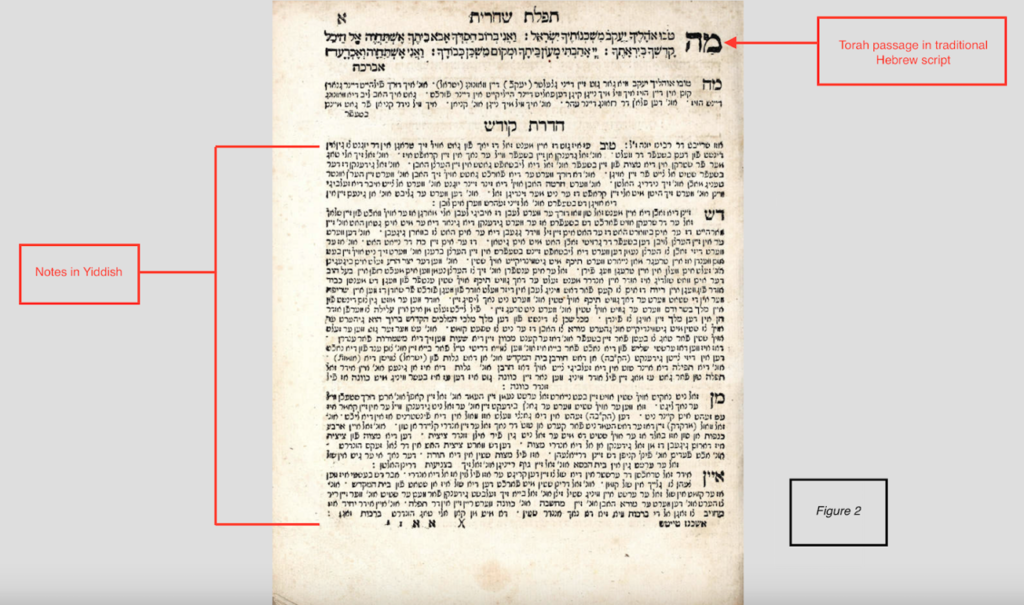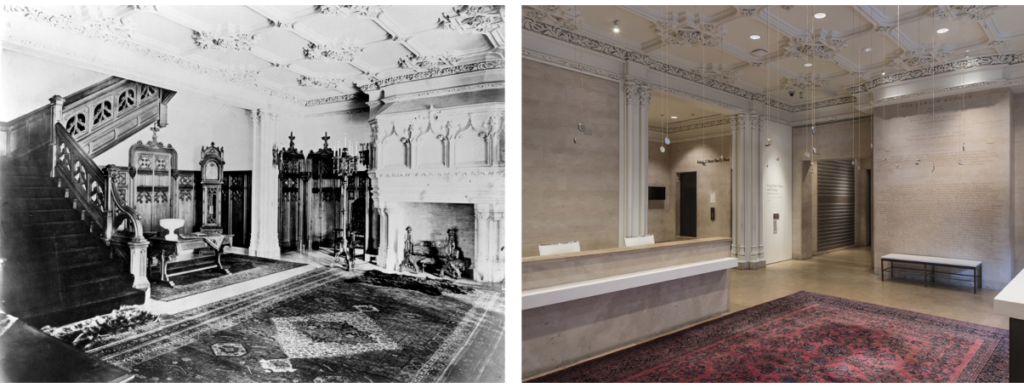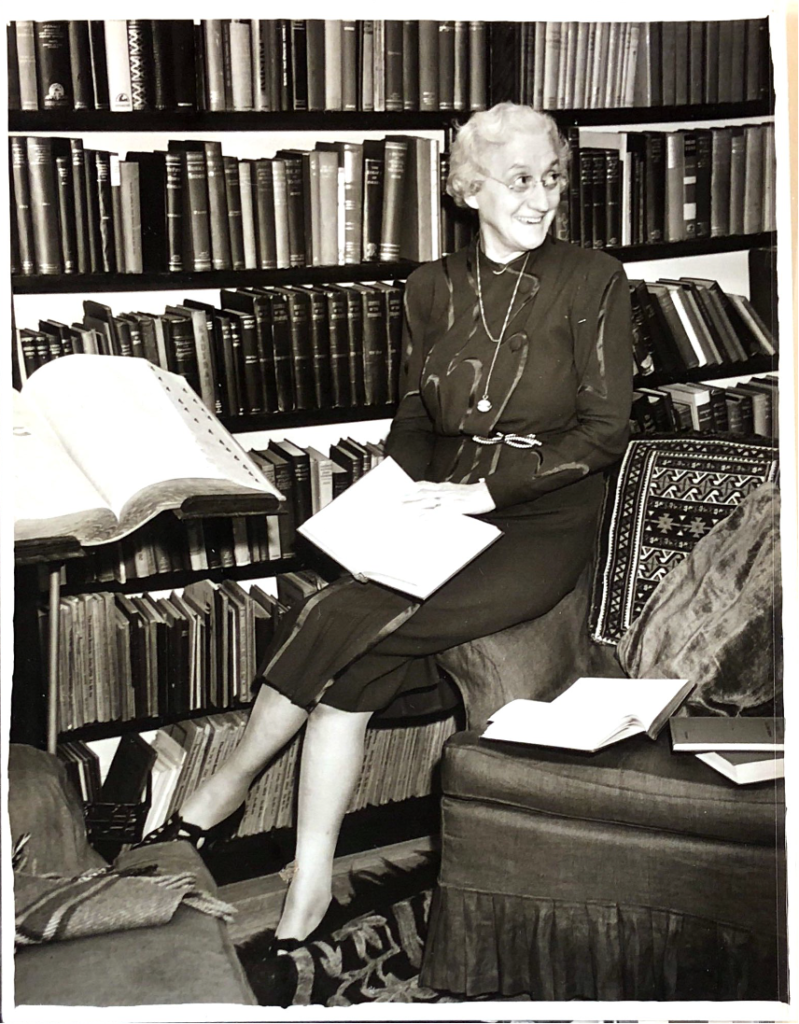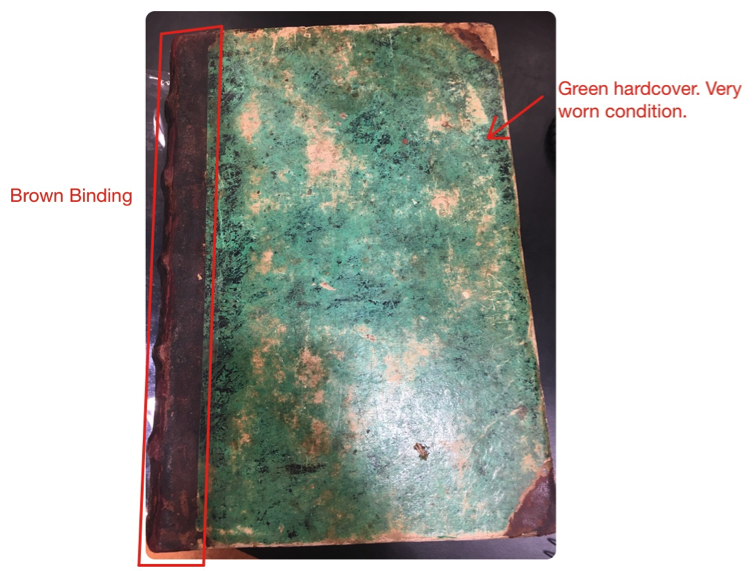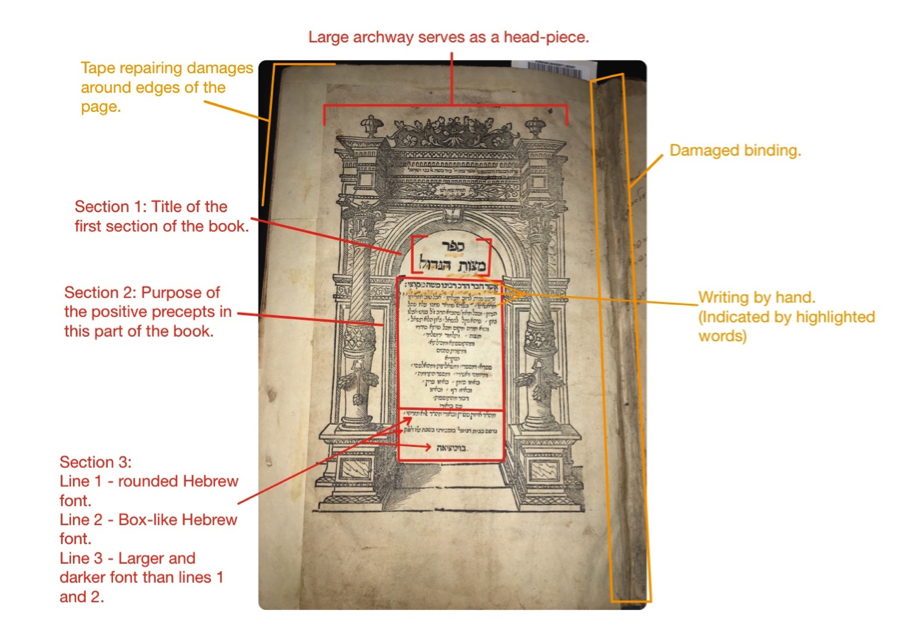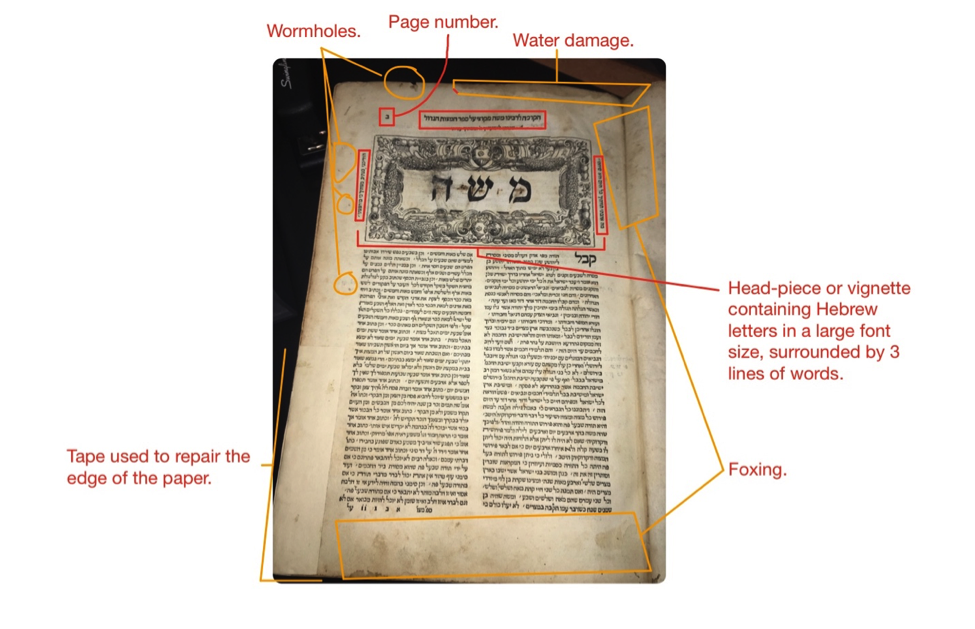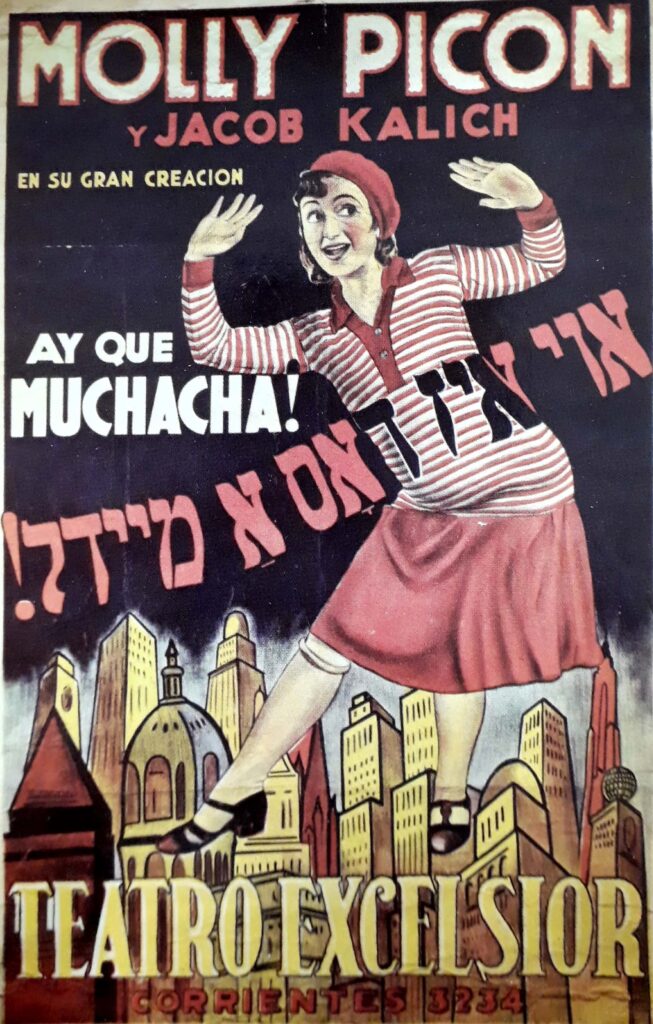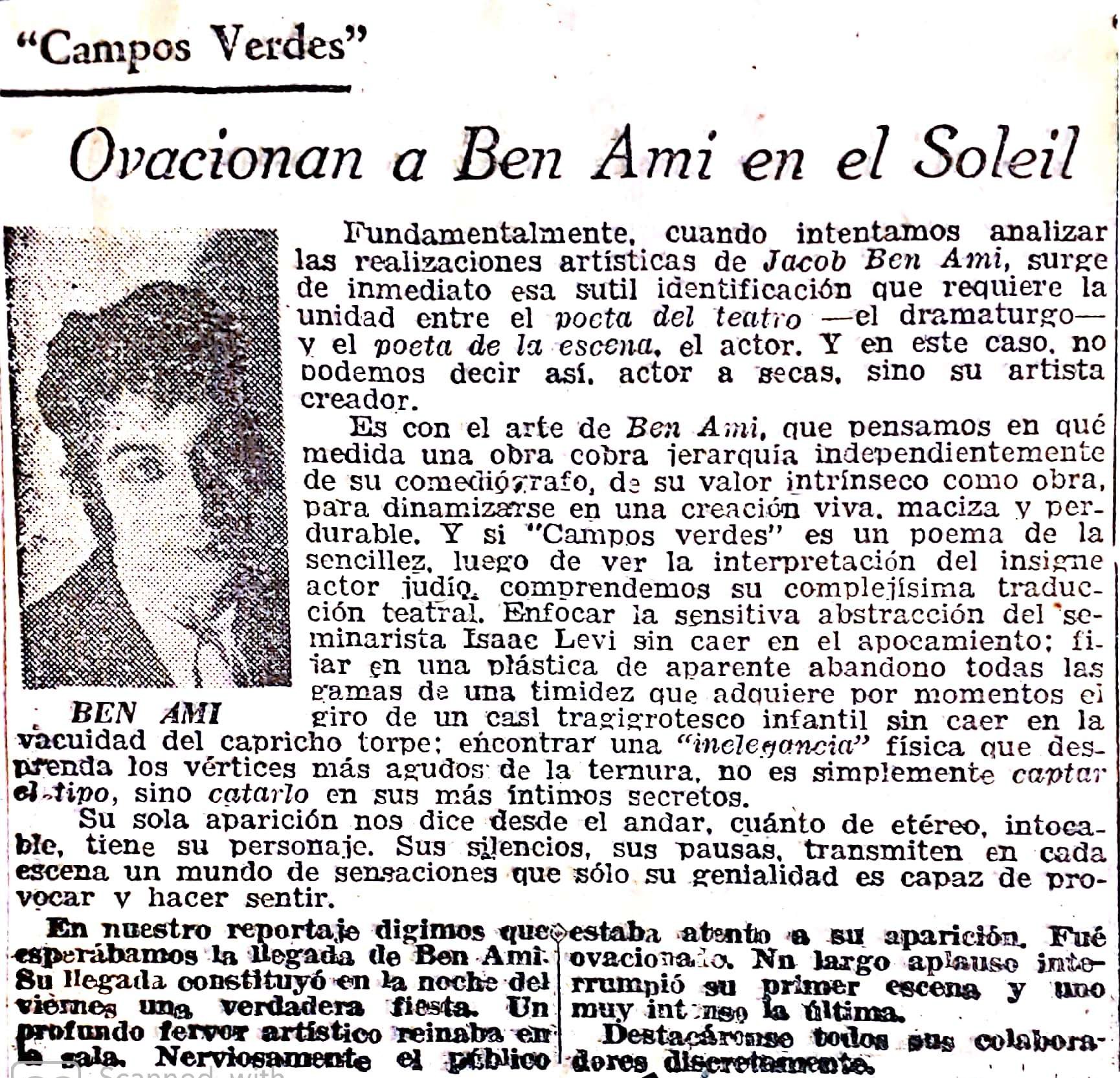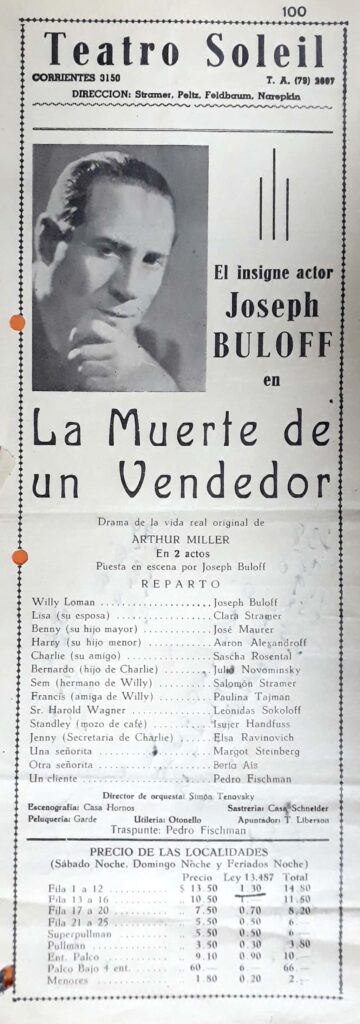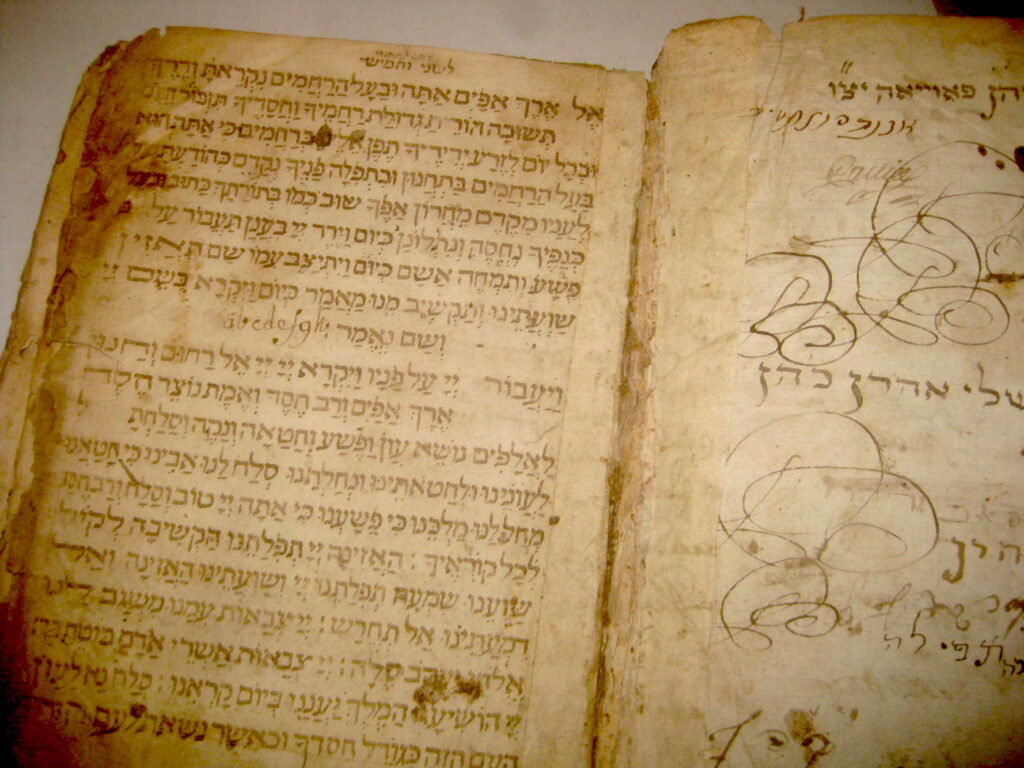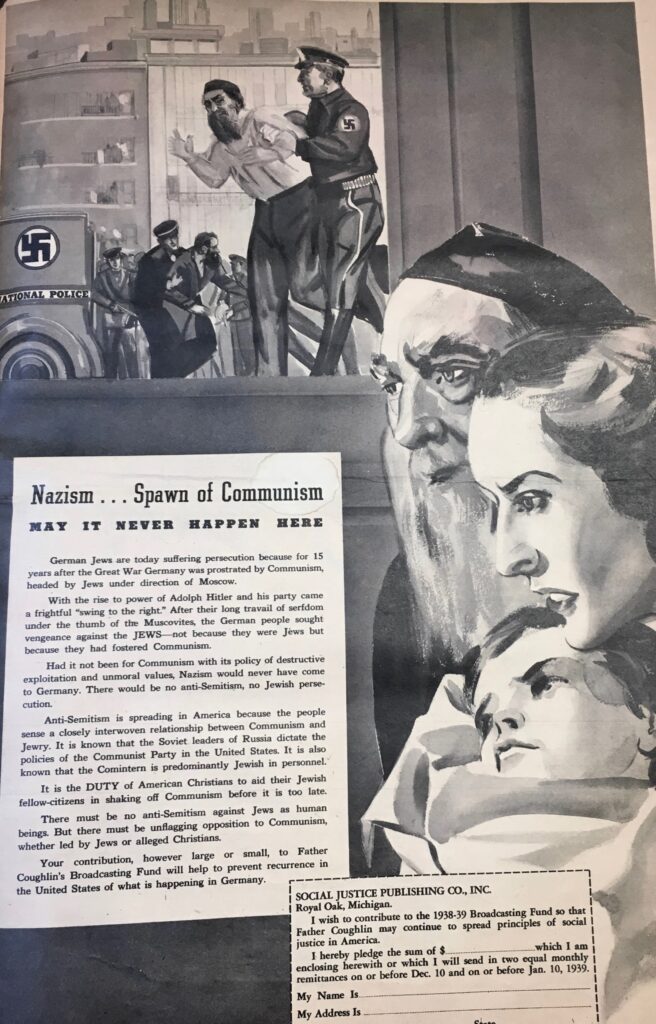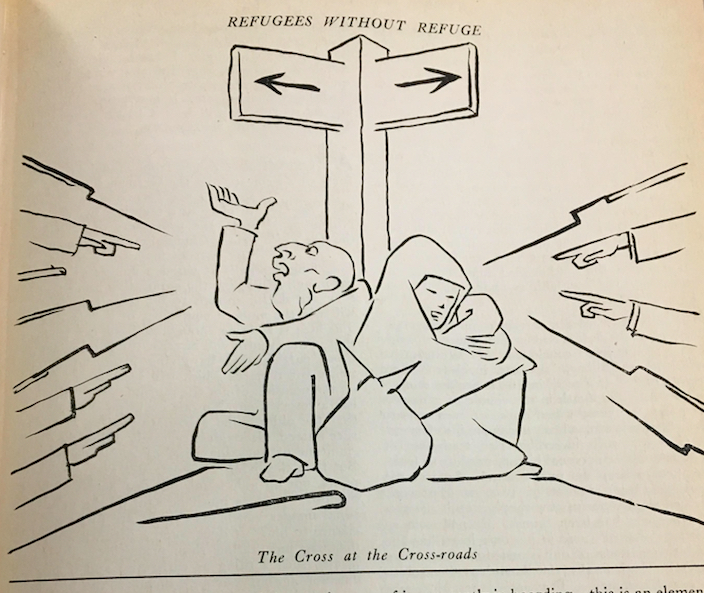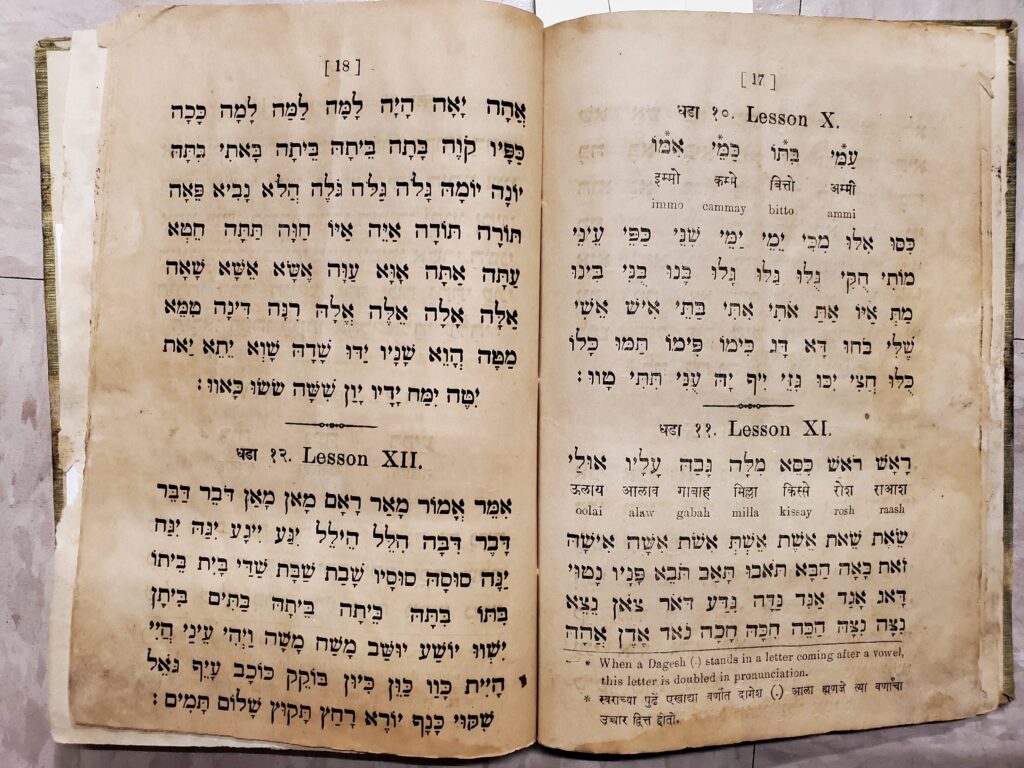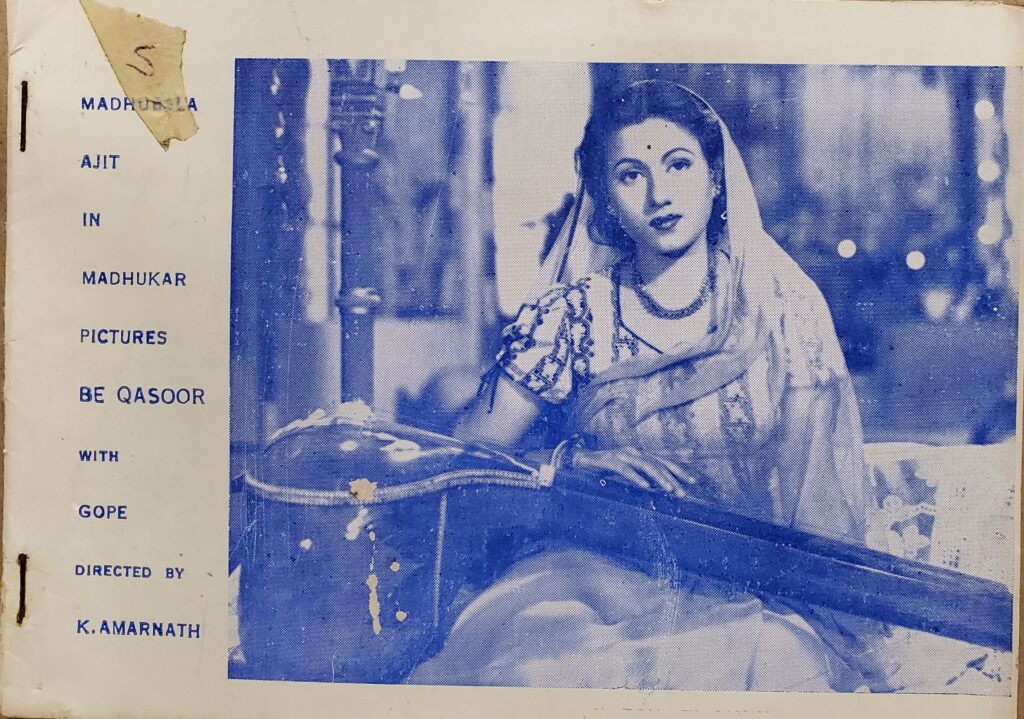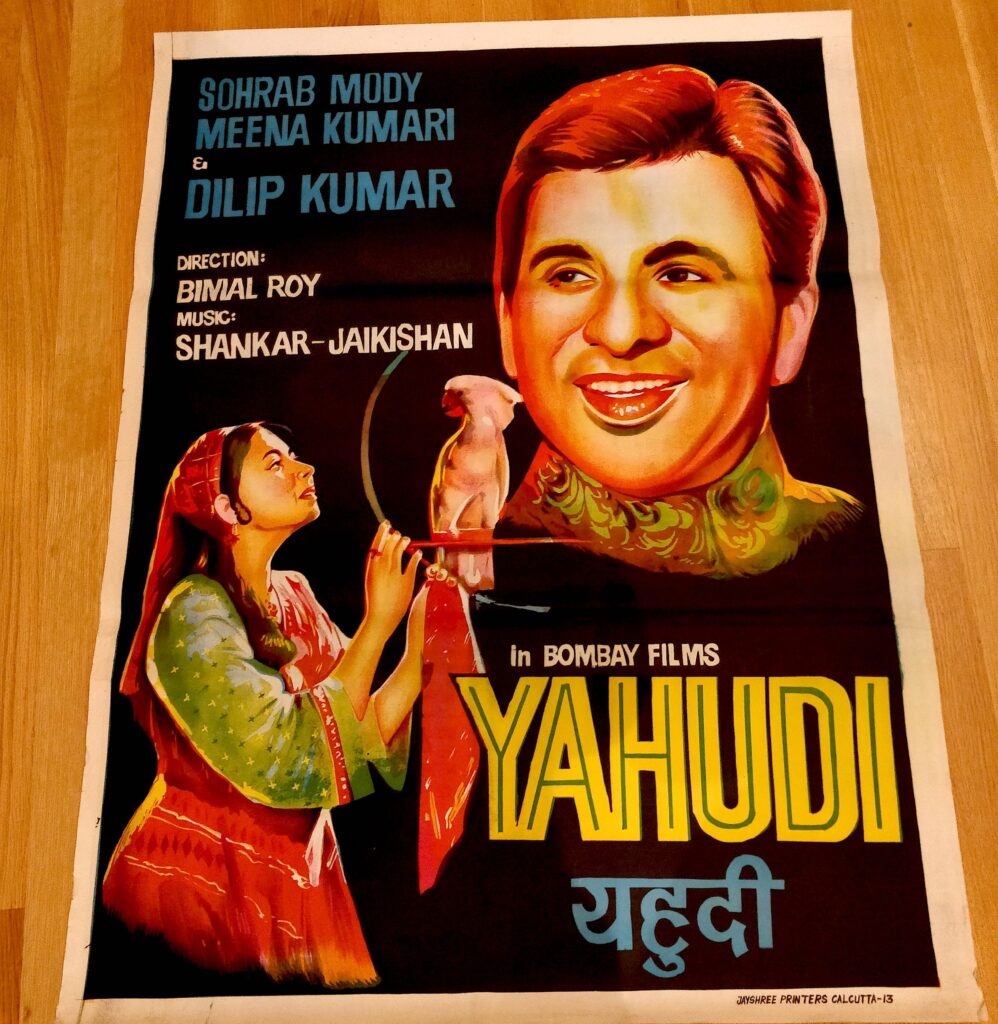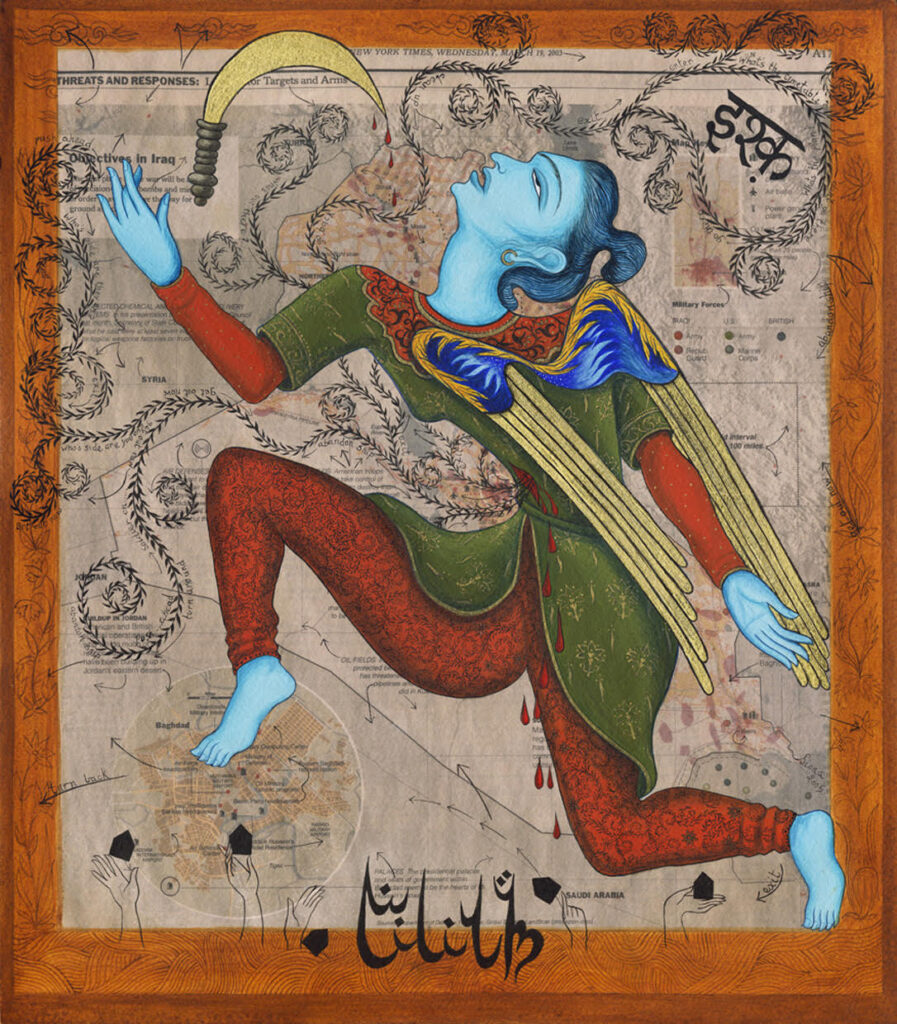Curated by Miriam Krakowski FCRH’27
Since 2015, Fordham has been building a collection of rare Judaica that is housed in the Special Collections and Archives at the Walsh Family Library. The collection has now hundreds of items, from early Hebrew printed books through contemporary ephemera, and everything in between. Among the many items are over 150 haggadot. For this year’s Passover, Miriam Krakowski FCRH’27 curated an exhibit that explains all steps of the Passover seder through the haggadot in our collection. The exhibit will run until early May.
Part I: Passover Seder
The Passover seder is one of the most important nights of the Jewish year. Passover commemorates the redemption of the Jewish people from Egypt, as told in the Book of Exodus. The Seder, which in Hebrew means “order”, is a night of tradition, carefully structured around the guidebook called the Haggadah. The central idea of the night is inherent in the word Haggadah, which comes from the root word “to tell”. The Passover seder is a night that revolves around the retelling of the Passover story and the transmission of the tradition to a new generation.
Over centuries, the Haggadah has been translated into many languages and presented in many different ways, reflecting times and places, yet the core, structure, and ideas have remained the same, even if sometimes, especially in more recent decades, the text may have been adjusted.
The Seder begins with an introduction to the structure of the night. The participants traditionally sing the 15 steps of the Seder before beginning. They then start the actual Seder with Kadesh, which is the blessing over the first cup of wine. Over the course of the night, four cups of wine will be drunk, each representing an aspect of redemption. Kadesh is followed by Urchatz, the washing of hands, Karpas, eating a vegetable dipped in saltwater, and Yachatz, the breaking of a matza to set aside for later in the Seder.
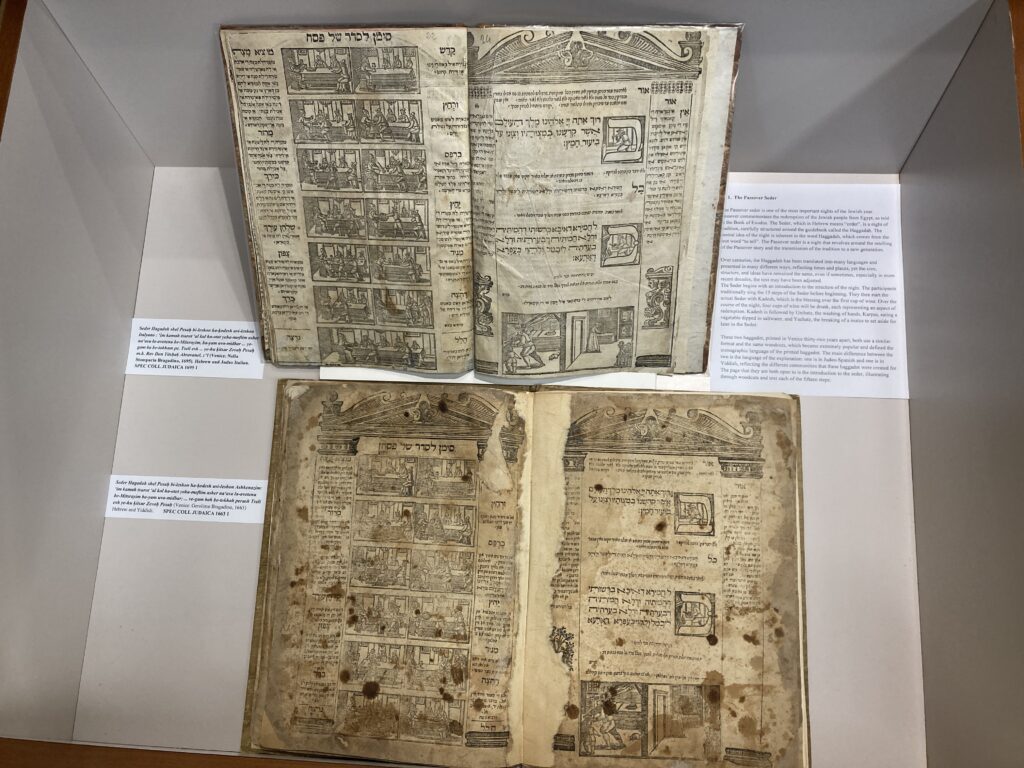
Bottom: Seder Hagadah shel Pesaḥ bi-leshon ha-ḳodesh uvi-leshon Ashkenazim: ʻim kamah tsurot ʻal kol ha-otot ṿeha-moftim asher naʻasu la-avotenu be-Mitsrayim ba-yam u-va-midbar; … ve-gam bah be-tokhah perush Tseli esh ṿe-hu ḳitsur Zevaḥ Pesaḥ (Venice: Gerolimo Bragadino, 1663) Hebrew and Yiddish. SPEC COLL JUDAICA 1663 1
These two haggadot, printed in Venice thirty-two years apart, both use a similar format and the same woodcuts, which became extremely popular and defined the iconographic language of the printed haggadot. The main difference between the two is the language of the explanation: one is in Judeo-Spanish and one is in Yiddish, reflecting the different communities that these haggadot were created for. The page that they are both open to is the introduction to the seder, illustrating through woodcuts and text each of the fifteen steps.
Part II: The Magid: The Main Part of the Seder
The main part of the seder is Magid, the actual retelling. Magid begins with the passage of ha-laḥma anyia: “this is the bread of affliction.” The Seder is a community celebration that includes family, friends, and those who do not have a place to celebrate Passover. In this passage, all who do not have a place to celebrate the seder are invited to come and join:
This is the bread of affliction which fathers ate in the land of Egypt. Let all who are in want to come and eat. Let all who are needy come and celebrate the Passover. This year here; next year in the land of Israel. This year here, we are slaves; next year in the land of Israel, free men.
Once all have been invited, the retelling begins with the asking of questions. The central theme of the Seder is the commandment of ve-higadita le-binkha to tell the children of the miracles of the exodus. Following this theme, the children begin the Seder with the asking of four questions, that are then answered over the course of the night. The questions, traditionally recited by the youngest child present, concern why this night is different from the other nights of the year, mah nishtanah ha-laylah.
Why is this night different from all other nights? On all other nights, we eat either leavened or unleavened bread; tonight only unleavened bread. On all other nights, we eat all kinds of herbs; tonight bitter herbs. On all other nights, we do not dip even once; tonight twice. On all other nights, we eat either sitting or leaning; tonight we all lean.
The children’s questions are answered in the next passage with the words ‘avadim hayinu, “we were slaves in Egypt”:
We were slaves to Pharaoh in Egypt, but the Lord brought us out from there with a strong hand and an outstretched arm. And if the Holy One, blessed be he, had not brought our fathers out of Egypt, we, our children, and our children’s children would still be enslaved to Pharaoh in Egypt.
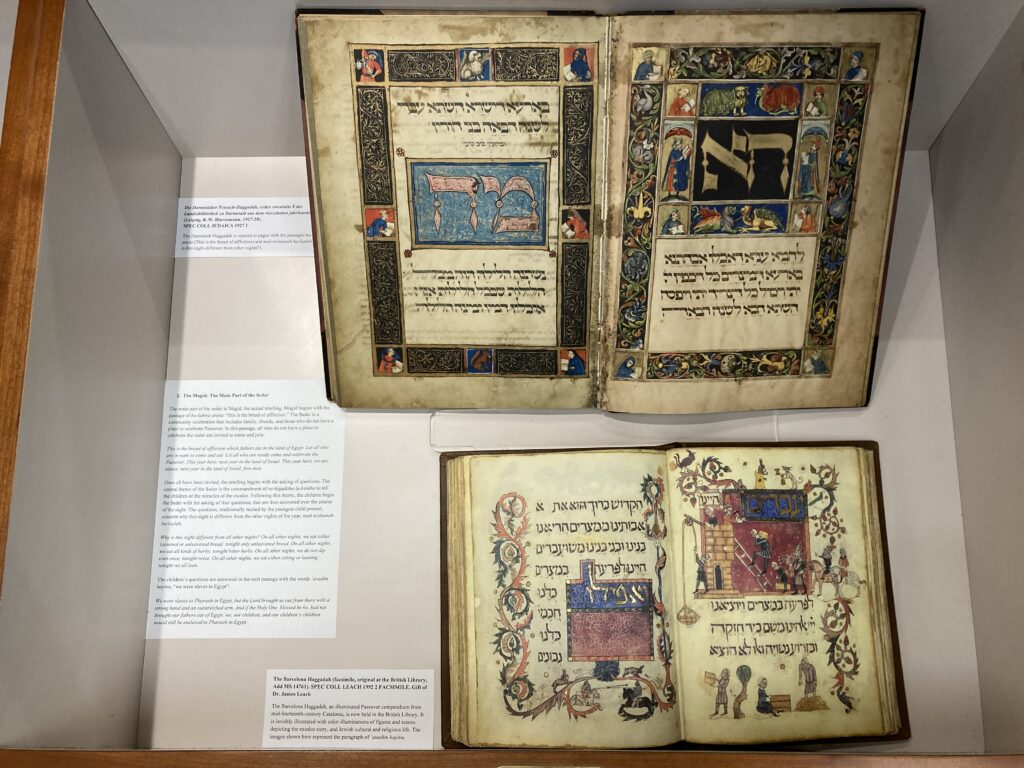
Bottom: The Barcelona Haggadah (facsimile, original at the British Library, Add MS 14761). SPEC COLL LEACH 1992 2 FACSIMILE. Gift of Dr. James Leach
The Darmstadt Haggadah, a fourteenth-century haggadah from Germany, is opened to pages with the passages ha-laḥma anyia (This is the bread of affliction) and mah nishtanah ha-laylah (Why is this night different from other nights?).
The Barcelona Haggadah, an illuminated Passover compendium from mid-fourteenth-century Catalonia, is now held in the British Library. It is lavishly illustrated with color illuminations of figures and scenes depicting the exodus story, and Jewish cultural and religious life. The images shown here represent the paragraph of ‘avadim hayinu.
Part III: Setting the Stage for the Passover Story
This part focuses on the tradition of disseminating and contextualizing the Passover story. The text of the haggadah here emphasizes the centrality of the Passover story in Judaism and the importance of its transmission. It mentions rabbis and children discussing the meaning and details of the story.
Five Scholars Who Learned in Bnei Brak: This section stresses the importance of the night and of the retelling of the Passover story by telling of five scholars who were discussing, according to the Haggadah, “the Exodus from Egypt all night, until their disciples came and said to them, ‘Masters, the time has come to recite morning prayers.” Illustrated here by Sefer Abudarham (Venice, 1547)
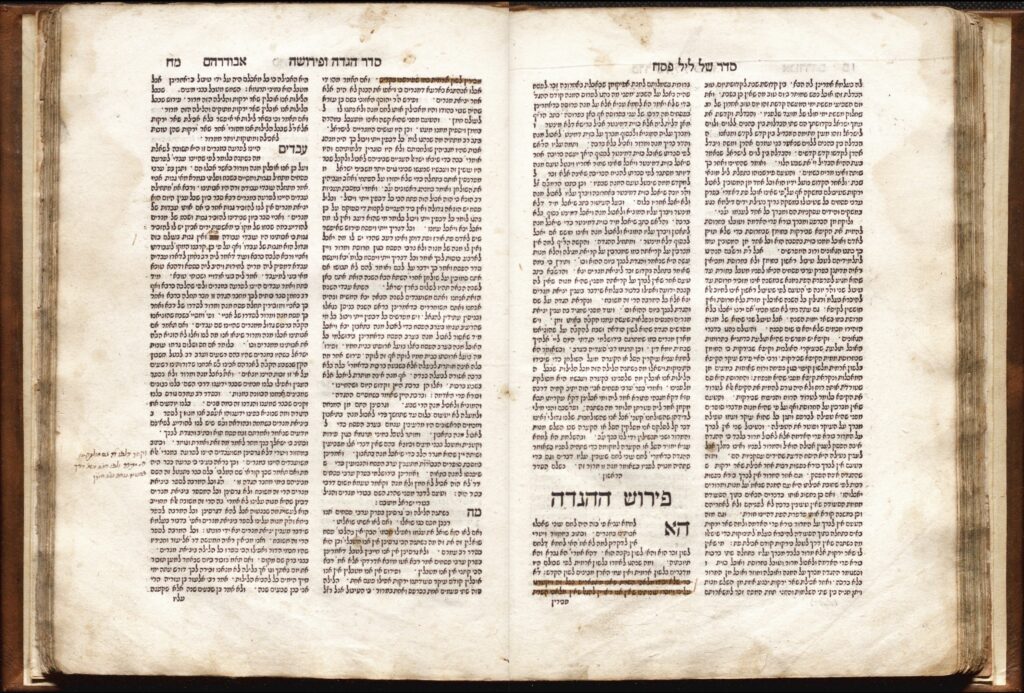
This 14th-century commentary on the siddur (prayerbook) includes a section with the commentary on the haggadah. The pages are open showing the commentaries on the previously discussed sections of the seder–ha-laḥma anyia, mah nishtanah ha-laylah, ‘avadim hayinu–and end, at the bottom left, begins the commentary on the section with the five scholars who studied the Passover story “their disciples came and said to them, ‘Masters, the time has come to recite morning prayers.” Fordham’s copy of the Sefer Abudarham was examined by several Christian censors, whose signatures are in the back of the book. You can read more about this in a three-part study: https://fordh.am/1lw
The Four Sons: four sons who ask questions about the Passover story. The sons are representative of four categories of people, and we discuss the way in which the story should be given over to them. These four sons are: the wise, the wicked, the innocent, and the one who does not even know enough to ask, as shown here in the haggadah published in 1765 in Fürth.
Miteḥilah ovedei avodah zarah hayu avoteinu: “In the beginning our forefathers were idol worshipers…”. Over the course of the Seder, the Passover story is retold multiple times, each time highlighting a different aspect of the redemption. Here, the story of the Jewish people’s descent into slavery and eventual redemption begins with the patriarch Abraham and recounts how he rejected his father’s teachings and idolatry and followed God. From him came Issac and Jacob, and Jacob’s sons went down to Egypt. In this way, the Passover story also becomes the telling of the birth of the Jewish people as a nation.
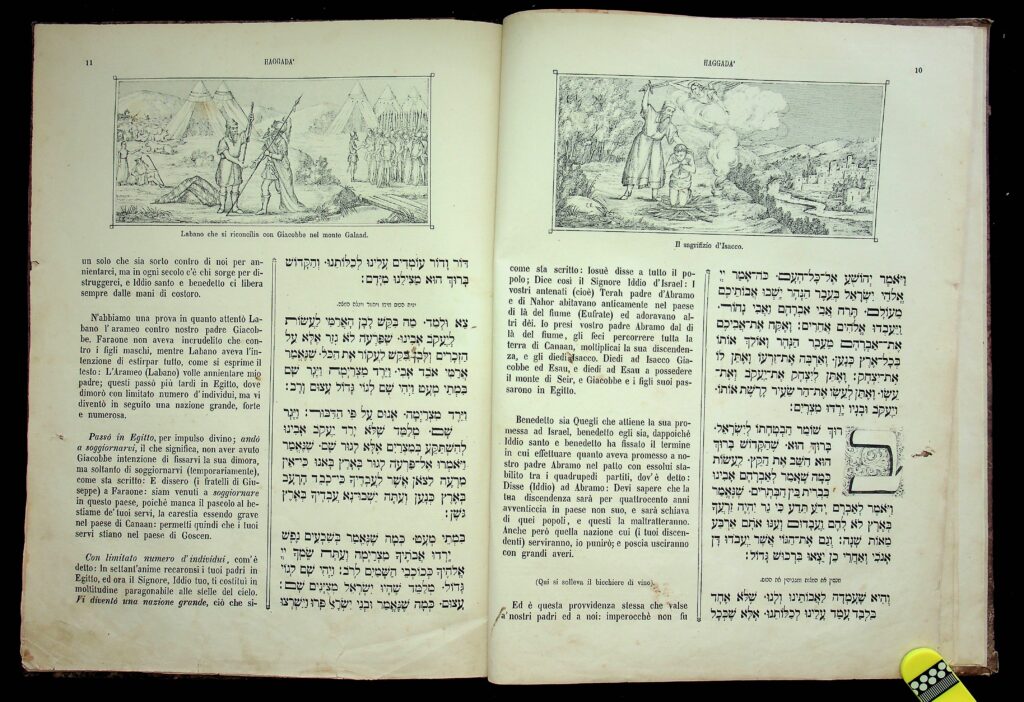
The illustrations in this haggadah were produced by lithography. The drawings are the work of the renowned artist K. Kirchmeyer and the printing with copper lithographic plates was done at the press of R. Yonah Cohen of Trieste. The passage shown here is the passage of Miteḥilah ovedei avodah zarah hayu avoteinu, “In the beginning, our forefathers were idol worshipers…”. The image pictured is the binding of Isaac by his father Abraham, a scene from the Book of Genesis that symbolizes Abraham’s absolute devotion to God.
PART IV: An Eternal Story
The next passage ve-hi she-’amdah, “and it is this that has stood,” brings the narrative of miraculous salvation from ancient Egypt into a larger, eternal storyline.
This is the promise that stood firm for our fathers, and also for us. Because it is not just a single man that has risen up against us to destroy us. But in every generation, men rise up to destroy us. But the Holy One, blessed be he, has delivered us from their hands.
The haggadot on this shelf were all produced in the years directly following World War II, and they appropriately tie this passage to the horrors of the Holocaust. This Passover these passages resonate as well. Some of the non-traditional haggadot followed the structure of the seder even if they changed the specific content. In this section we can see Hagadah shel Pesaḥ le-yeladim (New York: Shilo Publishing House, 1945), in Hebrew and English (SPEC COLL JUDAICA 1945 2.) This children’s haggadah was printed in New York the same year as the end of World War II. The illustrations, drawn by Siegmund Forst, draw upon periods of Jewish persecution throughout history, but particularly focus on the Holocaust. This is particularly apparent in this image, placed next to the passage of ve-hi she-‘amdah.

This is an example of a secular, socialist haggadah issued in Merḥavia by Kibbutz Arẓi, a federation of 85 kibbutzim founded by a Zionist youth movement “Ha-Shomer Ha-Ẓair”. This is not a traditional haggadah, but rather incorporates passages and language from the haggadah into modern poetry. The page that this haggadah is opened to speaks of reminding each generation to see themselves as if they, not just their forefathers, were slaves in Egypt, as well as the passage of “vihi she’amdah” . The iconography here evokes the death camps during WWII: barbed wires, striped outfits, and freedom in Israel. Another haggadah displayed alongside these is Hagadah shel Pesaḥ (Ḳibuts ha-artsi ha-shomer ha-tsaʻir, Ṿaʻadat ha-ḥagim, 1947) SPEC COLL JUDAICA 1947 2, which is another example of a non-traditional kibbutz haggadah, similarly portraying imagery from the Holocaust.
PART V: The Story of the Exodus
At this point of the seder discussed are the details of the Passover story, starting from the descent into Egypt and ending with the ten plagues and the actual exodus. Here, the exodus is told as a cohesive storyline, with explanations and additional information for each piece of the story.
tze u-lemad, “Go and learn”: The Passover story is retold again, this time as it is told in the Hebrew scriptures of the Bible. Each passage from the text is expounded upon and explained in full detail.
The Makkot, or the ten plagues: The ten plagues are recounted. As each one is said, it is traditional for each member of the Seder to remove a drop of wine from their full glass. The common explanation for this custom is that we should not rejoice in the suffering of our enemies, and therefore our joy should be lessened somewhat. The two illustrated haggadot, one from 1765, Amsterdam, and the other from 1813, Vienna, each show the makkot, the ten plagues. Note the proliferation of wine stains on this page, reflecting the custom of spilling wine from the cup while reciting each one of the plagues.

This haggadah is open on the section tze u-lemad, “Go and learn”: The Passover story is retold again, this time as it is told in the Hebrew scriptures of the Bible. Each passage from the text is expounded upon and explained in full detail.
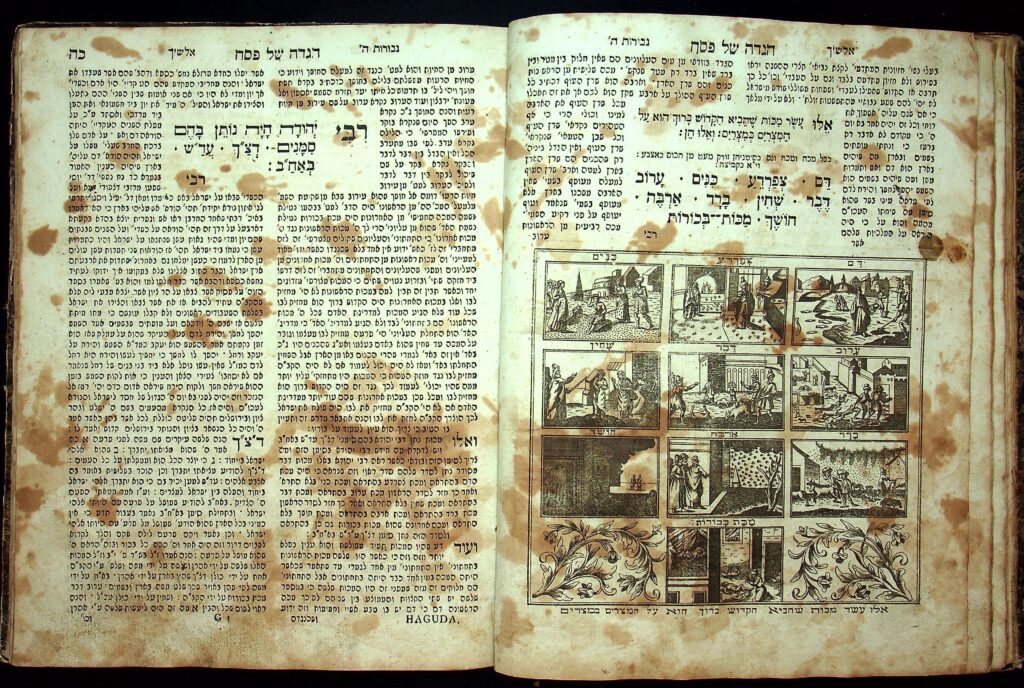
This haggadah and the 1765 Amsterdam haggadah (not shown here) are open to the page showing the makkot, the ten plagues. Note the proliferation of wine stains on this page, reflecting the custom of spilling wine from the cup while reciting each one of the plagues.
The two haggadot from Vienna displayed here are new acquisitions. They capture a moment in Viennese Jewish history. Jews were expelled from Vienna in 1670 and, unofficially, allowed back in the eighteenth century. By 1795, a Hebrew press was established in Vienna, but not by Jews. The printer of these haggadot was Anton Schmid, a Christian printer of Hebrew books. Schmid began his career at the imperial printing house of Josef von Kurtzbeck, who was commissioned by Emperor Joseph II to establish a Hebrew printing press. Each copy printed by the press had to be deposited in the Imperial Library. In 1800, the emperor banned the importation of Hebrew books.
PART VI: Dayenu
One of the most important parts of the Passover seder and the haggadah is the prayer Dayenu. It expresses thanks God for all of the good that he did for the Jewish people in Egypt. It is structured as a series of events, and at each one we say that even if this was all that He had done for us, “dayenu” “it would have been enough.” The haggadot displayed here are open on the dayyenu prayer. They span centuries and geographies: a facsimile of medieval Ashkenazi haggadah known as the “bird’s head” haggadah because Jewish characters are depicted with bird’s heads, then is a haggadah from the World War II era, published in Casablanca, Morocco, and, finally, on the left, an American Braille haggadah.

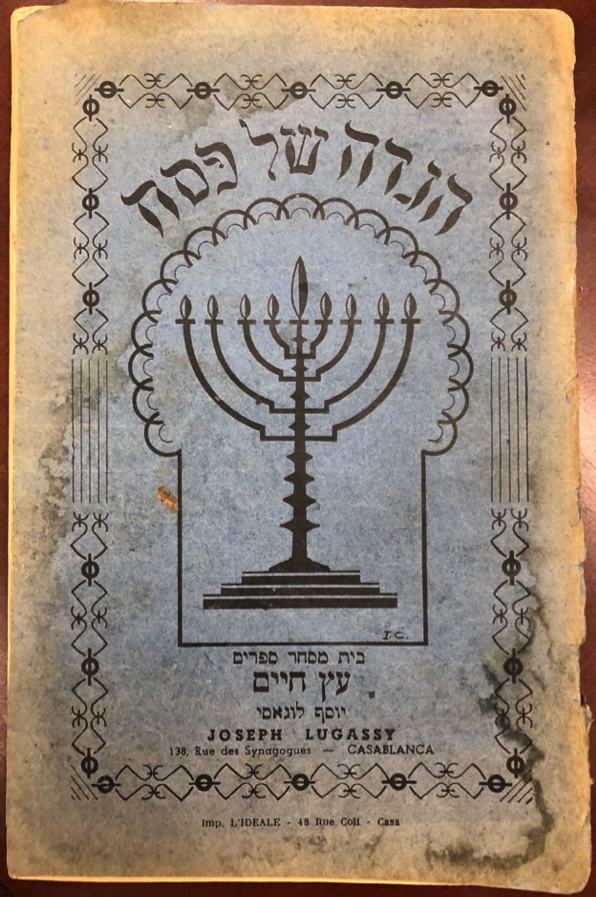
This haggadah was printed just before Casablanca became a waystation for French Jewish refugees, trying to escape occupied France. Morocco was under Vichy rule and many of the anti-Jewish laws were applied to Jews in Morocco at the time. The film “Casablanca” (1942) captures that moment.

PART VII: Passover in Practice
At this point in the seder, Magid begins to draw to a close. The last passages of Magid deal with Passover as a holiday, and the practical rituals that have been established to commemorate the exodus. The haggadah names three things that are central to Passover: Pesach, Matzah, and Maror.
Pesach is the paschal lamb that was sacrificed while the Temple still stood in Jerusalem. This sacrificial lamb symbolized the lamb that the Israelites slaughtered before the Exodus in Egypt (Exodus 12). Though the Temple was destroyed in 70 CE and the paschal lamb is no longer offered, it is still commemorated at the seder.
Matzah is unleavened bread, consisting only of flour and water and baked within eighteen minutes from when the flour was mixed with the water. On Passover it is forbidden to eat, or even to possess grain products that took longer to bake than eighteen minutes. The matzah traditionally represents the fact that when the Israelites left Egypt, they left in such a hurry that their bread did not have time to rise.
Maror is the bitter herbs, eaten at the seder to commemorate the bitter years of slavery in Egypt.
The haggadah continues to explain that it is incumbent upon every generation to see themselves as if it was they who were among those who exited from Egypt, and because of this Jews praise and thank God for the miracles that occurred. Passages of hallel, the prayer said on holidays to praise God, are recited and the second cup of wine is drunk, bringing Magid to a close.
With Magid now over, the seder moves on to the actual meal. Everybody washes their hands, as is traditionally done before eating bread, and then the matzah is eaten. After the matzah, the maror, bitter herbs, are eaten, and then korech, a sandwich made of maror between two pieces of matzah. After these foods comes Shulchan Orech, literally translating into “a set table”, and at this point the actual meal is served.
Four haggadot are shown here highlight the different parts.
The Haggadah of Passover / edited by David? for members of the Armed Forces of the United States. (New York : National Jewish Welfare Board, 1945). Hebrew with English translation. SPEC COLL JUDAICA 1945 8
This haggadah was created for United States armed forces near the end of World War II. It is filled with handwritten notes and instructions. It is open to the section of pesach, matza, and maror.
The Prato Haggadah (Valencia, Spain : Patrimonio Ediciones, 2007) SPEC COLL JUDAICA 2007 1
This is the facsimile edition of the Prato Haggadah, an illuminated manuscript Haggadah produced in Spain approximately 1300, currently housed in the Library of the Jewish Theological Seminary under the designation MS 9478. The original manuscript captures the process of manuscript production as it has incomplete illuminations, as can be seen on this page. The haggadah is open to the illustration showing the matza–incomplete but still magnificent example of medieval illuminations.

Haggadah shel Pesaḥ–Kol Yisrael ḥaverim: Paskhal’noe skazanye (Elizabeth, NJ, 1970). First edition. New acquisition. OCLC 21698420.
This pocket-size edition of the Passover Haggadah was printed in Hebrew and Russian on opposite pages. Though Fordham’s copy is missing the cover, it was published by Rabbi Pinchas Mordechai Teitz (1908-1995) for “the American and Canadian tourist in Russia.” for bringing this Haggadah into the Soviet Union. Given that practicing Judaism was restricted within the Soviet Union, this haggadah was purposely small and unlabeled on the outside, designed to escape notice. The tiny volume also includes a calendar of Jewish holidays from 1970 until 1979.
The haggadah is open to the passage saying that every generation must see themselves as if they were saved from Egypt.
Hagadah shel Pesaḥ … = Haggādā śela pesāha athava balhāṇḍaṇasaṇāceñ nirūpaṇa, The Institution of Passover (Puṇẽ : Mośe Yākoba Taḷakara va Āhārona Dāniyala Taḷakara, 1874). Hebrew and Marathi. SPEC COLL JUDAICA 1874 1
This is the second edition of the haggadah that was printed in India. The illustrations that it is open to represent the next stages of the seder: Raḥatz, Motzi, Matzah, Maror, and Korech.

Part VIII: The Conclusion of the Seder
As the meal concludes, participants in the seder eat a final piece of matzah, the afikomen, that had been set aside earlier in seder by Yachatz. This stage of the seder is tzafon. It is traditional for the children to have stolen the afikomen at some point during the seder, and now they bring it out and bargain for prizes and treats, refusing to give it back otherwise. This custom is intended to keep the children awake throughout the long seder – with something to look forward to at the end of the seder, the children will be less likely to disappear.
After tzafon comes barekh, the blessings said after meals. These passages are the same as the ones said after every meal, yearlong, but here there is an addition at the end. At the end of these blessings, the third cup of wine is drunk and the passage of shefokh ha-matkha is recited. Shefokh ha-matkha asks that God avenge Himself upon His enemies and upon those who stand against the Jewish people.
The next stage of the seder is hallel, half of which was already recited at the end of Magid. Here, the passages praising God are completed, with some additions not said during the rest of the year. The final cup of wine is drunk, and the seder comes to an end with the passage of “Hasal Siddur pesach”
The Pesaḥ service is finished, as it was meant to be performed, in accordance with all its rules and laws. Just as we have been privileged to lay out its order, so may we be privileged to perform it [in the Temple]. Pure One, dwelling in Your heaven, raise up this people, too abundant to be counted. Soon, lead the shoots of [Israel’s] stock, redeemed, into Zion with great joy.
The final line of the seder is le-shanah ha-ba’ah bi-yerushalayim, “next year in Jerusalem”, asking that next year the seder will be celebrated properly in the rebuilt Temple, with the coming of the Messiah. In modern times, the word “ha-benuyah,” “rebuilt” has been added to this line, acknowledging that though Jews have access to the city of Jerusalem, their prayers are still not fulfilled, as they still lack the Messiah and the rebuilt Temple.
Shown at the exhibit are three haggadot: Haggadah shel Pesah, (DP Camp, Fernwald/Föhrenwald, 1946) Hebrew, and some Yiddish. Illustrated; stained and worn (SPEC COLL JUDAICA 1946 11), Haggadah ereẓ-israelit (Tel Aviv: Sinai, 1948), Hebrew, with photos. (SPECIAL COLL JUDAICA 1948 1), and a facsimile of the Floersheim Haggadah, 1502 (Israel Museum, numbered limited edition), a new acquisition.

This haggadah was published in the Displaced Persons Camp in Fernwald (Föhrenwald) in 1946, the first Passover since the end of World War II. Föhrenwald was the third largest Displaced Persons camp in the American zone. It was the last to close, in 1957. The cover shows a domestic scene of Passover seder (left), while inside the back cover is an image by Gustave Dore, with a text in Hebrew: “And he called to Moshe…and he said get up and leave.” Images within are indebted to early modern Haggadot, here the four sons and the ten plagues .The Haggadah’s wine stains show it was used for a Passover seder. The haggadah is open to the page with the section shefokh ha-matkha (“Pour forth thy wrath”), which must have been particularly meaningful in 1946.
This 1948 Haggadah ereẓ-israelit captures a very specific historical moment in time. It was published for Passover in 1948, which took place in late April. Israel declared independence in May 1948. Because the Haggadah was published before the declaration of independence by Israel, the copyright page, held by Sinai Publishing in Tel Aviv, states that the book was “Printed in Palestine”. The section shown at the exhibit asks that next year the seder should take place in a “rebuilt” Jerusalem, le-shanah ha-ba’ah bi-yerushalayim ha-benuyah. This is in contrast to earlier haggadot, including the Floersheim Haggadah, which merely ask for Jerusalem, without the word “rebuilt.”
PART VIII: Nirtza: After the Seder
Though the seder has officially ended, it does not disperse yet. Instead, the participants stay at the table, and sing numerous songs related to the themes of the night. Perhaps the most famous of these songs is Had Gadyah, “one goat”. This song is typically interpreted as representing the supremacy of God above all of creation.
The haggadot shown in this section all contain musical instructions accompanying the songs. Though there are many different tunes used for the passages, these haggadot represent the fact that this part of the seder, along with many other sections, are communally sung with all participants in the seder. Displayed here are haggadot from British Mandate Palestine, Sweden, and Argentina: Haggadah ereẓ-israelit le-pesaḥ = Palestinian Haggadah (Tel Aviv, Palestine: Jacob Smilansky, 1938) in Hebrew and English. With photos (Palestine Publishing Co., Tel-Aviv , 1938) SPECIAL COLL JUDAICA 1938 1. Haggada: Seder ha-Hagadah le-lel shimurim : berättelse om Israels uttåg ur Egypten för de båda första påskaftnarna (Stockholm: Kungl. Boktryckeriet P. A. Norstedt & Soner, Offsettryck, 1934), SPEC COLL JUDAICA 1934 3; and Narración de la Pascua (Buenos Aires : Fundación para el fomento de la cultura Hebrea, 5706, 1946) Hebrew and Spanish. SPEC COLL JUDAICA 1946 5.
The final case in the exhibit shows children’s haggadot. The Passover seder is centered around the commandment ve-higadita le-vinkha, “and you shall tell your children” (Exodus 13:8). This central theme is present throughout the seder. Engaging children is part of the seder and can be seen in the haggadot across centuries. In modern times, especially, haggadot designed for children have been published. Two such haggadot are shown here, one recent, from 2019, and one from 1937.

This modern haggadah was created as a graphic novel, with imagery aimed at making the haggadah fun and relatable for children. The translations of the passages are seen in text bubbles, spoken by characters who appear throughout the haggadah. Images included are ancient Egyptians standing over workers in cubicles, adjacent to the passage noting that we would still be slaves if not for the miracles of the exodus, scenes from history next to the passage of ve-hi she-’amdah, and this page, which represents the requirement for every member of the seder to see themselves as if they were the one being redeemed.
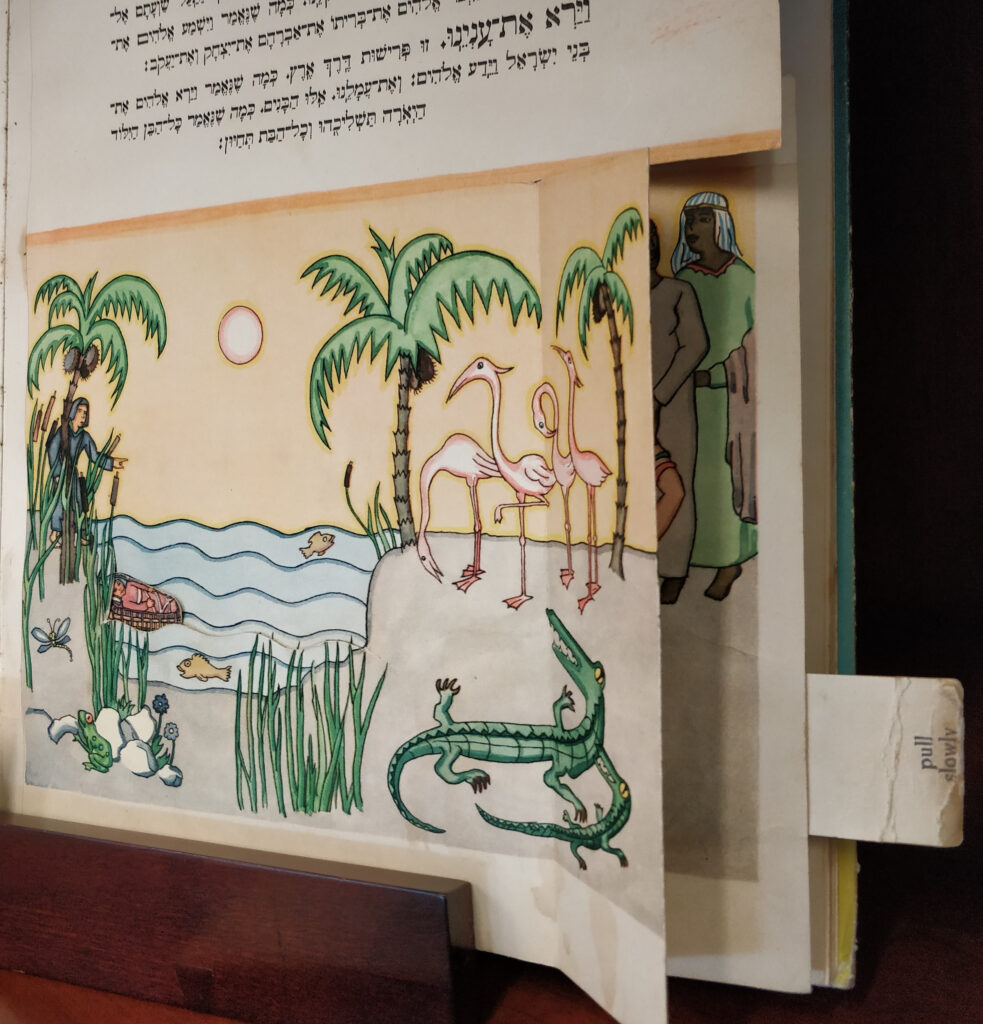
This Haggadah was written and designed for children, with the intention of making the Seder service accessible to younger participants. According to the translators, this was the first Haggadah written specifically for children. In preparing this edition, the editors, as they admit themselves, took some liberties with the Hebrew interpretations to make it easy for children to understand. Several fun illustrations for children include interactive flaps and tabs that move a Baby Moses down the river (below), and a moveable wheel of the ten plagues. These illustrations coupled with a straightforward English translation opposite the Hebrew text make this an engaging haggadah for Jewish children.
The exhibition would not have been possible without the generosity of Eugene Shvidler, whose gift to Fordham’s Jewish Studies program helped start Fordham’s Judaica collection. Over the years, Fordham’s trustees Henry S. Miller, Donna Smolens, Eileen Sudler, Dario Werthein, as well as members of the CJS advisory board, many anonymous donors and friends of the Center helped the collection grow and allowed us to create an internship program that supports student research and exhibit curation at the Walsh Library. We are grateful to the Director of Fordham Libraries, Linda Loschiavo, for her support and to Gabriela DiMeglio and Vivian Shen of the Special Collections and Archives for their tireless support of students’ work and their help with setting up the exhibits.

